Ringway Tech MGP-150 DIGITAL PIANO User Manual
Ringway Tech(Jiangsu) Co.,Ltd. DIGITAL PIANO
User manual
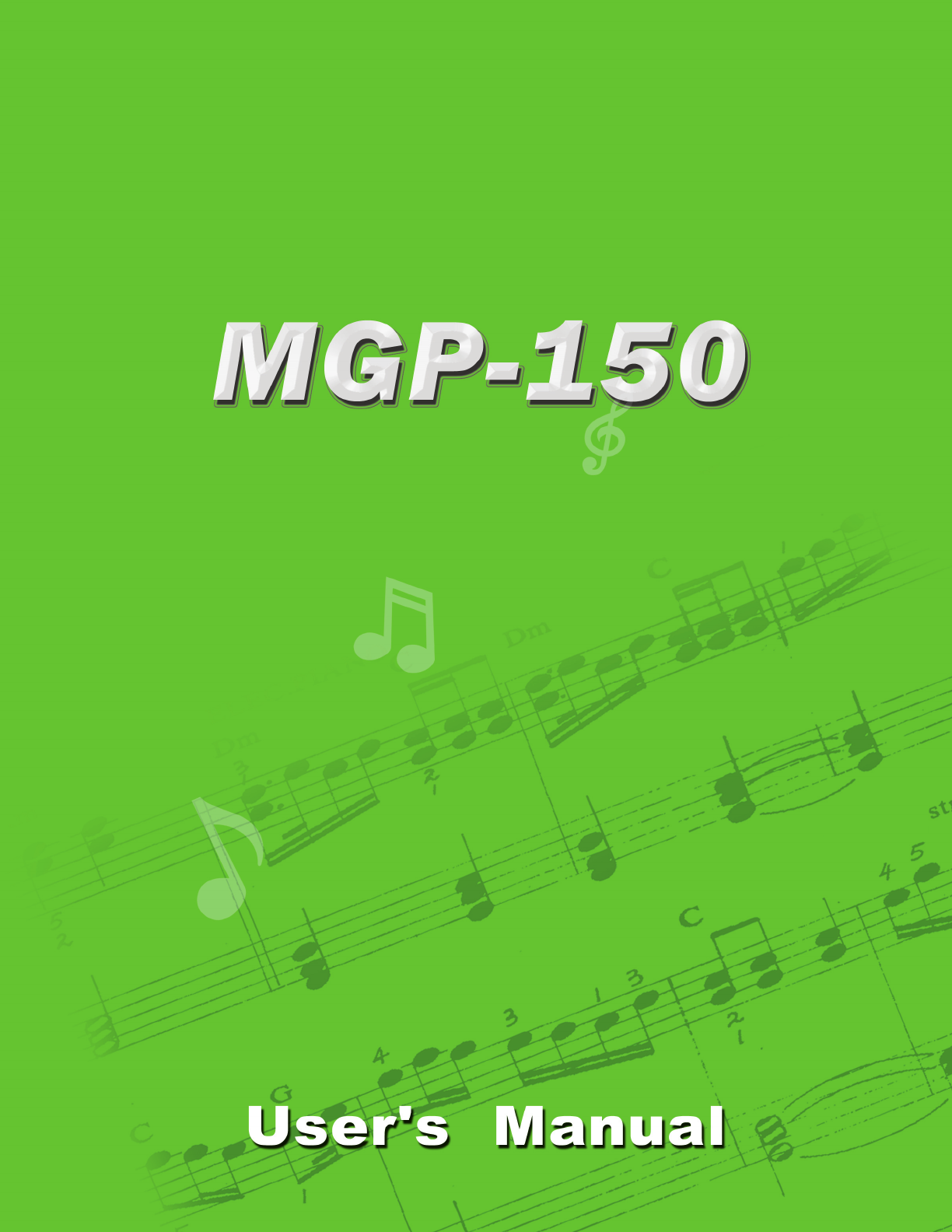
General Precautions . . . . . . . . . . . . . . . . . . . . . 6
Taking Care Of Your Digital Piano. . . . . . . . . 8
Panel Controls. . . . . . . . . . . . . . . . . . . . . . . . . . . 9
Connector Panel. . . . . . . . . . . . . . . . . . . . . . . .17
Piano Pedals. . . . . . . . . . . . . . . . . . . . . . . . . . . .18
Demo . . . . . . . . . . . . . . . . . . . . . . . . . . . . . . . . . .19
Keyboard Voices. . . . . . . . . . . . . . . . . . . . . . . .20
Quick Select . . . . . . . . . . . . . . . . . . . . . . . . . . . . . . .20
Selecting One Of The 138 Voices. . . . . . . . . . . .20
User Dened Quick Selection Button . . . . . . .21
Layer (Dual) Voice . . . . . . . . . . . . . . . . . . . . . . . . .21
Lower Voice. . . . . . . . . . . . . . . . . . . . . . . . . . . . . . . .21
Assigning The Split Point For Voice . . . . . . . . .21
Rhythm Section . . . . . . . . . . . . . . . . . . . . . . . .22
Quick Select . . . . . . . . . . . . . . . . . . . . . . . . . . . . . . .22
Selecting One Of The 100 Styles . . . . . . . . . . . .22
User Dened Quick Selection Button . . . . . . .23
Adjusting The Tempo . . . . . . . . . . . . . . . . . . . . . .23
Starting And Stopping
The Rhythm Style . . . . . . . . . . . . . . . . . . . . . . . . . .23
Variation . . . . . . . . . . . . . . . . . . . . . . . . . . . . . . . . . .24
Fill - In . . . . . . . . . . . . . . . . . . . . . . . . . . . . . . . . . . . .24
Assigning The Split Point For
The Auto Accompaniment . . . . . . . . . . . . . . . . .24
Auto Accompaniment . . . . . . . . . . . . . . . . . .25
Auto Bass Chord Fingering . . . . . . . . . . . . . . . . .25
Single (Intelligent) Mode . . . . . . . . . . . . . . . . . .25
Fingered Mode . . . . . . . . . . . . . . . . . . . . . . . . . . . .26
Fingering Guide . . . . . . . . . . . . . . . . . . . . . . . . . . .27
Piano Chord Mode . . . . . . . . . . . . . . . . . . . . . . . . .28
Manual Bass Chord . . . . . . . . . . . . . . . . . . . . . . . .28
Auto Harmony . . . . . . . . . . . . . . . . . . . . . . . . . . . . .28
Starting And Stopping
The Auto Accompaniment . . . . . . . . . . . . . . . . .28
Variation . . . . . . . . . . . . . . . . . . . . . . . . . . . . . . . . . .29
Fill-In . . . . . . . . . . . . . . . . . . . . . . . . . . . . . . . . . . . . . .29
Assigning The Split Point
For The Auto Accompaniment . . . . . . . . . . . . .29
Metronome . . . . . . . . . . . . . . . . . . . . . . . . . . . .30
Function . . . . . . . . . . . . . . . . . . . . . . . . . . . . . . .31
Reverb Level Setting . . . . . . . . . . . . . . . . . . . . . . .31
Chorus Level Setting . . . . . . . . . . . . . . . . . . . . . . .32
Touch . . . . . . . . . . . . . . . . . . . . . . . . . . . . . . . . . . . . .32
Changing The Split Point For
Lower Voice. . . . . . . . . . . . . . . . . . . . . . . . . . . . . . . .33
Changing The Split Point
For Auto Accompaniment . . . . . . . . . . . . . . . . . .34
Master Tune . . . . . . . . . . . . . . . . . . . . . . . . . . . . . . .34
Auto Harmony Type Selecting . . . . . . . . . . . . . .35
Record . . . . . . . . . . . . . . . . . . . . . . . . . . . . . . . . .36
Recording . . . . . . . . . . . . . . . . . . . . . . . . . . . . . . . . .36
Playback. . . . . . . . . . . . . . . . . . . . . . . . . . . . . . . . . . .38
Registration Memory . . . . . . . . . . . . . . . . . . .39
Play Along Songs . . . . . . . . . . . . . . . . . . . . . . .40
iPod Dock Instruction. . . . . . . . . . . . . . . . . . .41
SD Card . . . . . . . . . . . . . . . . . . . . . . . . . . . . . . . .42
MIDI . . . . . . . . . . . . . . . . . . . . . . . . . . . . . . . . . . .46
MIDI Implementation Chart . . . . . . . . . . . . . . . .47
Voice List. . . . . . . . . . . . . . . . . . . . . . . . . . . . . . .48
. . . . . . . . . . . . . . . . . . . . . . . . . . . . . . . . . .49
Style List . . . . . . . . . . . . . . . . . . . . . . . . . . . . . . .51
Specications . . . . . . . . . . . . . . . . . . . . . . . . . .52
Warranty . . . . . . . . . . . . . . . . . . . . . . . . . . . . . . .53
Table of Contents
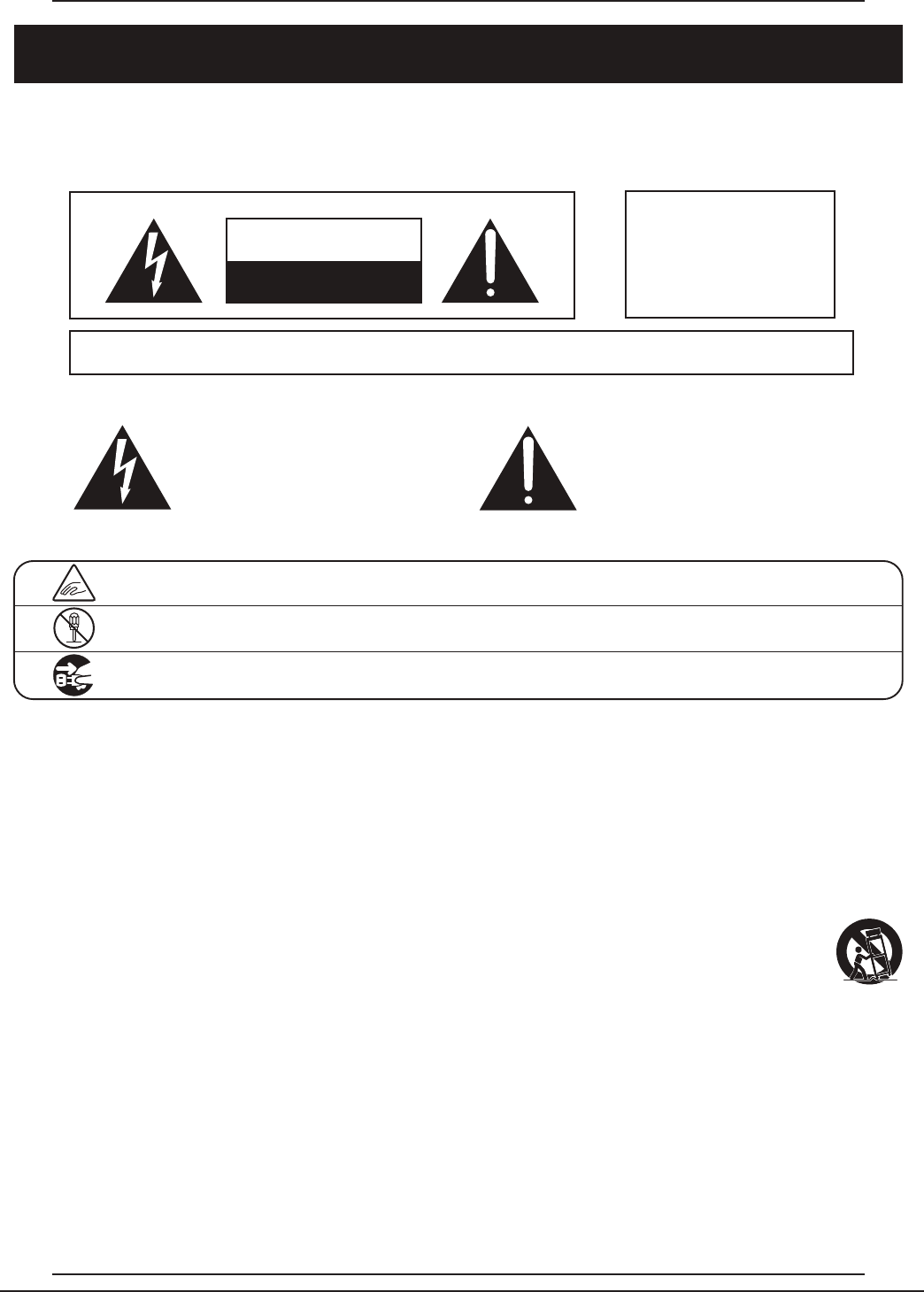
4OWNER’S MANUAL
P
age
4
IMPORTANT SAFETY INSTRUCTIONS
denotes that care should be taken.
The example instructs the user to take care not to allow fingers to be trapped.
denotes a prohibited operation.
The example instructs that disassembly of the product is prohibited.
denotes an operation that should be carried out.
The example instructs the user to remove the power cord plug from the AC outlet.
Examples of Picture Symbols
Read all the instructions before using the product.
CAUTION
RISK OF ELECTRIC SHOCK
DO NOT OPEN
AVIS : RISQUE DE CHOC ELECTRIQUE - NE PAS OUVRIR.
TO REDUCE THE RISK OF ELECTRIC SHOCK, DO NOT REMOVE COVER (OR BACK).
NO USER-SERVICEABLE PARTS INSIDE. REFER SERVICING TO QUALIFIED SERVICE PERSONNEL.
The lighting flash with arrowhead symbol, within an
equilateral triangle, is intended to alert the user to
the presence of uninsulated “dangerous voltage”
within the product’s enclosure that may be of
sufficient magnitude to constitute a risk of electric
shock to persons.
The exclamation point within an equilateral triangle
is intended to alert the user to the presence of
important operating and maintenance (servicing)
instructions in the literature accompanying the
product.
WARNING
TO REDUCE THE RISK OF
FIRE OR ELECTRIC
SHOCK, DO NOT EXPOSE
THIS PRODUCT TO RAIN
OR MOISTURE.
INSTRUCTIONS PERTAINING TO A RISK OF FIRE, ELECTRIC SHOCK, OR INJURY TO PERSONS
SAVE THESE INSTRUCTIONS
1) Read these instructions.
2) Keep these instructions.
3) Heed all warnings.
4) Follow all instructions.
5) Do not use this apparatus near water.
6) Clean only with dry cloth.
7) Do not block any ventilation openings. Install in
accordance with the manufacturer’s
instructions.
8) Do not install near any heat sources such as
radiators, heat registers, stoves, or other
apparatus (including amplifiers) that produce
heat.
9) Do not defeat the safety purpose of the
polarized or grounding-type plug. A polarized
plug has two blades with one wider than the
other. A grounding type plug has two blades
and a third grounding prong. The wide blade or
the third prongs are provided for your safety.
If the provided plug does not fit into your outlet,
consult an electrician for replacement of the
obsolete outlet.
10) Protect the power cord from being walked on
or pinched particularly at plugs, convenience
receptacles, and the point where they exit from
the apparatus.
11) Only use attachments/accessories specified by
the manufacturer.
12) Use only with the cart, stand, tripod, bracket, or
table specified by the manufacturer, or
sold with the apparatus. When a cart is used,
use caution when moving the cart/apparatus
combination to avoid injury from tip-over.
13) Unplug this apparatus during lightning storms
or when unused for long periods of time.
14) Refer all servicing to qualified service
personnel. Servicing is required when the
apparatus has been damaged in any way,
such as power-supply cord or plug is
damaged, liquid has been spilled or objects
have fallen into the apparatus, the apparatus
has been exposed to rain or moisture, does not
operate normally, or has been dropped.
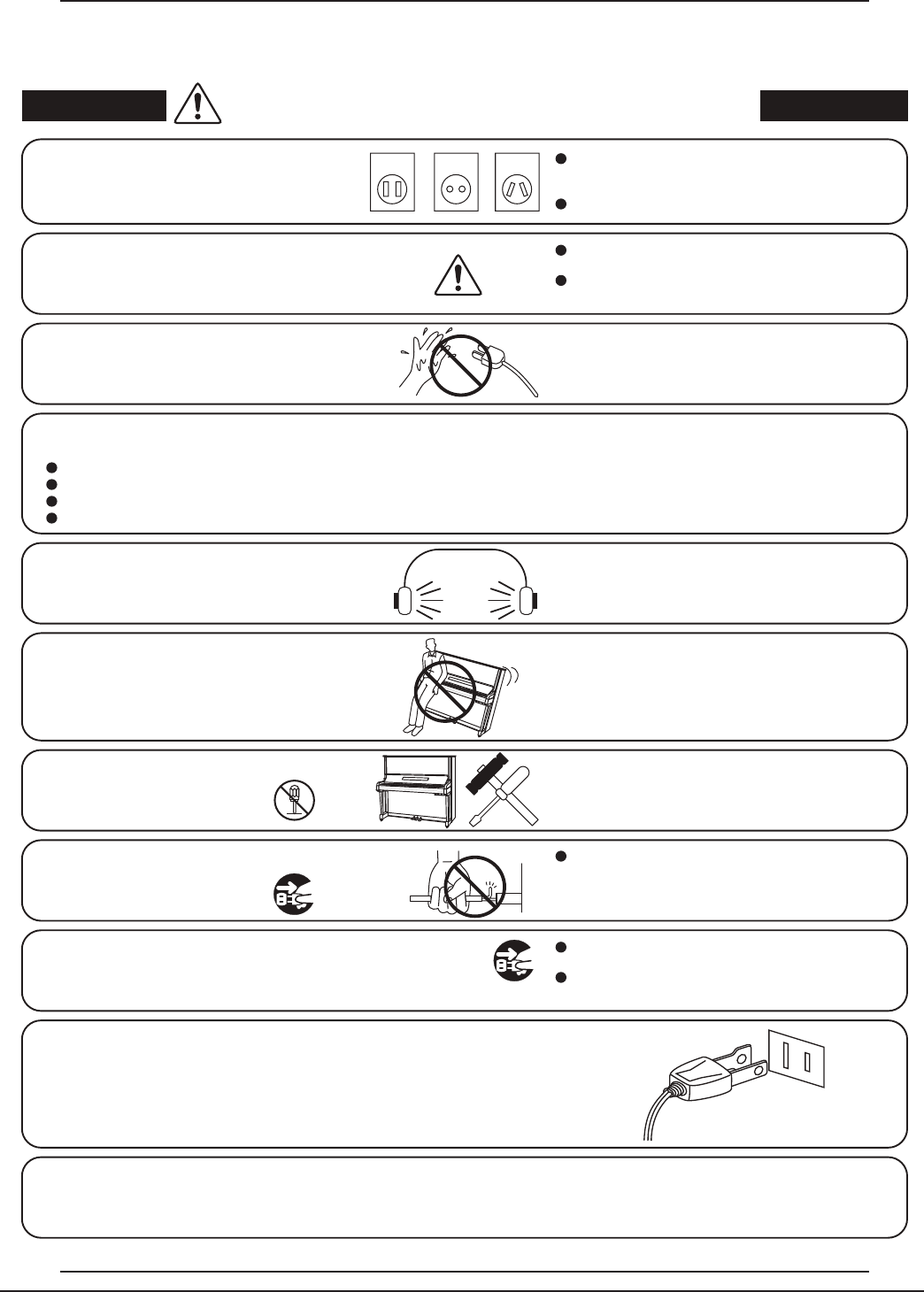
5
MICRO GRANDE DIGITAL PIANO
The product is not completely disconnected from the
power supply even when the power switch is turned
off. If the product will not be used for a long time,
unplug the AC power cord from the AC outlet.
Failure to do so may cause fire in case of
lightning.
Failure to do so may over-heat the product,
resulting in fire.
This product may be equipped with a polarised line plug (one blade
wider than the other). This is a safety feature.
If you are unable to insert the plug into the outlet, contact an
electrician to replace your obsolete outlet.
Do not defeat the safety purpose of the plug.
When disconnecting the AC power cord’s
plug, always hold the plug
and pull it to remove it.
Pulling the AC power cord itself may damage
the cord, causing a fire, electric shock or
short-circuit.
Doing so may cause the product to fall over,
resulting in injury.
Do not lean against the keyboard.
When using the headphones, do not
listen for long periods of
time at high volume levels.
Doing so may result in hearing problems.
It is a good practice to place the instrument near the AC outlet and to place the power cord plug in a
position that allows the plug to be disconnected easily in the event of an emergency. Electricity is always
charging while the plug is in the AC outlet even when the power switch is in the ‘OFF’ position.
The chair must be used properly (it must be
used only when playing the product).
Do not play with it or stand on it.
Only one person is allowed to sit on it.
Do not sit on it when opening the lid.
Re-tighten the bolts occasionally.
Doing so may cause the chair to fall over or your
fingers to be trapped, resulting in injury.
WARNING
The product should be connected to
an AC outlet of the specified voltage.
If you are going to use an AC power cord,
make sure that it has the correct plug shape
and conforms to the specified power voltage.
Failure to do so may result in fire.
120V 240V230V
Indicates a potential hazard that could result in death
or serious injury if the product is handled incorrectly.
Do not insert or disconnect the power
cord plug with wet hands. Doing so may cause electric shock.
WARNING - When using electric products, basic precautions should always be followed,
including the following.
Do not use other AC adaptors to power this
instrument.
Do not use the included AC adaptor or AC
power cord to power other equipment.
Use only the AC adaptor included with
this instrument to power the instrument.
Do not disassemble, repair or modify
the product. Doing so may result in product breakdown, electric
shock or short-circuit.
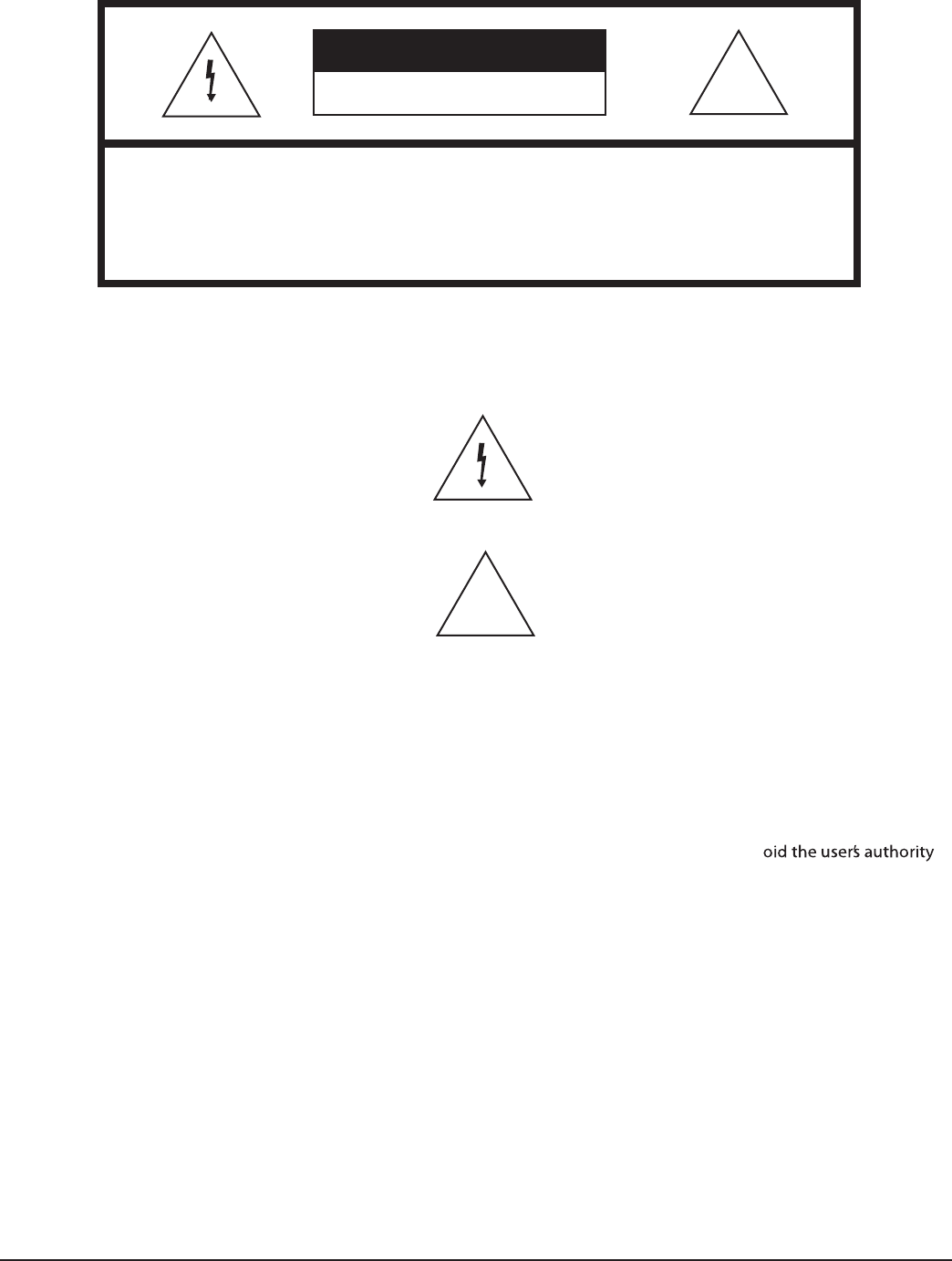
6OWNER’S MANUAL
General Precautions
CAUTION
RISK OF ELECTRIC SHOCK
DO NOT OPEN
CAUTION: TO REDUCE THE RISK OF ELECTRIC SHOCK,
DO NOT REMOVE COVER OR BACK
NO USER-SERVICEABLE PARTS INSIDE
REFER SERVICING TO QUALIFIED SERVICE PERSONNEL
!
INSTRUCTIONS PERTAINING TO A RISK OF FIRE, ELECTRIC SHOCK OR INJURY:
The lightning ash with arrowhead symbol, within an equilateral triangle, is intended to alert the user to the presence of
uninsulated or “dangerous voltage” within the product’s enclosure that may be of sucient magnitude to constitute a risk of
electric shock to persons.
The exclamation point within an equilateral triangle is intended to alert the user to the presence of important operation and
maintenance or servicing instructions.
1. CAUTION: Any changes or modications in construction of this device which are not expressly approved by the party
responsible for compliance could void the user’s authority to operate the equipment.
!
Consult the dealer or an experienced radio/TV technician for help.
1. This device complies with Part 15 of the FCC Rules. Operation is subject to the following two conditions:
(1) This device may not cause harmful interference.
(2) This device must accept any interference received, including interference that may cause u
2. Changes or modifications not expressly approved by the party responsible for compliance could v
to operate the equipment.
NOTE: This equipment has been tested and found to comply with the limits for a Class B digital d evice, pursuant to Part 15
of the FCC Rules. These limits are designed to provide reasonable p rotection against harmful interference in a residential installation.
This equipment generates uses and can radiate radio frequency energy and, if not installed and u sed in accordance with the
instructions, may cause harmful interference t o radio communications.
However, there is no guarantee that interference will not occur in a particular installation. If this e quipment does cause harmful
to radio or television reception, which can be d etermined by turning the equipment off and on, the user is encouraged to try to
correct the i nterference by one or more of the following measures:
Reorient or relocate the receiving antenna.
Increase the separation between the equipment and receiver.
Connect the equipment into an outlet on a circuit different from that to which the r
eceiver is c onnected.
Consult the dealer or an experienced radio/TV technician for help.
FCC STATEMENT
ndesired operation.
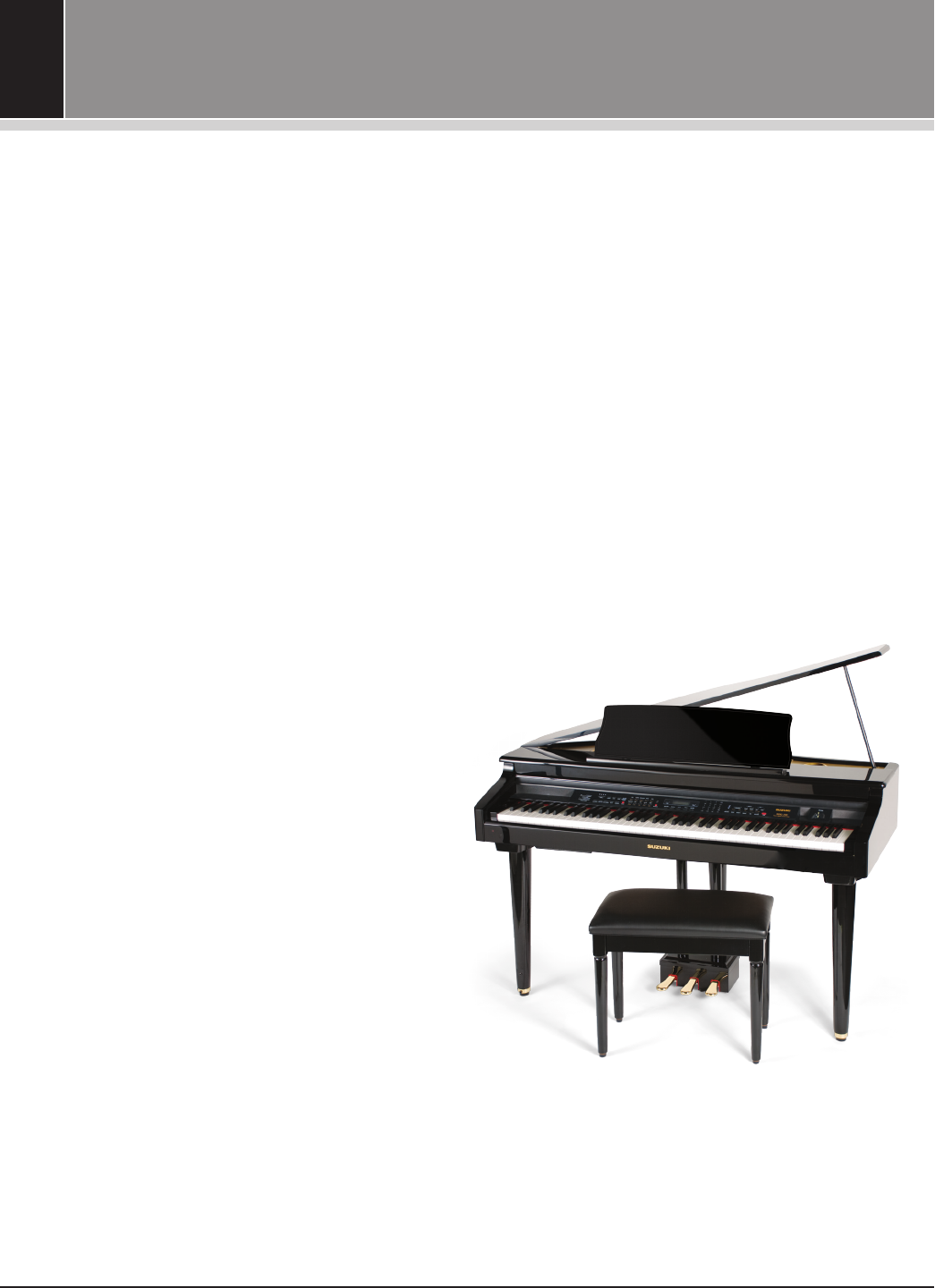
7
MICRO GRANDE DIGITAL PIANO
We would like to express our appreciation and
congratulate you for purchasing this mini grand
digital piano. This piano has been designed to
provide you with years of musical enjoyment.
State of the art electronics are combined with
an elegant cabinet that will add beauty and
sophistication to any home environment. Listed
Below are just a few of the features that your
new piano is equipped with:
• Elegant Hand Rubbed Lacquer Grand Piano
Fits Any Sized Room – It’s Less Than 3’ Deep!
• Feature Packed Entertainment Center is Fun
For the Whole Family – It’s More Than Just a
Piano!
• Play Hundreds of Optional Music Files. Jazz,
Pop, Classical, Rock, Country & More!
• Compose and Store Your Own Songs with
Built-in 3 Track Recorder
• Choose From 128 Instrument Voices
Including Stereo Grand Piano and 100
Accompaniment Styles
• Advanced Graded Hammer Action Keyboard
Has Authentic Acoustic Piano Touch and Feel
– Teacher Recommended!
• Built-In Music Teacher with Verbal and
Screen Grading
• Concert Hall Sound System Has 120 Watts of
Power and 4 High Performance Speakers
• SD Memory Card Plays Pre-recorded Music –
You Can Even Record Practice Sessions
• Interface Your Computer with On-Board MIDI
and USB ports
• Never Needs Tuning
• Practice in Private with Headphones
(optional)
You will nd many more features and functions
listed within this owners manual. In order to
fully appreciate all the impressive features of this
digital piano, please take a few minutes to read
the following pages of instruction. We will cover
general precautions, assembly, the function of
each control button, and warranty information.
Welcome

8OWNER’S MANUAL
Warning
When using electrical products, basic safety precautions
should always be followed, including the following:
Safety
Power Source – The product should always be
connected to a power supply only of the type described
in the operating instructions or as marked on the
product.
Periods of Non-use – The power–supply cord of the
product should be unplugged from the outlet when left
unused for a long period of time.
Service And Modication
This product should be serviced by qualied service
personnel when,
• The power supply cord or the plug has been damaged,
• Liquid has been spattered into the unit or it has been
exposed to rain,
• The instrument does not appear to operate normally or
exhibits a marked change in performance.
• The instrument has been dropped or the cabinet has
been damaged.
• Do not attempt to open the piano or make any change
in the circuits or parts of the unit.
Handling And Transport
• Never apply excessive force to the controls, connectors
or other parts of the instrument.
• Always unplug cables by gripping the plug rmly, not
by pulling on the cable.
• Disconnect all cables before moving the instrument.
• Physical shocks caused by dropping, bumping, or
placing heavy objects on the instrument can result in
scratches and/or more serious damage.
• Carefully check the amplier volume control before
starting to play. Excessive volume can cause permanent
hearing loss.
Cleaning
• Clean the cabinet and panel with a soft nonabrasive
dry cloth. This cloth should be for High Gloss Lacquer
Finish Furniture. A wax based polish specically for
High Gloss Lacquer Finish Furniture may be used on
the cabinet. Do not use paint thinner or petrochemical
based polishes.
• To maintain the luster of the keys and buttons wipe
with a clean, slightly damp cloth, and then polish with a
soft dry cloth.
Location
• Do not expose the instrument to the following
conditions to avoid deformation, discoloration, or more
serious damage:
• Direct sunlight (near a window)
• High temperatures (near a heat source, outside, or near
a window)
• Excessive humidity
• Excessive dust
• Strong vibration
• Leave enough space around the piano for it to be
properly ventilated.
• This instrument contains digital circuitry and may cause
interference if placed too close to radio or television
receivers. If interference occurs, move the instrument
further away from the aected equipment.
• Avoid placing vinyl objects on top of the instrument,
vinyl can stick to and discolor the surface.
Power
• Turn the power switch o when the instrument is not
in use.
• To avoid damage to the instrument and other devices
to which it is connected, turn the power switches of all
related devices o prior to connection or disconnection
of MIDI cables.
• Turn the power o if the main cable is damaged or the
instrument is spattered with liquid.
• Do not switch the unit on and o in quick succession,
this places an undue load on the electronic
components.
• Unplug the AC power cord during an electrical storm.
• Avoid plugging the AC power cord into the same AC
outlet as appliances with high power consumption,
such as electric heaters or refrigerators.
Taking Care Of Your Digital Piano
This digital piano will supply you with years of musical enjoyment if you follow the simple rules listed
below.
Important Safety Instructions
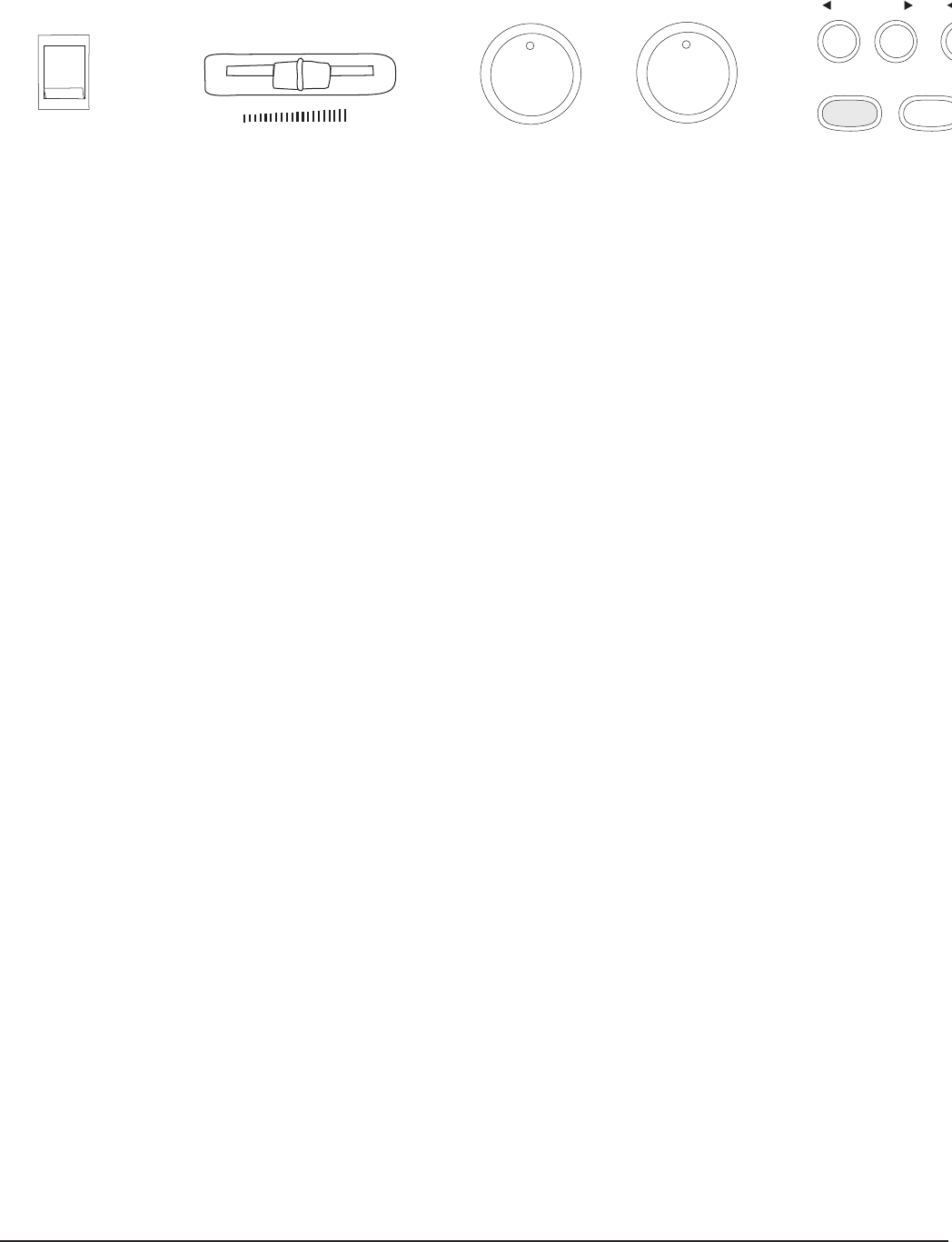
9
MICRO GRANDE DIGITAL PIANO
Panel Controls
The elegant control panel is divided into several distinct sections. The following is a brief description of
all the features located on the control panel.
q POWER SWITCH The power switch is located to the left of the keyboard.
Press the button to turn the power on and o. There is an indicator light on the
Floppy Disk Drive located on right front portion of the piano. This light will be lit
when power is on.
Note: When you turn the power o, do not turn it back on immediately. Wait at least
ve seconds to turn the power back on so that the electronic circuits can properly reset.
w MASTER VOLUME Use this sliding control button to adjust the overall volume
of the keyboard.
NOTE: At higher volumes there maybe audio “clipping” or distortion depending on the
frequencies being played
e BASS AND TREBLE KNOBS The two tone knobs “Bass and Treble” — With the
Tone Knobs you can adjust the sound of your DG-10 to your room or according to
your taste. As a starting point, set both controls to their neutral 12 o’clock position.
If you want more bass move the Bass control to the right and if you want less,
move it to the left.
If you prefer a brighter sound move the Treble control to the right or move it to the
left if you prefer a more “rounded” tone.
r ACCOMPANIMENT VOLUME Press the left or right Accompaniment Volume
Button to adjust the volume of the auto accompaniment only, the keyboard
instrument voice will not be aected.
Note: At higher volumes there maybe audio “clipping” or distortion depending on the
frequencies being played
FUNCTION
ENTER
1
6
2
7
3
8
4
9
5
0
+
-
GRAND PIANO
VOICE/STYLE
VOICE/STYLE SELECTION
ACCOMP.
KB. VOL TRANSP. OCTAVE
VARIATION
CHORD
SYNCHRO START/STOP
ACCOMPANIMAENT CONTROL
FILL IN
INTRO/
ENDING
TAP/TEMPO METRO REVERB CHORUS TOUCH
SPLIT LAYER HARMONY DUET O.T.S
KEYBOARD CONTROL
VOICE PIANO E. PIANO VIBES ROCK ORGAN STRINGS USER STORE
MULTI
SONG DELETE
REGISTRATION
DEMO
M1
LEFT
M2
RIGHT
M3
FILE
M4
RECORD
M5
PLAY/LOAD
M6
REC. TRACK
STORE/BANK
SAVE MEN
USB FUNCTION
GRAND PIANO
ON
OFF
POWER MIN MAX
MAXMIN MAXMIN
BASS TREBLE
MASTER VOLUME
q
w e r

10 OWNER’S MANUAL
FUNCTION
ENTER
1
6
2
7
3
8
4
9
5
0
+
-
GRAND PIANO
VOICE/STYLE
VOICE/STYLE SELECTION
ACCOMP. KB. VOL TRANSP. OCTAVE
VARIATION
CHORD SYNCHRO START/STOP
ACCOMPANIMAENT CONTROL
FILL IN
INTRO/
ENDING
TAP/TEMPO METRO REVERB CHORUS TOUCH
SPLIT LAYER HARMONY DUET O.T.S
KEYBOARD CONTROL
VOICE PIANO E. PIANO VIBES ROCK ORGAN STRINGS USER STORE
MULTI
SONG DELETE
REGISTRATION
DEMO
M1
LEFT
M2
RIGHT
M3
FILE
M4
RECORD
M5
PLAY/LOAD
M6
REC. TRACK
STORE/BANK
SAVE MEN
USB FUNCTION
GRAND PIANO
ON
OFF
POWER MIN MAX
MAXMIN MAXMIN
BASS TREBLE
MASTER VOLUME
KEYBOARD VOLUME Press the left or right Keyboard Volume Button to adjust
the volume of the piano voice Only or any of the 128 keyboard instrument sounds.
The Accompaniment volume will not be aected.
TRANSPOSE The transpose feature can shift the pitch of the keyboard up
or down in semitone intervals up to a maximum of24 semitones. Press one of
theTRANSPOSE buttons and the current transpose value will appear on the
display. Use the TRANSPOSE left or right arrow buttons to set the transpose value
range from –12, one octave lower, to 12, one octave higher. Press the TRANSPOSE
left or right arrow buttons simultaneously to recall the default value of 0. After
three seconds the display will return to the currently selected instrument voice.
Transpose does not aect notes that are currently playing. Transpose does not
aect the percussion.
OCTAVE Press one of the OCTAVE buttons and the current notes on the piano
will shift either an Octave Up or an Octave Down. The Value will appear on the LCD
Display.
CHORD S Each rhythm style has a fully orchestrated auto accompaniment
pattern. These accompaniments are dedicated to the selected rhythm style, and
will create rhythm, bass and chord accompaniments. The CHORD button selects he
auto accompaniment mode. With this function engaged, the keys to the left side of
the split point are the auto accompaniment section of the keyboard, while the keys
to the right are available for normal playing.
The auto accompaniment ngering modes are single, ngered, piano, and o.
Press the CHORD button and the LCD Display that corresponds to the ngering
mode will be shown.
SYNCHRO Synchronized Start mode sets the auto accompaniment into
standby mode. When the SYNCHRO button is pressed the indicator lights will turn
on. The rhythm style will start as soon as you play in the auto accompaniment
section of the keyboard. The auto accompaniment will start with the rst
recognized chord played in the auto accompaniment section of the keyboard,
depending on which ngering mode is selected. Pressing the SYNCHRO button
again will stop the auto accompaniment and put the keyboard back on standby
mode .
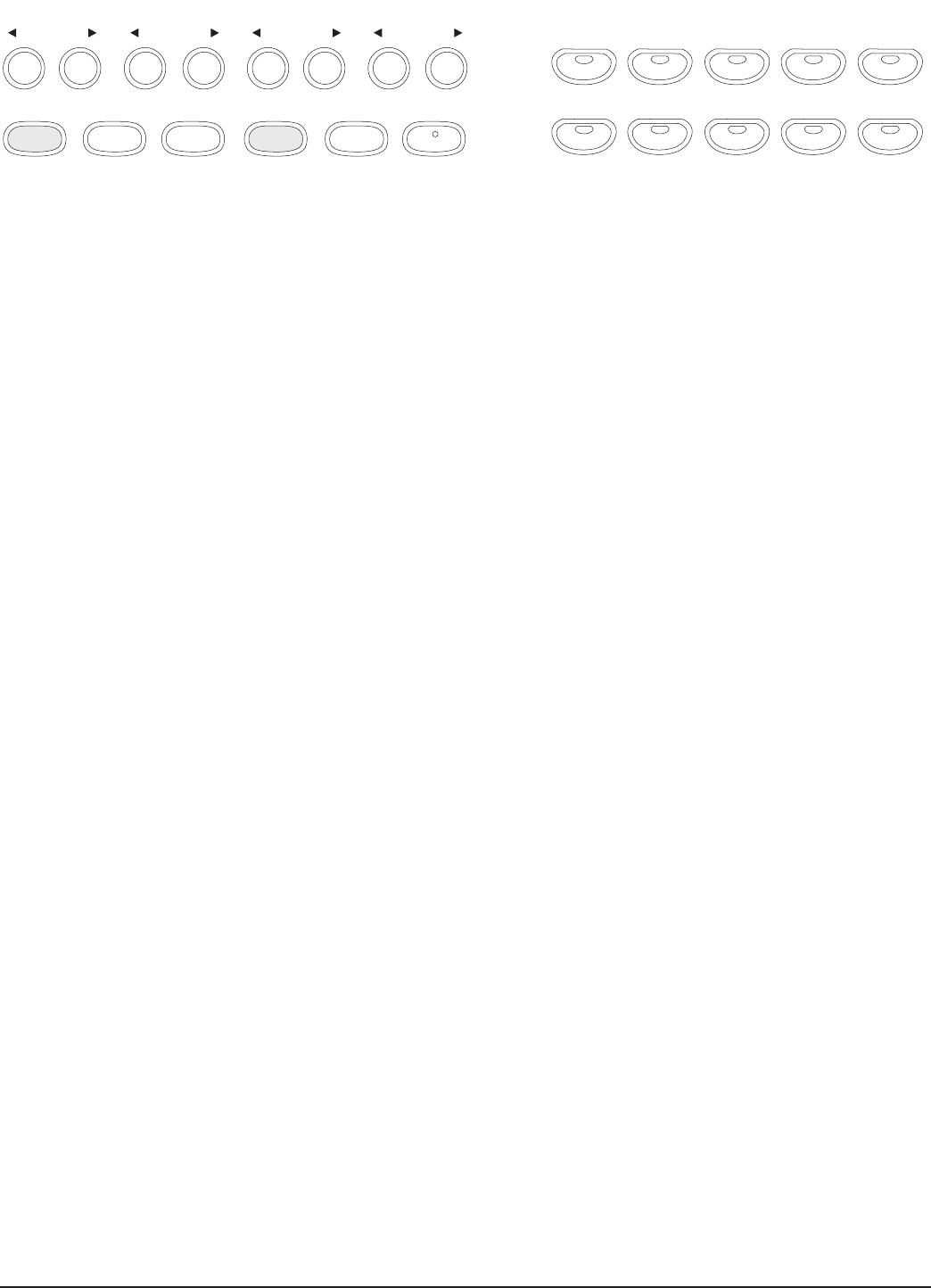
11
MICRO GRANDE DIGITAL PIANO
INTRO/ENDING All of the 100 rhythm styles can be started or nished
with an detailed individual introduction or ending pattern. When engaged, an
introduction of rhythm pattern will start followed by the main pattern. With a
rhythm or accompaniment pattern already engaged the accompaniment can
be professionally completed with an ending pattern from the next measure by
pressing the INTRO/ENDING button. If you press the ll-in button during the
ending pattern it will return to the main accompaniment pattern.
START/STOP This button starts or stops the selected rhythm style. The auto
accompaniment will start with the rst recognized chord played in the auto
accompaniment section of the keyboard, depending on the ngering mode
selected.
FILL IN The ll-in provides the accompaniment with a short rhythm pattern of
one or two measures for each style. Press the FILL IN button at any time while the
accompaniment is playing to add a ll-in. If you hold down the FILL IN button, the
ll-in pattern will repeat until the button is released, then the main pattern will play
from the beginning of the next measure.
VARIATION All of the 100 rhythm styles include a variation of that style that
can be played simply by engaging the VARIATION button. Press the VARIATION
button again to disengage and return to the main pattern.
TEMPO Tap your desired Tempo or us the Tempo Buttons. Press one of the
TEMPO buttons, the current tempo value will appear on the display. You can
use the TEMPO up, TEMPO down buttons, or the VALUE buttons to increase or
decrease the tempo of Rhythm and Accompaniment Patterns.
The Tempo value range is from 40 to 250 bpm (beats per minute). Note: Press the
up TEMPO and down TEMPO Buttons simultaneously to recall the default tempo
setting for the selected rhythm style. LCD Rhythm tempo will be shown on the
display — There is a four–dot beat indicator. It indicates the Tempo and beat for
the accompaniment that is playing. Each style has its own preset tempo.
FUNCTION
ENTER
1
6
2
7
3
8
4
9
5
0
+
-
GRAND PIANO
VOICE/STYLE
VOICE/STYLE SELECTION
ACCOMP. KB. VOL TRANSP. OCTAVE
VARIATION
CHORD SYNCHRO START/STOP
ACCOMPANIMAENT CONTROL
FILL IN
INTRO/
ENDING
TAP/TEMPO METRO REVERB CHORUS TOUCH
SPLIT LAYER HARMONY DUET O.T.S
KEYBOARD CONTROL
VOICE PIANO E. PIANO VIBES ROCK ORGAN STRINGS USER STORE
MULTI
SONG DELETE
REGISTRATION
DEMO
M1
LEFT
M2
RIGHT
M3
FILE
M4
RECORD
M5
PLAY/LOAD
M6
REC. TRACK
STORE/BANK
SAVE MEN
USB FUNCTION
GRAND PIANO
ON
OFF
POWER MIN MAX
MAXMIN MAXMIN
BASS TREBLE
MASTER VOLUME
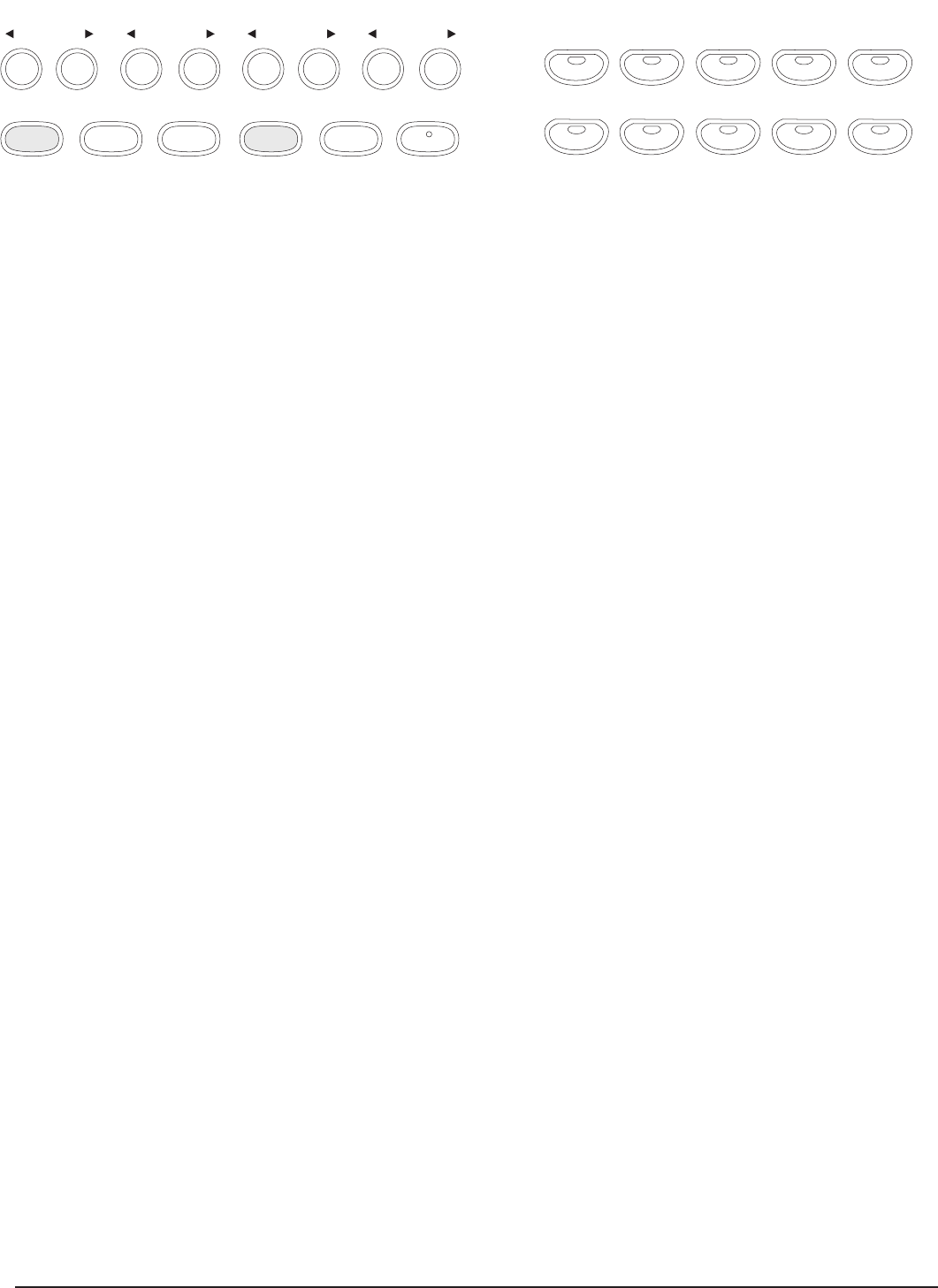
12 OWNER’S MANUAL
METRONOME — Toggles the metronome feature on and o and accesses the
Tempo menu. The tempo can be increased or decreased using the TEMPO Up and
TEMPO Down buttons. Press the METRO button to engage the built-in metronome.
Use the Up and Down TEMPO buttons with the metronome engaged to choose
the meter of your choice, 1/4, 2/4, 3/4, 4/4, 5/4, 6/4, 6/8 or 12/8 time.
REVERB The reverb eect is engaged automatically when the power is turned
on. Reverb simulates the eect of playing in a big room or hall where the sound
reverberates o the walls and ceiling. Press the REVERB button to turn o the
reverb eect. You can switch the reverb feature on and o by pressing the REVERB
button. Reverb depth can be changed in the function menu.
Please see the Function Section for more information
CHORUS The Chorus type eect adds depth and spaciousness to the selected
keyboard voice. Press the CHORUS button to engage the chorus eect and the
indicator will light up. Press the button again to turn o the chorus eect. Chorus
depth can be changed in the function menu.
Please see the Function Section for more information.
TOUCH The piano oers four types of keyboard touch sensitivity settings, soft,
normal, hard, and xed. These are also known as velocity settings and are designed
to suit your style of playing. The normal setting is selected automatically when the
piano is turned on. The touch response can be changed with the Function Section
SPLIT With the Lower feature engaged the keyboard operates in the “split”
mode. In the Lower mode the keyboard is divided into two sections. In the right
hand section the original and/or layered voice will sound, and in the left hand
section a dierent voice can be assigned to sound when the keys are played. To
select a new Lower instrument voice use the + or – buttons within three seconds
after the SPLIT button has been engaged.
More information regarding the SPLIT function can be found in the Function Section.
FUNCTION
ENTER
1
6
2
7
3
8
4
9
5
0
+
-
GRAND PIANO
VOICE/STYLE
VOICE/STYLE SELECTION
ACCOMP. KB. VOL TRANSP. OCTAVE
VARIATION
CHORD SYNCHRO START/STOP
ACCOMPANIMAENT CONTROL
FILL IN
INTRO/
ENDING
TAP/TEMPO METRO REVERB CHORUS TOUCH
SPLIT LAYER HARMONY DUET O.T.S
KEYBOARD CONTROL
VOICE PIANO E. PIANO VIBES ROCK ORGAN STRINGS USER STORE
MULTI
SONG DELETE
REGISTRATION
DEMO
M1
LEFT
M2
RIGHT
M3
FILE
M4
RECORD
M5
PLAY/LOAD
M6
REC. TRACK
STORE/BANK
SAVE MEN
USB FUNCTION
GRAND PIANO
ON
OFF
POWER MIN MAX
MAXMIN MAXMIN
BASS TREBLE
MASTER VOLUME

13
MICRO GRANDE DIGITAL PIANO
FUNCTION
ENTER
1
6
2
7
3
8
4
9
5
0
+
-
GRAND PIANO
VOICE/STYLE
VOICE/STYLE SELECTION
ACCOMP. KB. VOL TRANSP. OCTAVE
VARIATION
CHORD SYNCHRO START/STOP
ACCOMPANIMAENT CONTROL
FILL IN
INTRO/
ENDING
TAP/TEMPO METRO REVERB CHORUS TOUCH
SPLIT LAYER HARMONY DUET O.T.S
KEYBOARD CONTROL
VOICE PIANO E. PIANO VIBES ROCK ORGAN STRINGS USER STORE
MULTI
SONG DELETE
REGISTRATION
DEMO
M1
LEFT
M2
RIGHT
M3
FILE
M4
RECORD
M5
PLAY/LOAD
M6
REC. TRACK
STORE/BANK
SAVE MEN
USB FUNCTION
GRAND PIANO
ON
OFF
POWER MIN MAX
MAXMIN MAXMIN
BASS TREBLE
MASTER VOLUME
2) LAYER Engaging the LAYER button will put the keyboard in the layer mode.
Layer refers to an additional voice that is “tone mixed” with the already selected
keyboard voice. The assigned layer voice will be heard together with the original
voice. To select a new layered instrument voice use the + or – buttons within 3
seconds after the LAYER button has been engaged.
More information regarding the LAYER function can be found in the Function Section.
2! HARMONY Harmony is used to enhance a single note melody line that you
would play while the auto accompaniment is engaged. When the Harmony feature
is engaged, the single note on the right–hand section of the piano will sound with
additional auto harmony notes. The note played in the right–hand section of the
piano determines the root key of the harmony. If more than one note is played only
the highest note will add harmony.
Note: The Harmony Feature is only available when the auto accompaniment is
engaged.
More information regarding the HARMONY function can be found in the Function
Section.
2@ DUET The keyboard is divided into two sections A2- E6 and F2 –C6. .Two
sections have the same voice (master voice) and volume. This is a great feature for
teaching or anytime two people want to play the piano simultaneously.
More information regarding the DUET function can be found in the Function Section.
2# OTS The One Touch Setting is a quick and easy way of reconguring voices and
settings by pressing only one button while you are playing.
More information regarding the One Touch Setting function can be found in the
Function Section.
2#2) 2! 2@
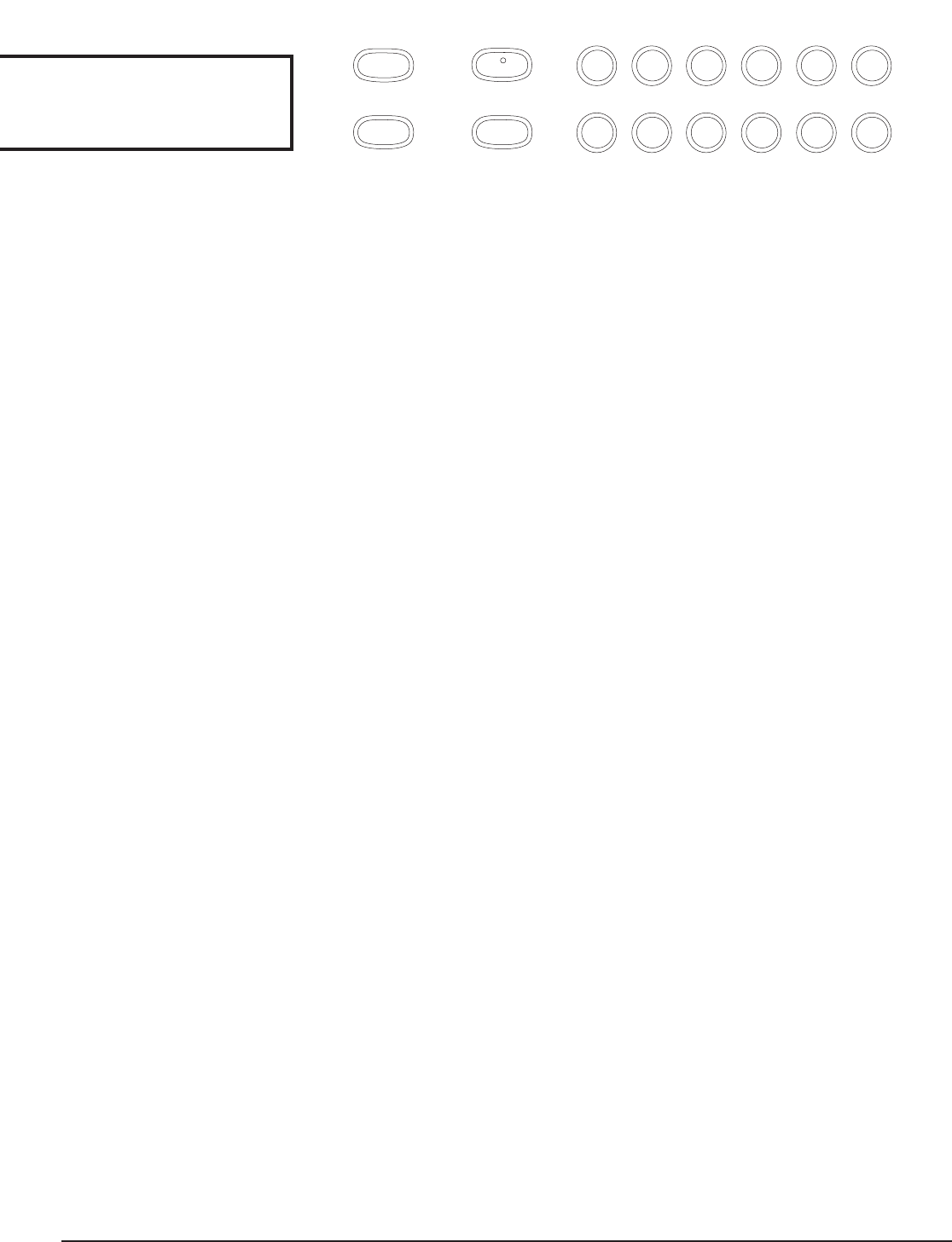
14 OWNER’S MANUAL
2
22
2
2$ FUNCTION The FUNCTION button is used to access the function menu. The
function menu can be used to adjust or change the parameters of a number of
settings. Metronome settings, reverb level, chorus level, touch, split point for voice,
auto accompaniment split point, tuning, drum kit selection and the auto harmony
type are all set from the function menu.
Please see the Function section of this manual for more information.
2 ENTER BUTTON The ENTER Button is used to conrm a selection or for
conrming a function.
2 VOICE There are 128 GM (General MIDI) instrument voices available on this
piano. You can instantly select an instrument voice by pressing one of the voice
select buttons. Or you can use the number pads to select a voice, the voice
name and its number will be shown on the display. There is a complete list of all
instrument voices listed in the back of the manual.
STYLE - To engage one of the 100 rhythm styles, and the corresponding auto
accompaniment, press the VOICE/STYLE button two times to engage the style
selection mode. While its indicator light is lit, use the number pads to select a
style or press the +,- Buttons, the style name and its number will be shown on the
display. There is a complete list of all 100 rhythm accompaniment styles listed in
the back of the manual.
Please see the Rhythm section of this manual for more information.
2 GRAND PIANO Use the GRAND Piano Button when you want to reset the
DG-10 to its original Turn On, Power Up settings. Therefore when you press the
Grand Piano button you will have all 88 Keys play the Grand Piano voice without
any other functions engaged. This feature is a quick way to reset the piano to its
original settings.
2 NUMERIC PAD Use the +, – or the numeric pad to input numbers directly
while using the voice, style or function settings. These buttons are also used to
access or alter many of the function features or where ever numerical input is
necessary.
FUNCTION
ENTER
1
6
2
7
3
8
4
9
5
0
+
-
GRAND PIANO
VOICE/STYLE
VOICE/STYLE SELECTION
ACCOMP. KB. VOL TRANSP. OCTAVE
VARIATION
CHORD SYNCHRO START/STOP
ACCOMPANIMAENT CONTROL
FILL IN
INTRO/
ENDING
TAP/TEMPO METRO REVERB CHORUS TOUCH
SPLIT LAYER HARMONY DUET O.T.S
KEYBOARD CONTROL
VOICE PIANO E. PIANO VIBES ROCK ORGAN STRINGS USER STORE
MULTI
SONG DELETE
REGISTRATION
DEMO
M1
LEFT
M2
RIGHT
M3
FILE
M4
RECORD
M5
PLAY/LOAD
M6
REC. TRACK
STORE/BANK
SAVE MEN
USB FUNCTION
GRAND PIANO
ON
OFF
POWER MIN MAX
MAXMIN MAXMIN
BASS TREBLE
MASTER VOLUME
2$
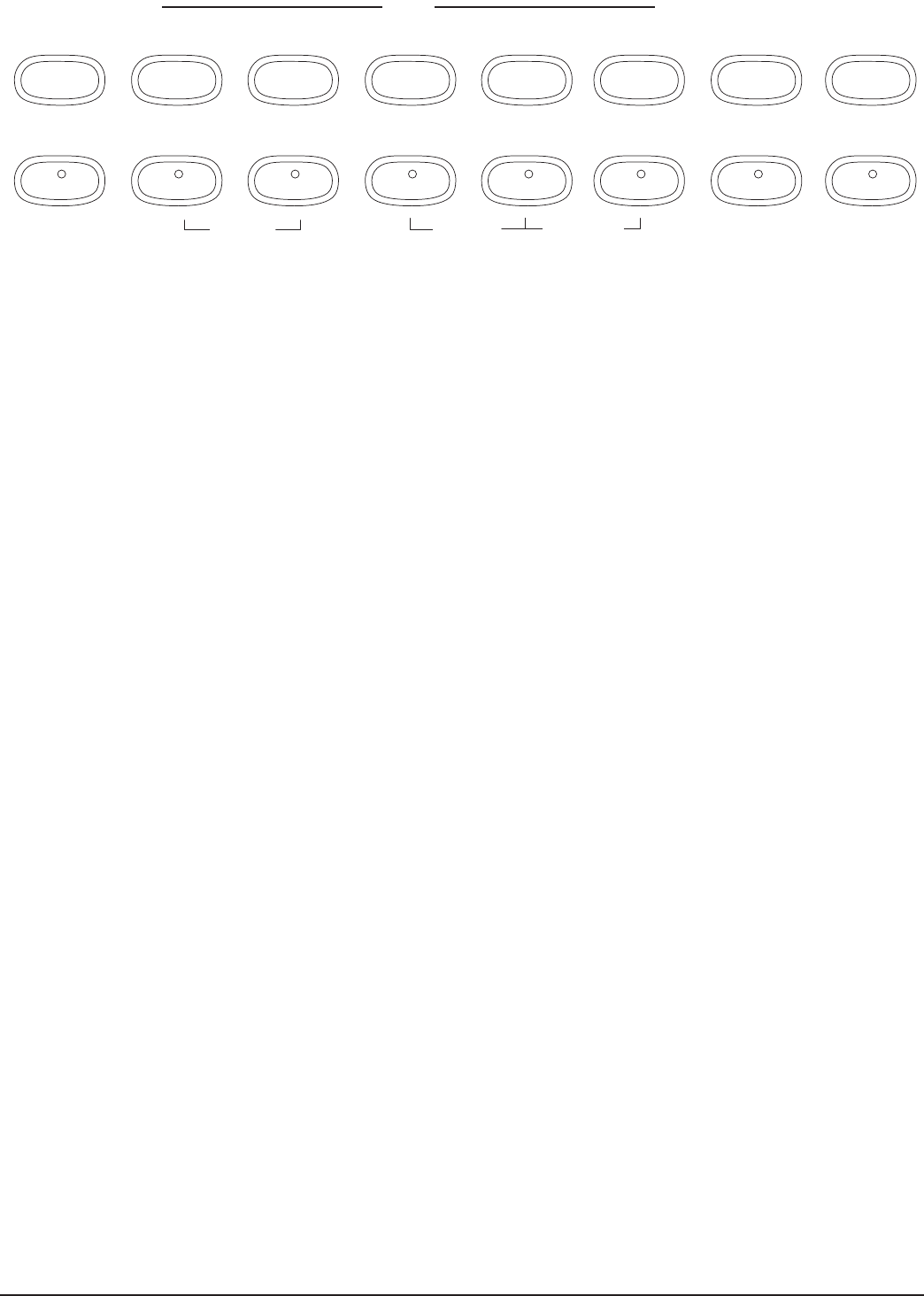
15
MICRO GRANDE DIGITAL PIANO
VOICE PIANO E. PIANO VIBES ROCK ORGAN STRINGS USER STORE
MULTI
SONG DELETE
REGISTRATION
DEMO
M1
LEFT
M2
RIGHT
M3
FILE
M4
RECORD
M5
PLAY/LOAD
M6
REC. TRACK
STORE/BANK
SAVE MEN
USB FUNCTION
2 !
#
) @
$
2 PIANO, E. PIANO, VIBES, ROCK ORGAN, STRINGS TThere are ve instrument
voices that can be selected quickly by pressing one of the ve voice select buttons.
Each of these selection buttons consists of a dierent instrument category. The
selected voice name and its number will be shown on the display.
Please see the Keyboard Voices section of this manual for more information.
) ACCOMP The ACCOMP button is used to select the auto accompaniment track
of a song for recording or playback.
Please see the Record section of this manual for more information.
! USER You can assign a favorite instrument voice to the voice quick select USER
button.
Please see Instrument voice section of this manual for further details.
@ STORE Registration is used to store keyboard settings. Press the STORE button
to engage the registration memory mode, the indicator will light up. Press one of
the numeric buttons M1 – M6, the stored setting will be recalled instantly.
Please see the Registration Memory section of the manual for more information.
# DEMO This piano has various dierent demonstration songs. The
Demonstration mode will play back all thirteen demo songs or select the song
individually by using the +,- buttons.
$ SONG LEFT/RIGHT This “Play Along Songs” or “Music Teacher” feature can be
used as an aid to learn the 50+ songs built into this piano. Pressing the LEFT and
RIGHT buttons simultaneously turns the “music teacher” function on and o.
Please see the Play Along Song section of this manual for more information.
The LEFT and RIGHT buttons allow the player to play along with the prerecorded
traditional songs contained within this piano. The LEFT button will play the right
hand of the selected song, so that the user can practice the Left Hand portion of
the song. The RIGHT button will play the Left Hand of the selected song, so that
the user can practice the Right Hand portion of the song. When engaging the LEFT
and RIGHT buttons simultaneously only the metronome count will sound and the
user should play both the Left and Right portions

16 OWNER’S MANUAL
VOICE PIANO E. PIANO VIBES ROCK ORGAN STRINGS USER STORE
MULTI
SONG DELETE
REGISTRATION
DEMO
M1
LEFT
M2
RIGHT
M3
FILE
M4
RECORD
M5
PLAY/LOAD
M6
REC. TRACK
STORE/BANK
SAVE MEN
USB FUNCTION
FILE Press the FILE Button to switch the Piano into reviewing the USB Files on
the Flash Drive. This File Button can be used anytime or while you are in any other
piano mode.
RECORD This unit is able to record one song at a time, each with 2 tracks. It
will record all Note events as they are performed. This recorded information is
nonvolatile and therefore will not be lost when the power is turned o. To Record
press and hold down the RECORD button then press the track button you want to
record in. Recording begins as soon as you start to play. Press the RECORD or PLAY/
STOP button again to stop recording.
Please see the Record section of the manual for more information, about multi-track
recording with usb Flash Drive.
PLAY/LOAD This button starts or stops the selected rhythm style. The auto
accompaniment will start with the rst recognized chord played in the auto
accompaniment section of the keyboard, depending on the ngering mode
selected. It also functions as a Start Stop Function for playing back a recording
that you have made or listening to a selected le from the Flash Drive. The LOAD
Button will load a selected song or le from the Flash Drive.
REC. TRACK When in the Record Mode press the Rec. Track button to select the
specic track to record to.
Please see the Record Section of this manual for further information of regarding the
Recording Feature.
SAVE MEN When the USB Flash Drive is connected to the USB Terminal then
the SAVE MEM Button will enable the piano to save your piano settings to the USB
Flash Drive.
) USB FLASH DISK On the Left Side of the Control Panel on the far left side of
the piano is the USB FLASH DRIVE. When you insert your included USB Flash Drive
into this USB Terminal the piano will Record your performances and save your
Regisitrations to this USB Flash Drive.
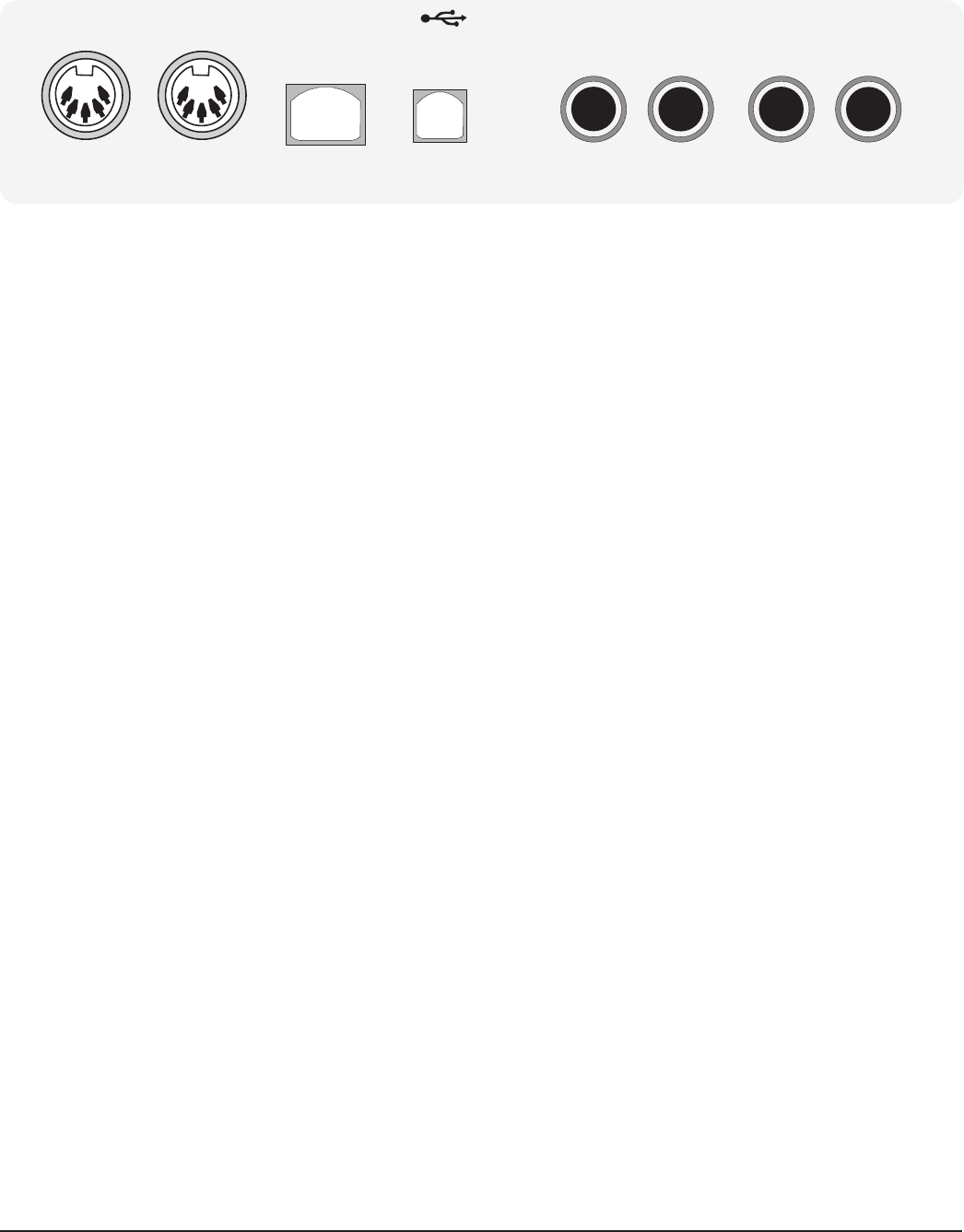
17
MICRO GRANDE DIGITAL PIANO
Connector Panel
MIDI OUT MIDI IN PEDAL LINE OUT LINE IN PHONES2 PHONES1
USB
This connector panel, with its various jacks, is located on the bottom left of the piano, under the keybed.
q MIDI IN / MIDI OUT This piano contains MIDI in and MIDI output ports. MIDI
jacks allow communication with other products equipped with MIDI interfaces.
Please see the MIDI section of this manual for further details.
w PEDAL
e USB The USB connector allows you to connect the piano directly to your
computer’s USB port. This allows you to update your piano’s software if necessary.
Do not turn on the piano with the USB cable connected to the computer to avoid
having to restart your computer. It can connected without driver installation under
the Windows XP, Windows Vista and MAC OSX environment. The piano will be
recognized as USB Audio device to receive and transmit MIDI messages.audio IN —
These stereo audio input jacks will amplify the supplied signal through the internal
sound delivery system. They can be used to hook up items such as CD players, MP3
player or Cassette player.
r AUDIO OUT These stereo audio output jacks supplies the piano’s output signal
to external amplication, such as home stereo, PA system or other stand alone
ampliers.
PHONE 1 / PHONE 2 You can play in total silence, without disturbing others
in the room, by plugging a set of headphones into one of the appropriate sockets.
When headphones are plugged into either of these jacks the main speaker system
is turned o. Two sets of headphones may be used simultaneously.
qwer
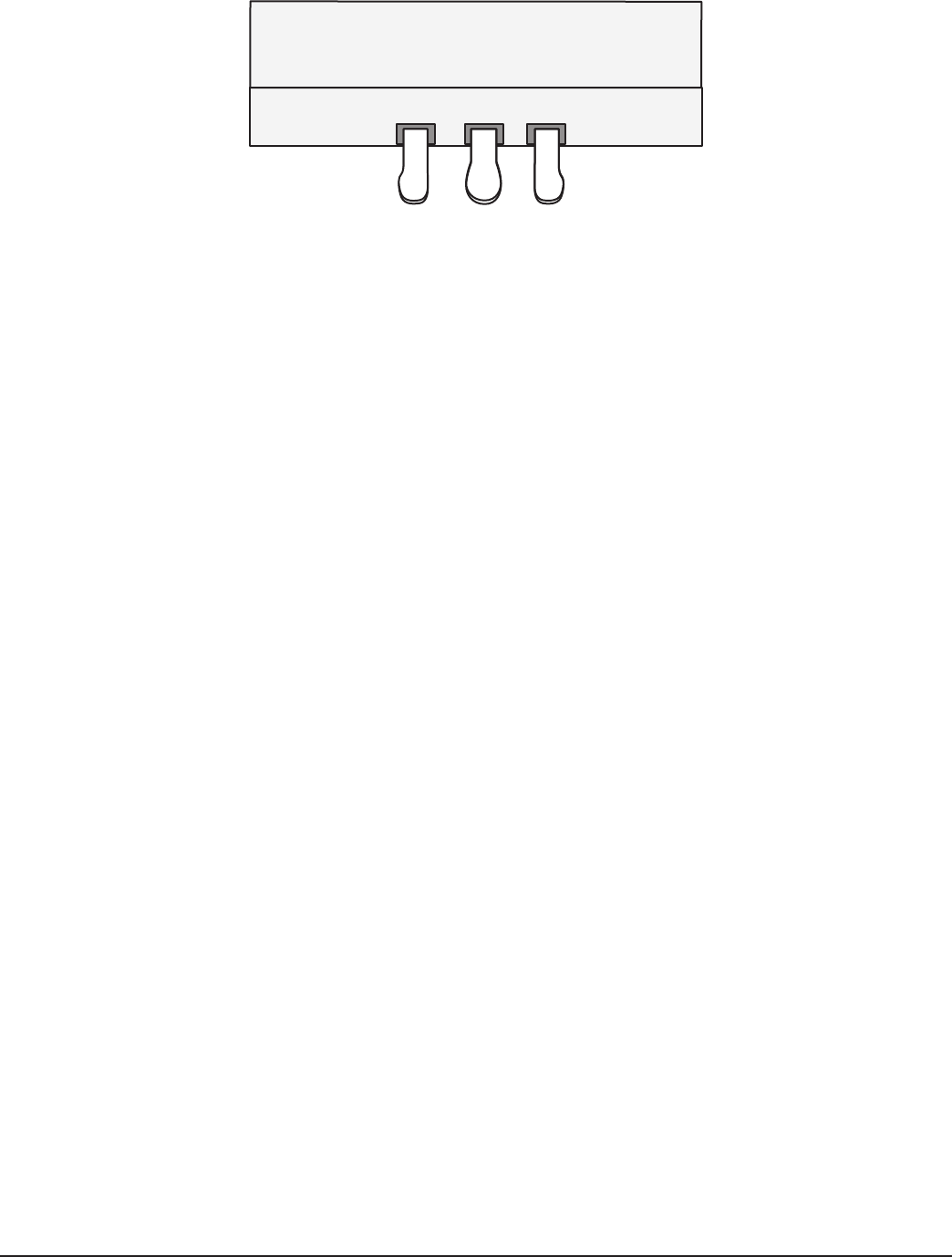
18 OWNER’S MANUAL
Piano Pedals
q w e
q SOFT PEDAL When the left pedal is engaged the piano volume is reduced and
the timbre slightly altered on the notes that are played.
w FUNCTION PEDAL This center pedal can be used to trigger various events,
such as START/STOP and Fill In. Pedal function is assigned in the setup menu,
“Pedal Assign”.
Please see the Setup section of this manual for more information.
e SUSTAIN PEDAL When the right pedal is engaged the piano keys will
continue to sustain as they are played. Thereby the piano note will decay gradually)
as if you were continuing to hold down the piano keys.
NOTE: When SD Card is engaged and playing the pedal function is altered
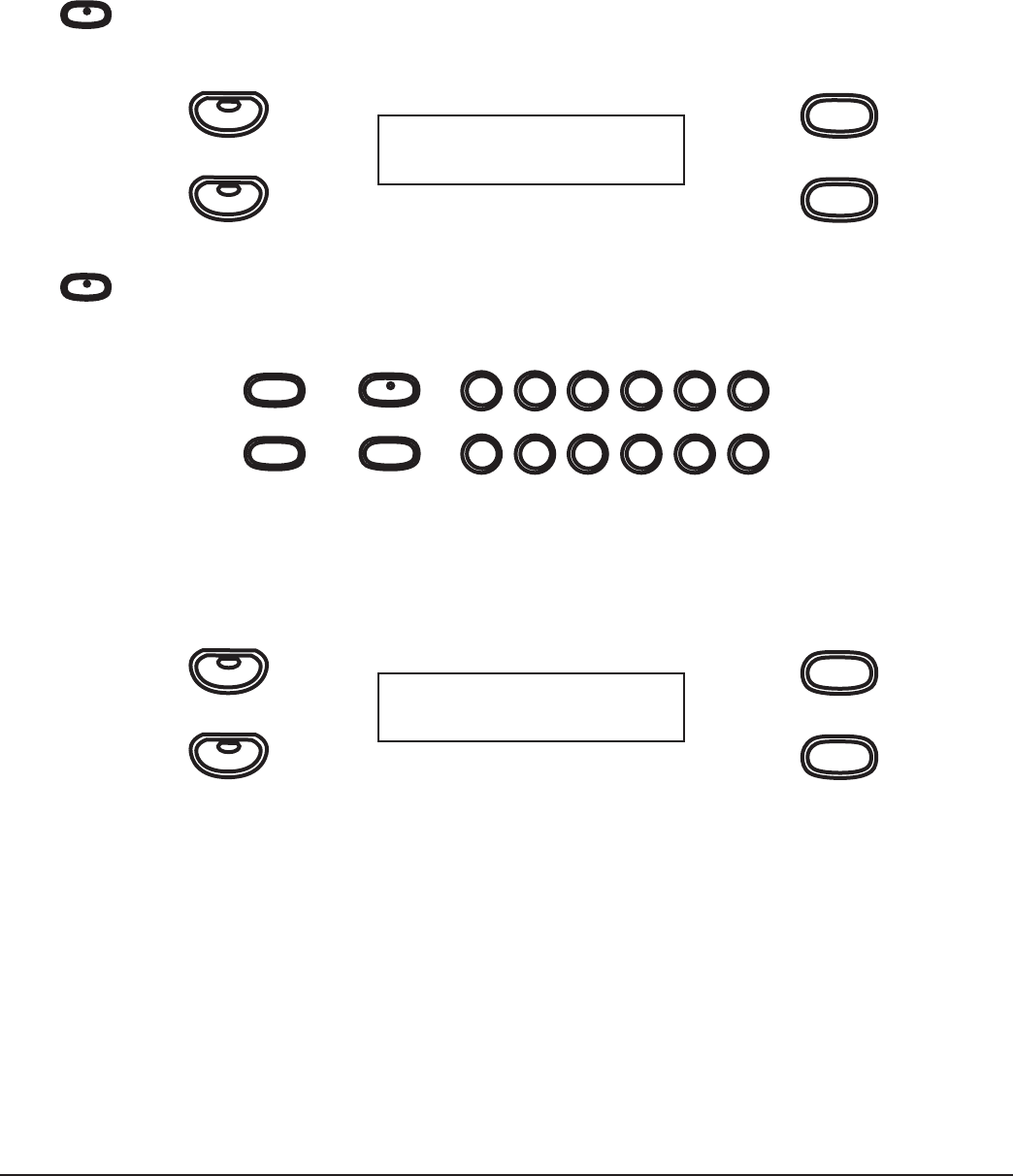
19
MICRO GRANDE DIGITAL PIANO
Demo
Playing The Demo Songs — This piano has twelve dierent demonstration songs that are designed
to showcase the dierent sampled voices that are available. The display will show the song number with a
“d” prex. When playing all the songs, “ALL” will appear on the display initially, and will change to the demo
song number as it plays. After exiting the demonstration mode the display will revert to its initial data.
1. Play All Demo Songs – Press the DEMO/SONG button. The rst demo song will
playback instantly. This unit has twelve demo songs. All songs will play repeatedly
until you press the DEMO button again to stop the demonstration.
FUNCTION
ENTER
TOUCH
O.T.S
2. Play A Single Demo Song - Use the +/YES or the –/NO buttons to change songs
while the demo is playing, or enter a song number directly by using the numeric
pad.
FUNCTION
ENTER
1
6
2
7
3
8
4
9
5
0
+
-
GRAND PIANO
VOICE/STYLE
VOICE/STYLE SELECTION
Please note that two digits are required for selecting a song number, for example,
to select song No. 9 enter “09”. The song will play repeatedly until you press the
demo button again to stop.
FUNCTION
ENTER
TOUCH
O.T.S
There are 50 songs for the musical training course that can also be played back for
demonstration.
Please see the Training section of this manual for more information.
REGISTRATION
DEMO
REGISTRATION
DEMO
ALL: Demo Song
d-9: Demo Song
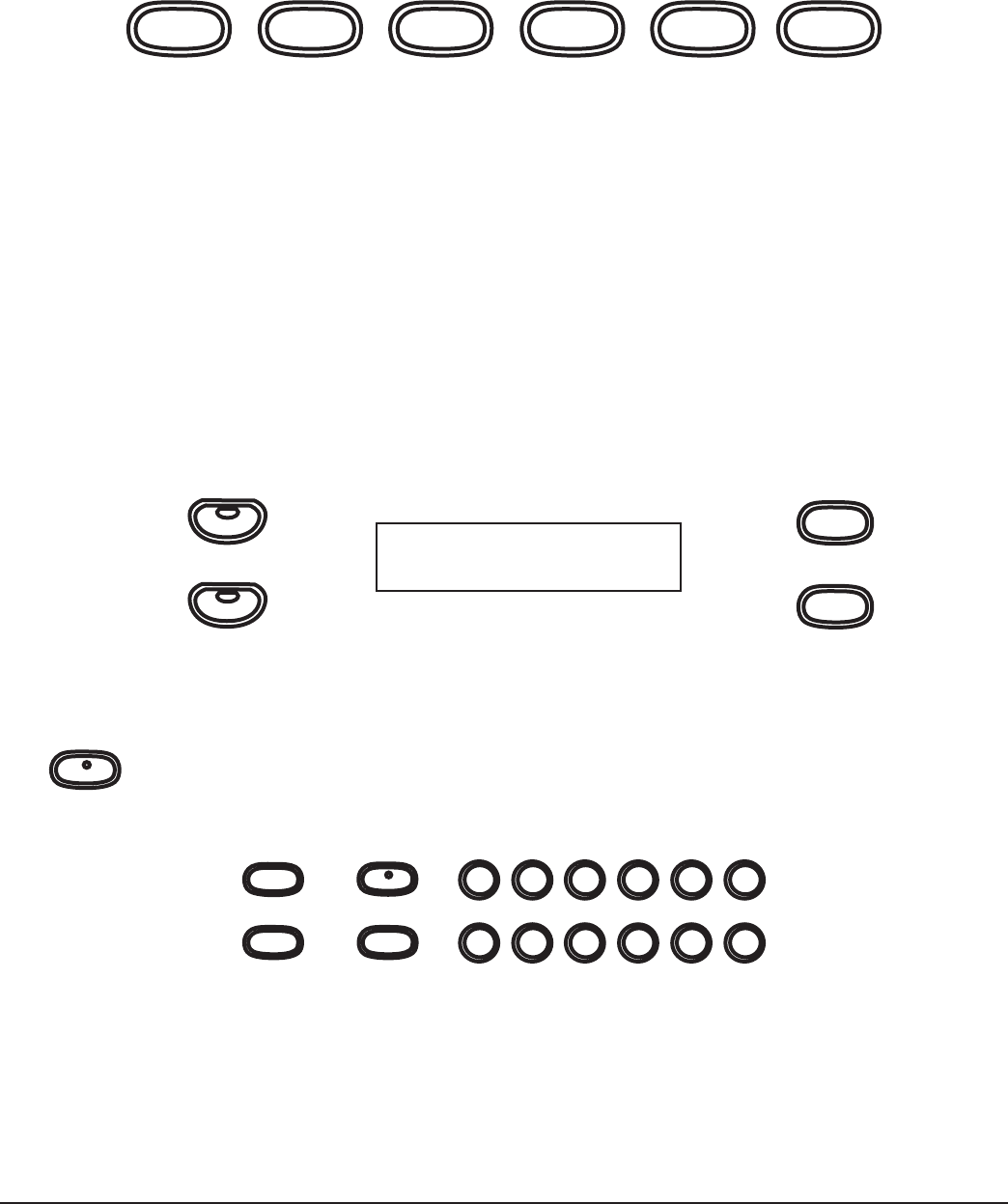
20 OWNER’S MANUAL
Keyboard Voices
Voice Selection — There are 128 GM voices in 16 groups plus 10 Asian ethnic folk instrument voices.
There is a complete list of all 138 voices in the back of the manual.
VOICE PIANO E. PIANO VIBES ROCK ORGAN STRINGS
Quick Select
There are ten voices that can be selected quickly by pressing one of the ve voice
select buttons. These voices are assigned to Instrument Line A and Instrument Line
B. Each Line consists of ve voices. The voice name in Line A is printed above the
voice select button and the voice name in Line B is beneath the button.
1. Press the A/B button to select a voice kit. Selection of the Instrument Lines will
alternate when the A/B button is pressed repeatedly. The indicator will be lit when
Line B is selected.
2. Press the voice select button that corresponds to the desired voice in the
Instrument Line you have selected. The voice name and its number will show on
the display.
FUNCTION
ENTER
TOUCH
O.T.S
Selecting One Of The 138 Voices
1. If the Instrument Voice Button is not already lit press the VOICE button to engage
the voice selection mode, the indicator will turn on.
2. Use the numeric pad or the +/YES, –/NO buttons to select a voice number.
FUNCTION
ENTER
1
6
2
7
3
8
4
9
5
0
+
-
GRAND PIANO
VOICE/STYLE
VOICE/STYLE SELECTION
Please Note: When using the number pads, you must enter three digits to select a
voice number from 001-138. For example, to select voice No. 2 you must enter “002”.
The voice name and its number will show on the display. Please refer to the back of the
manual for a list of all available voices.
VOICE/STYLE
001: Grand Piano
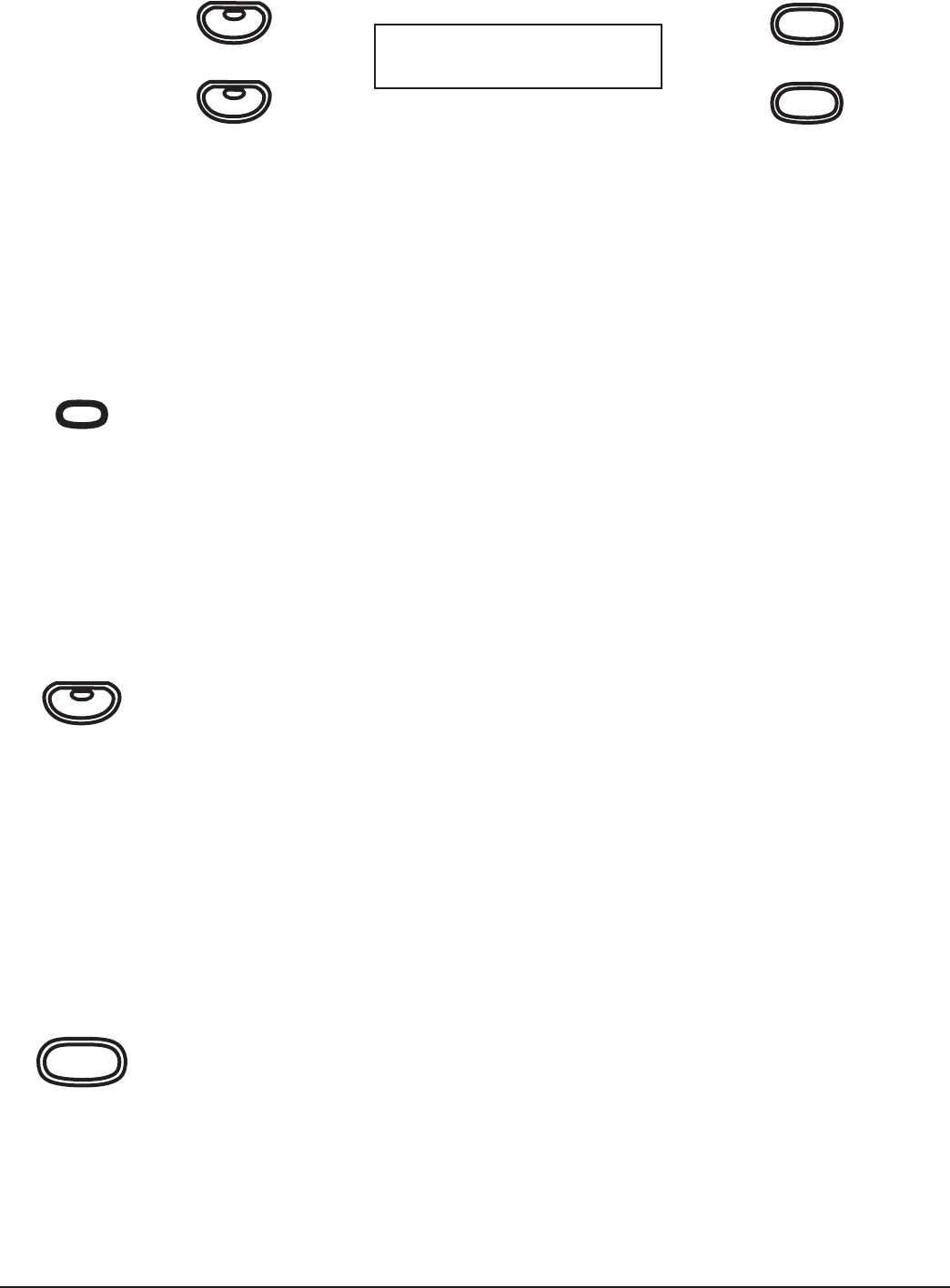
21
MICRO GRANDE DIGITAL PIANO
FUNCTION
ENTER
TOUCH
O.T.S
User Dened Quick Selection Button
You can assign a favorite voice to the voice quick select button in the follow
manner.
1. Select the desired voice by using the numeric pad or the +/YES, –/NO buttons.
Please refer to Selecting one of the 138 Voices.
2. Press and hold the VOICE button.
3. Press, don’t hold, the voice USER button, USER 1 from Line A, or USER 2 from Line B.
The currently selected voice will be assigned to this button to be available for quick
selection. Please Note: the USER button will revert to the default setting when the
power is turned o (USER 1=007:Harpsichord, USER 2=039:Synth Brass1).
Layer (Dual) Voice
Layer, or dual, refers to an additional voice that is tone mixed with the selected
keyboard voice. The assigned layer voice will be heard with the original voice when
the layer feature is engaged.
1. Press the LAYER button, the currently assigned layer voice will show on the display,
and the indicator will light up.
2. Use the +/YES, –/NO buttons or the numeric pad to select the desired voice. The
display will show the layer voice number and name, after three seconds the display
will revert to the selected main voice.
3. Press the LAYER button again to turn the feature o.
Lower Voice
In the lower, or split, mode the keyboard is divided into two sections. To the right of
the Split Point the currently selected main voice, or the layer voice will sound. The
keys to the left of the Split Point can play a dierent instrument voice.
1. Press the LOWER button, the currently assigned lower voice will show on the
display, and the indicator will light up.
2. Use the +/YES, –/NO buttons or the numeric pad to select the desired voice. The
display will show the lower voice number and name, after three seconds the
display will revert to the main voice.
3. Press the LOWER button again to turn the feature o.
USER
LAYER
VOICE
002:Bright Piano

22 OWNER’S MANUAL
Assigning The Split Point For Voice
The keyboard is split into two sections at the split point. The default split point is
the G2 key for voice. A dierent voice split point can be assigned in the Function
menu “Split Point”.
Please see the Function section of this manual for more information.
FUNCTION
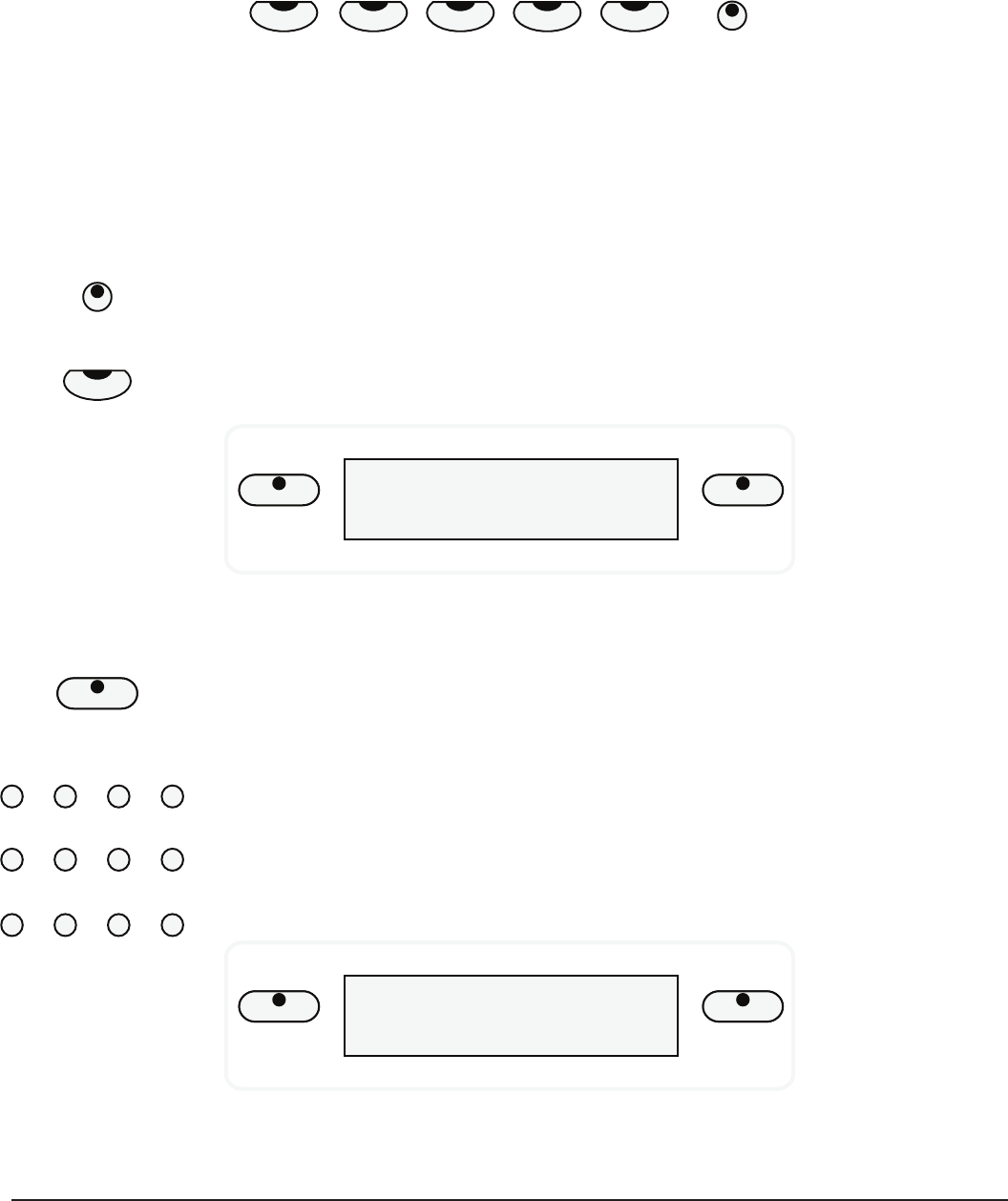
23
MICRO GRANDE DIGITAL PIANO
Rhythm Section
Rhythm Style Selection — This piano oers 100 rhythm styles and a variation of each style pattern
to choose from. There is a complete list of all 100 styles in the back of the manual.
BALLAD
METRONOMEUSER 2
BLUES
BOSSA NOVA POP
JAZZ
ROCK
GOSPEL
LOUNGE
USER 1
Quick Select
There are ten styles that can be selected quickly by pressing one of the ve style
select buttons. These styles are assigned to Line A and Line B. Each Rhythm Style
Line consists of ve styles. The style name in Line A is printed above the style select
button and the voice name in Line B is beneath the button.
1. Press the A/B button to select a Line. Selection of the Lines will alternate when the
A/B button is pressed repeatedly. The indicator will be lit when Line B is selected.
2. Press the style quick select button that corresponds to the desired style in the Line
you have selected. The style name and its number will show on the display.
VOICE STYLE
75: Bossa Nova1
Selecting One Of The 100 Styles
1. Press the STYLE button to engage the style selection mode, the indicator will light
up.
2. Use the numeric pad or the +/YES, –/NO buttons to select a style number while the
indicator is lit.
Please Note: When using the number pads, you must enter two digits to select a
style number from 00-99. For example, to select style No. 4 you must enter “04”. The
style name and its number will be shown on the display. Please refer to the back of the
manual for a list of all available styles.
VOICE STYLE
04: 8BeatPop2
A/B
BOSSA NOVA
LOUNGE
STYLE
1
5
9
2
6 0
3
7
+/YES
4
8 –/NO
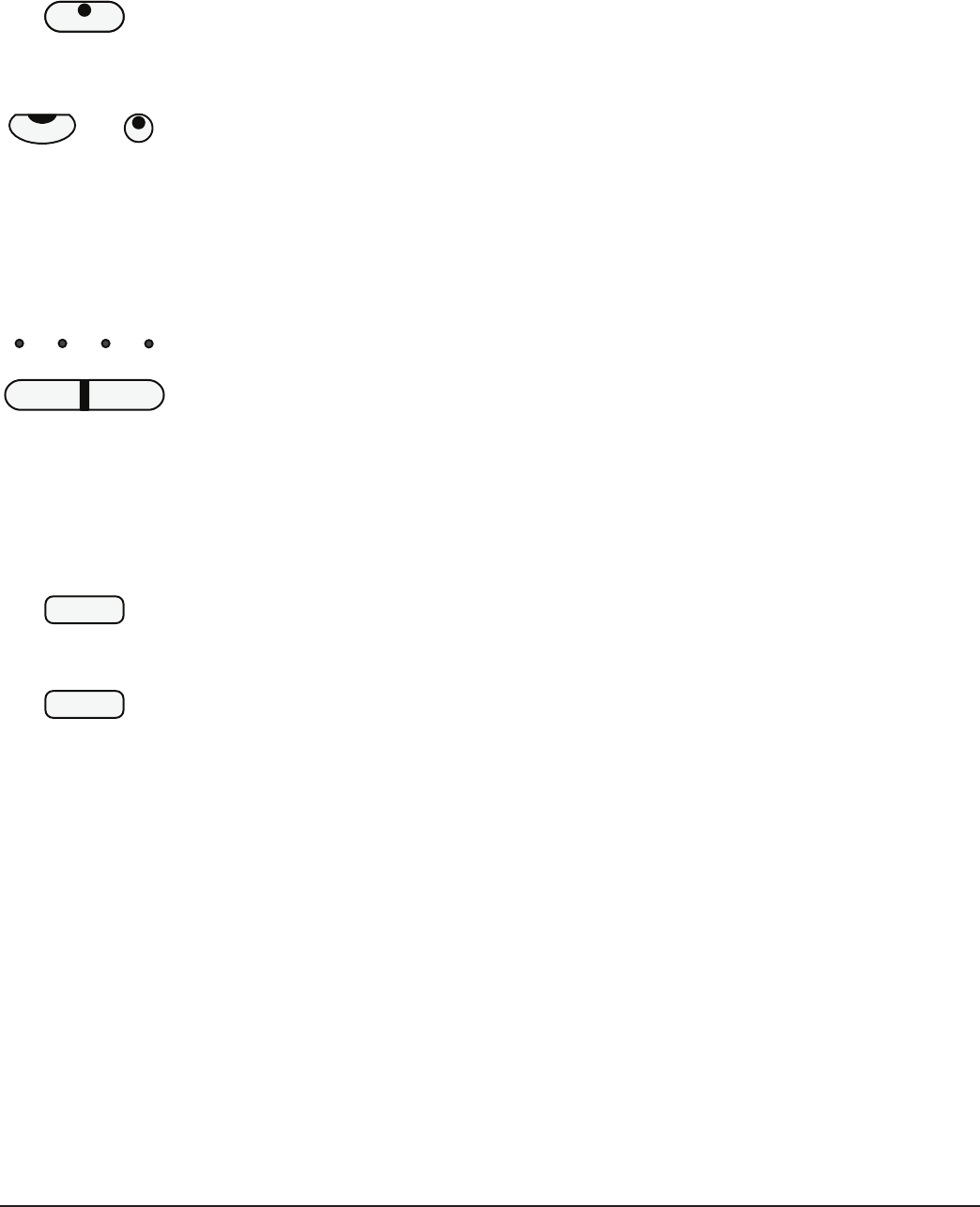
24 OWNER’S MANUAL
User Dened Quick Selection Button
You can assign a favorite rhythm style to the style quick select button in the
following manner.
1. Select the desired rhythm style by using the STYLE button and the numeric pad or
the +/YES, –/NO buttons. Please refer to Selecting one of the 100 Styles.
2. Press and hold the STYLE button.
3. Press, don’t hold, the style USER button, USER 1 from Line A, or USER 2 from Line B.
The currently selected style will be assigned to this button and available for quick
selection. Please note the USER button will revert to the default setting when the
power is turned o (USER 1=40:JiveRock, USER 2=82:Cha-Cha1)
Adjusting The Tempo
There is a four-beat indicator above the TEMPO buttons that indicates the tempo
and the beat for the accompaniment playing. Each style has its own preset tempo.
The tempo can be adjusted before or during rhythm style play by pressing the
either of the –TEMPO+ buttons. When you change the style before you play, the
tempo will be set to that default value. If you change style during play, the tempo
will keep its current value, press the –/+ TEMPO buttons simultaneously to set the
tempo to the new styles default value.
Starting And Stopping The Rhythm Style
There are several ways to start and stop the rhythm style.
Straight Start — The START/STOP button starts the selected rhythm style
immediately with the percussive rhythm. Press the START/STOP button again to
stop the accompaniment.
Starting With An Introduction — All of the 100 styles can be started with a
appropriate introduction. As soon as you press the INTRO/ENDING button, the
rhythm of the introduction will start followed by the main pattern. Press the START/
STOP button to stop the accompaniment or the INTRO/ENDING button again to
stop with an ending pattern.
Please Note: if you want the selected rhythm style to be engaged again after the
ending pattern has been completed, press the FILL IN button while the ending pattern is
engaged.
STYLE
USER 2
USER 1
A/B
– TEMPO +
START/
STOP
INTRO/
ENDING
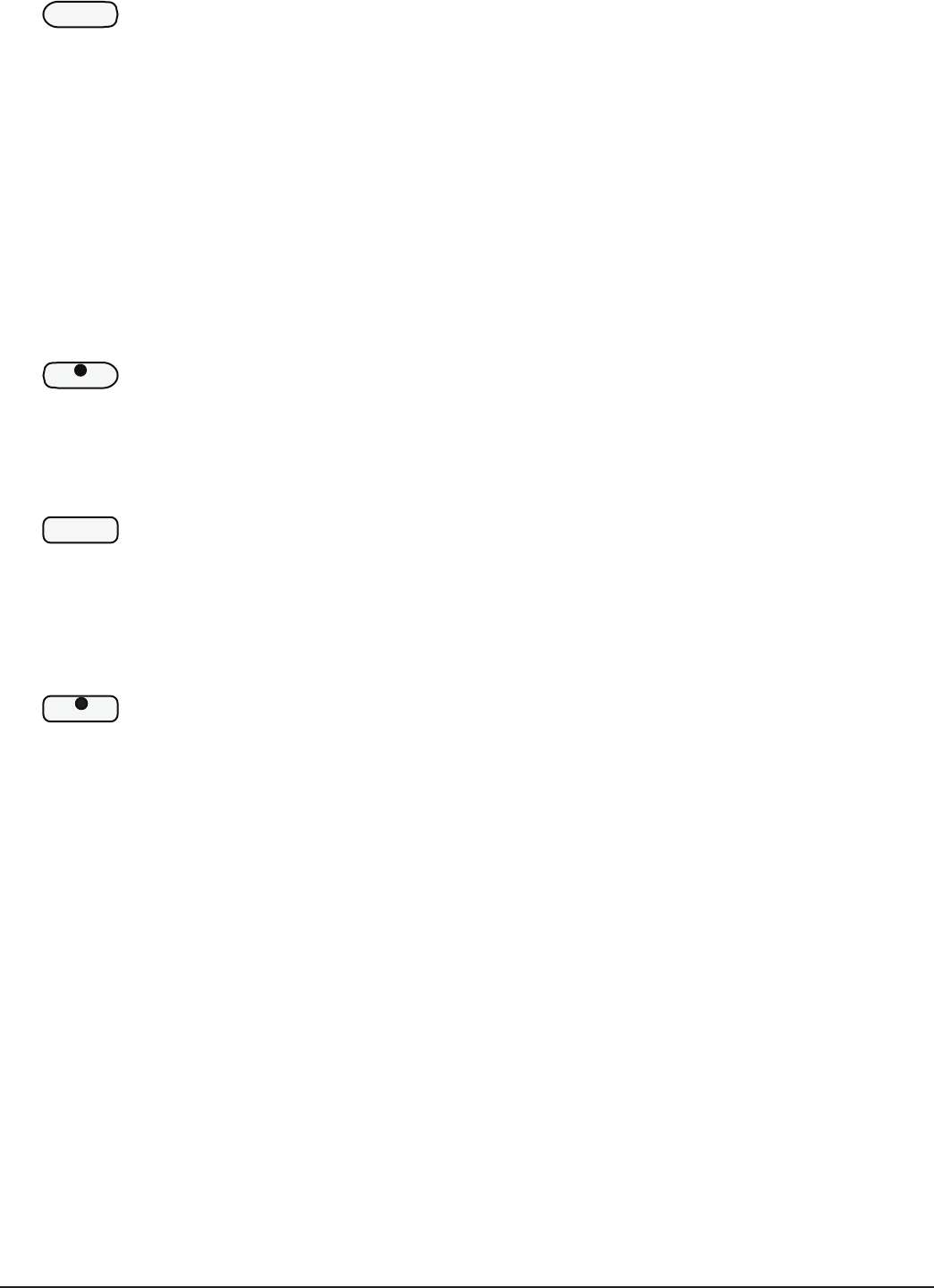
25
MICRO GRANDE DIGITAL PIANO
Synchronized Start — Synchronized Start engages the accompaniment in the
standby mode.
Press the SYNC START button, the beat indicator dots above the TEMPO buttons
will blink at the current tempo, showing that the synchronized start mode is ready.
The rhythm style will start as soon as you play in the auto accompaniment section
of the keyboard. You may add an introduction by pressing the INTRO/ ENDING
button after pressing the SYNCH START button.
Press the START/STOP or the SYNCH START buttons to stop the accompaniment. If
the SYNCH START button is used, the synchronized start mode will be on standby.
Use the INTRO/ENDING button to stop with an ending pattern.
Variation
To select the variation of the main patterns, press the VARIATION button. The
indicator will light up. If you press the VARIATION button, then press the INTRO/
ENDING button, the variation pattern will play after the introduction.
Fill - In
The ll feature will insert a short rhythmic pattern of one to two measures in
length, depending on the rhythm style selected and the variation. Holding down
the FILL IN button will extend the ll indenitely.
Assigning The Split Point For The Auto Accompaniment
The keyboard is split into two sections at the split point. The default split point
is the G2 key for auto accompaniment. A dierent split point for the auto
accompaniment can be assigned in the Function menu “Auto A.Split”. Please see
the Function section of this manual for more information.
SYNCH
START
VARIATION
FILL IN
FUNCTION
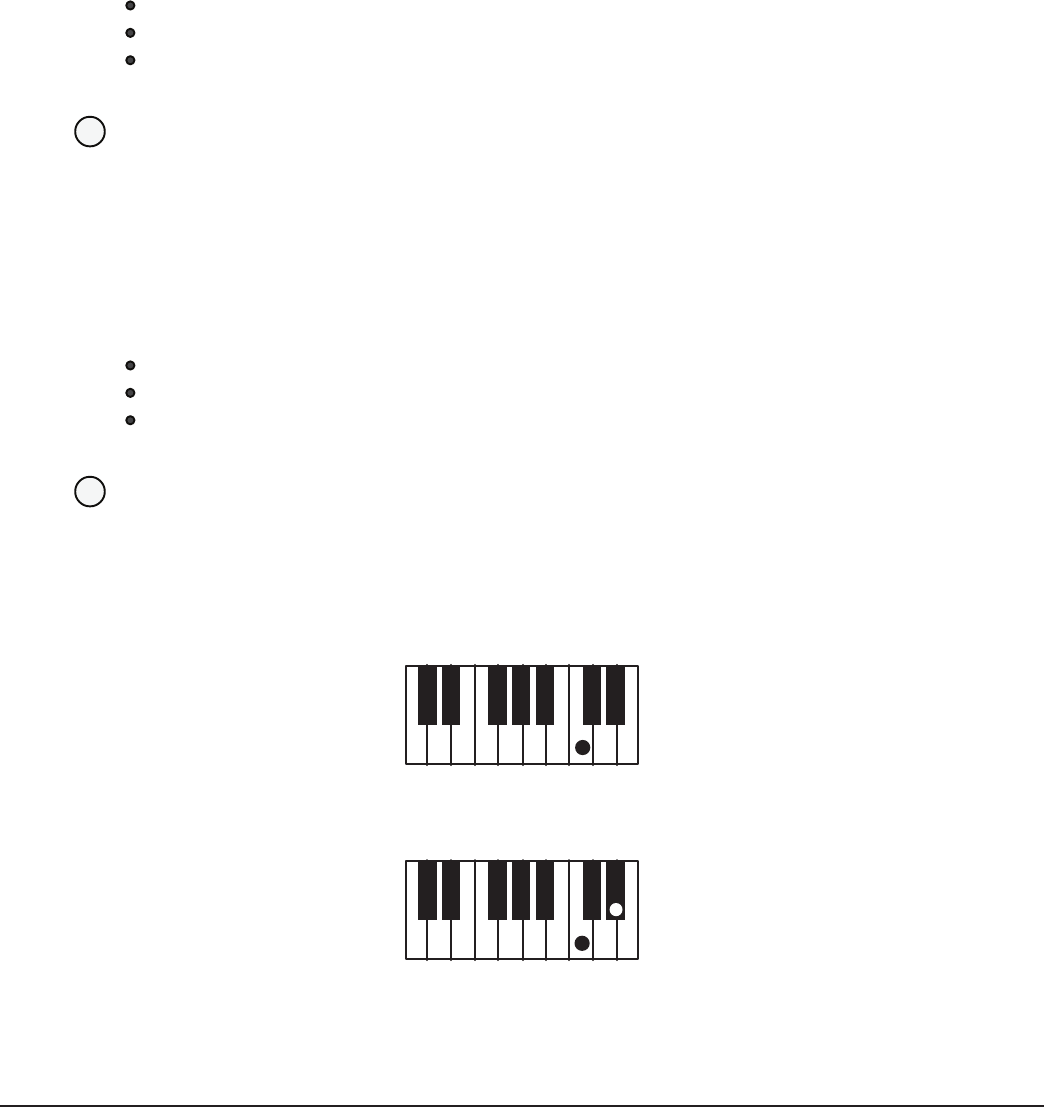
26 OWNER’S MANUAL
Auto Accompaniment
Auto Accompaniment (Auto Bass Chord) — The rhythm styles have their own auto
accompaniment, dedicated to that rhythm style. These auto accompaniments patterns create fully
orchestrated rhythm, bass and chord progressions based on the chords that you play with your left
hand. The selected rhythm style determines the characteristics of the auto accompaniment. The auto
accompaniment section of the keyboard is assigned by the split point. The keys on the left of the split
point are reserved for the auto accompaniment. The keys to the right are available for normal playing.
Auto Bass Chord Fingering
This piano has three auto accompaniment ngering modes, single, ngered, and
piano.
1. Press the ACCOMP button until the indicator light until the Fingering mode that
you desire is selected.
2. Press the START/STOP or the SYNCH START buttons to start the rhythm style. Press
the INTRO/ENDING button to start with an introduction.
3. Press the START/STOP or the SYNCH START buttons to stop the accompaniment, or
press the INTRO/ENDING button to stop with an ending.
Single (Intelligent) Mode
Single ngering mode makes it simple to produce four types of orchestrated
accompaniment chords using a minimum of ngers, ( one, two, or three ngers
at the most), while playing in the auto accompaniment section of the keyboard.
In this mode, keys in the auto accompaniment section of the keyboard are
used to produce major, seventh, minor, and minor-seventh chords. The auto
accompaniment will start with the percussive rhythm as soon as a recognized
chord is played. The accompaniment produced is perfectly matched to the
selected rhythm style.
Major Chord: Press any key in the auto accompaniment section of the keyboard.
The key you press determines the root note of the major chord.
Minor Chord: Press the root key and two keys to its left in the auto
accompaniment section of the keyboard simultaneously.
ACCOMP
SINGLE
FINGERED
PIANO
ACCOMP
SINGLE
FINGERED
PIANO
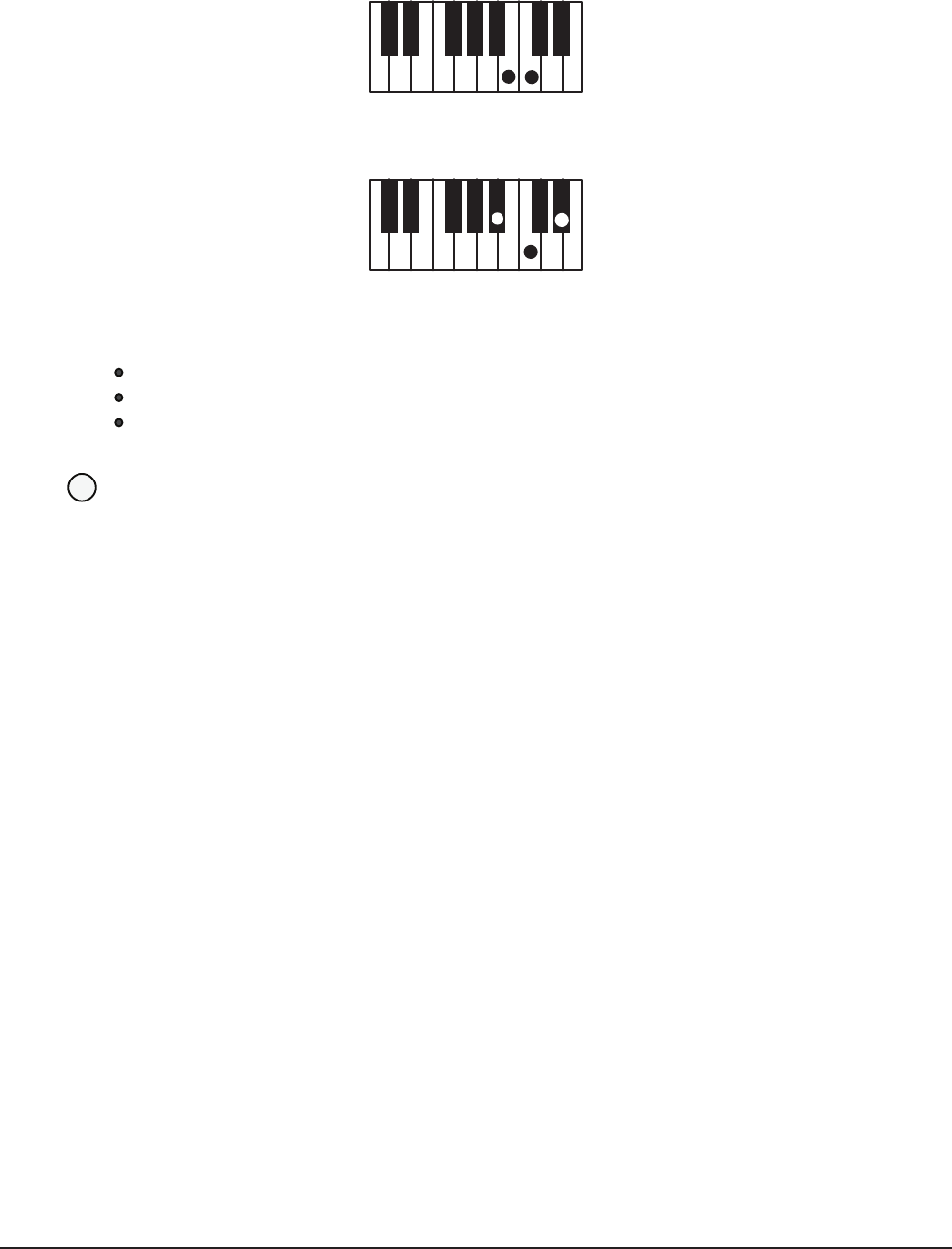
27
MICRO GRANDE DIGITAL PIANO
Seventh Chord: Press the root key and one key to its left (7th key) in the auto
accompaniment section of the keyboard simultaneously.
Minor-Seventh Chord: Press the root key and both the rst and second keys to its
left in the auto accompaniment section of the keyboard simultaneously.
Fingered Mode
The ngered mode is ideal if you already know how to play chords on the
keyboard. It allows you to play the chords in the auto accompaniment section of
the keyboard that produce the selected auto accompaniment pattern.
Please note, if a chord played cannot be recognized (ngered beyond the table),
the previous chord will keep playing. An unrecognized chord cannot start a bass
chord in the straight start mode, and cannot start the auto accompaniment in the
synchronized start mode.
The following “Fingering Guide” table lists all of the 31 playable chords of this
mode.
ACCOMP
SINGLE
FINGERED
PIANO
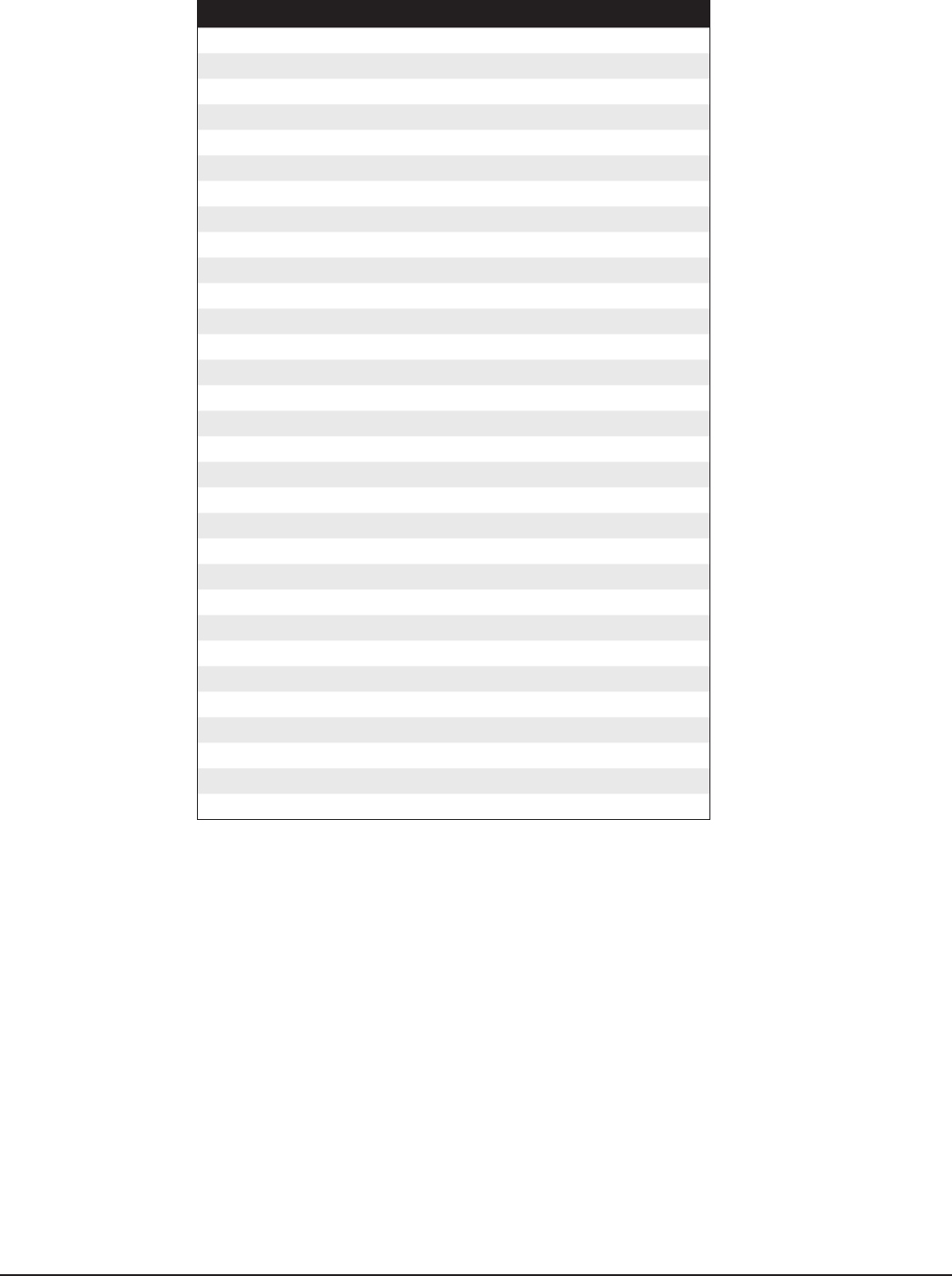
28 OWNER’S MANUAL
Fingering Guide
CHORD MARK FINGERING
Major M 1-3-5
Major sixth M6 1-3-5-6
Major seventh M7 1-3-(5)-7
Major seventh sharp eleventh M7 #11 1-(2)-3-#4-(5)-7
Major add ninth M 9 1-2-3-5
Major seventh ninth M7 9 1-2-3-(5)-7
Major sixth add ninth M6 9 1-2-3-(5)-6
Augmented Aug 1-3-#5
Minor m 1-b3-5
Minor sixth m6 1-b3-5-6
Minor seventh m7 1-b3-(5)-b7
Minor seventh atten fth m7b5 1-b3-b5-b7
Minor add ninth m 9 1-2-b3-5
Minor seventh add ninth m7 9 1-2-b3-(5)-b7
Minor seventh add eleventh m7 11 1-(2)-b3-4-5-(b7)
Minor major seventh mM7 1-b3-(5)-7
Minor major seventh add ninth mM7 9 1-2-b3-(5)-7
Diminished Dim 1-b3-b5
Diminished seventh Dim7 1-b3-b5-6
Seventh 7 1-3-(5)-b7
Seventh suspend fourth 7sus4 1-4-5-b7
Seventh add ninth 7 9 1-2-3-(5)-b7
Seventh sharp eleventh 7 #11 1-(2)-3#4-(5)-b7
Seventh thirteenth 7 13 1-3-(5)-6-b7
Seventh atted fth 7 b5 1-3-b5-b7
Seventh atted ninth 7 b9 1-b2-3-(5)-b7
Seventh atted thirteenth 7 b13 1-3-5-b6-b7
Seventh sharp ninth 7 #9 1-#2-3-(5)-b7
Major seventh augmented M7aug 1-3-#5-7
Seventh augmented 7aug 1-3-#5-b7
Suspended fourth Sus4 1-4-5
Please Note: the notes listed in parentheses can be omitted.
The listed chord ngerings are all in root note position, other inversions can be
used with the exception of:
1. The M6 chords are only recognized in root note position. All other inversions are
interpreted as m7.
2. The 6 9 chords are only recognized in root note position. All other inversions are
interpreted as minor chords.
3. The m6 chords are only recognized in root note position. All other inversions are
interpreted as m7b5.
4. With aug and dim7 chords the lowest note played is assumed to be the root.
5. With 7#11 chords the lowest note played is assumed to be the root or b7.
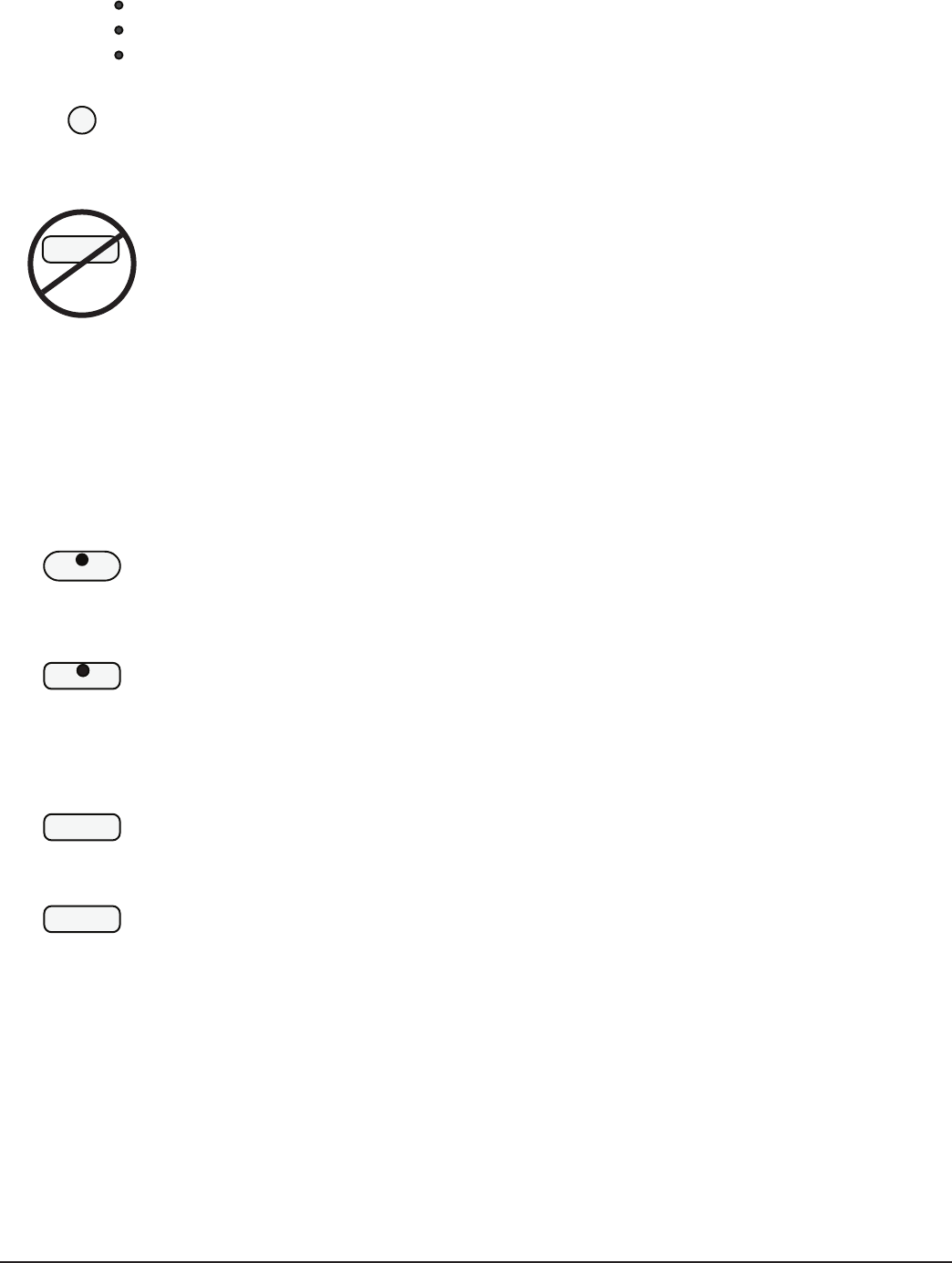
29
MICRO GRANDE DIGITAL PIANO
Piano Chord Mode
When the Piano ngering chord mode is engaged you may enter chords anywhere
on the keyboard, and the auto accompaniment will make complete styled
arrangements. You are not limited to the auto accompaniment section or the range
of the split point. In this regard there is no keyboard split point function for this
Piano Chord Mode.
Manual Bass Chord
When engaged in the single or ngered mode, you may play individual keys in
the auto accompaniment section of the keyboard. The voice on this section of the
keyboard will be a layered bass and chord voice determined by the current style.
This is a split voice mode, with the right hand playing the main voice.
Auto Harmony
With the harmony feature engaged, a single note on the right-hand section of
the keyboard will sound with additional auto harmony notes. The note played in
the right-hand section of the keyboard determines the root key of the harmony. If
more than one note is played only the highest note will add harmony.
Please Note: auto harmony is only available when the auto accompaniment is
engaged.
Press the HARMONY button to turn the feature on and o.
There are four harmony types that can be selected, duet, close harmony, open
harmony, and octave. The harmony type selection is assigned in the Function
menu. Use the “Harmony Type” menu to select the type of harmony.
Please see the Function section for more information.
Starting And Stopping The Auto Accompaniment
Straight Start — The START/STOP button starts the auto accompaniment as
soon as you play a recognized chord in the auto accompaniment section of the
keyboard. Press the START/STOP button again to stop the accompaniment.
Starting With An Introduction — All of the 100 styles can be started with an
appropriate introduction. Press the INTRO/ENDING button, the introduction,
followed by the main pattern will start as soon as you play a recognized chord in
the auto accompaniment section of the keyboard.
Press the START/STOP button to stop the accompaniment or the INTRO/ENDING
button again to stop with an ending pattern.
Please Note: If you want the auto accompaniment to be engaged again after the
ending pattern has been completed, press the FILL IN button while the ending pattern is
playing.
ACCOMP
SINGLE
FINGERED
PIANO
START/
STOP
HARMONY
FUNCTION
START/
STOP
INTRO/
ENDING
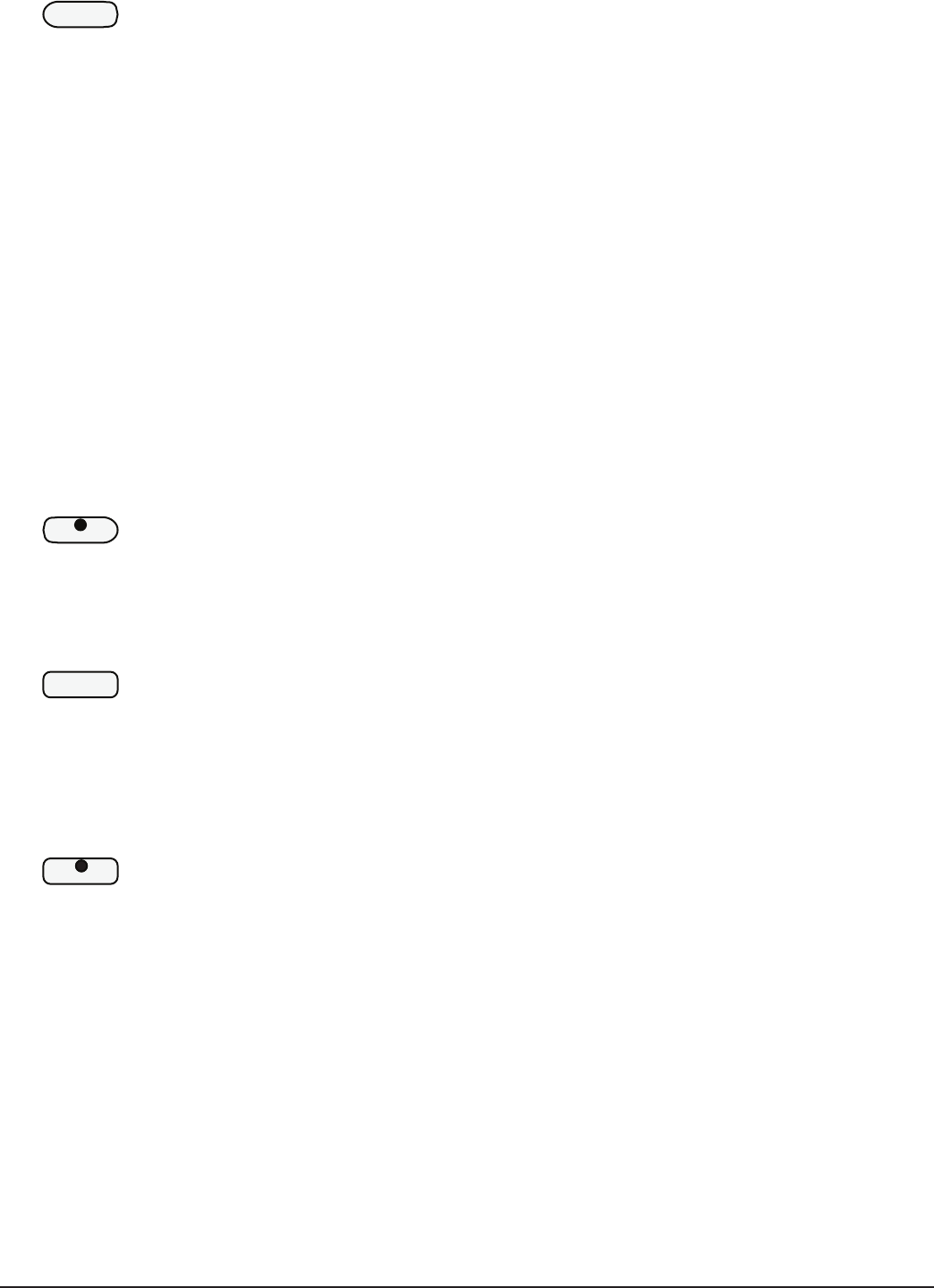
30 OWNER’S MANUAL
Synchronized Start — Synchronized Start mode makes the auto accompaniment
standby. The auto accompaniment will start as soon as you play a recognized chord
in the auto accompaniment section of the keyboard.
1. Press the SYNC START button, the beat indicator dots above the TEMPO buttons
will blink at the current tempo, indicating that the synchronized start mode is
ready.
Please Note: You may add an introduction by pressing the INTRO/ENDING button
after pressing the SYNCH START button.
2. Play a recognized chord in the Auto Accompaniment Section of the piano.
If the auto accompaniment is o, (the auto accompaniment indicator is o), only
the percussive rhythm will play.
3. Press the START/STOP or the SYNCH START buttons to stop the accompaniment.
If the SYNCH START button is used, the synchronized start mode will be on
standby. Use the INTRO/ENDING button to stop with an ending pattern.
Variation
To select the variation of the main patterns, press the VARIATION button. The
indicator will light up. If you press the VARIATION button, then press the INTRO/
ENDING button, the variation pattern will play after the introduction.
Fill-In
The ll feature will insert a short rhythmic pattern of one to two measures in
length, depending on the rhythm style selected and the variation.
Holding down the FILL IN button will extend the ll indenitely.
Assigning The Split Point For The Auto Accompaniment
The keyboard is split into two sections at the default split point G1 key for auto
accompaniment.
A dierent split point for the auto accompaniment can be assigned in the Function
menu “Auto A.Split”. Please see the Function section of this manual for more
information.
SYNCH
START
VARIATION
FILL IN
FUNCTION

31
MICRO GRANDE DIGITAL PIANO
Metronome
The built in metronome is a timing device. It is used as a timing reference to aid with practice or
performance.
Press the METRONOME button to engage the metronome feature. The button’s
LED Indicator will turn on, the display screen will show the Metronome menu and
the metronome sound will start immediately.
Time Signature
The time signature can be set to 2/4, 3/4, 4/4, 6/8 and 9/8.
Use the +/YES and the –/NO buttons to set the bottom time signature.
Tempo
The tempo of the time signature can be adjusted, use the – TEMPO + buttons
to adjust the tempo from 40–240 bpm (beats per minute). Press the – TEMPO +
buttons simultaneously to recall the default setting of 100 bpm. Adjusting the
metronome tempo may also aect the rhythm style tempo.
METRONOME
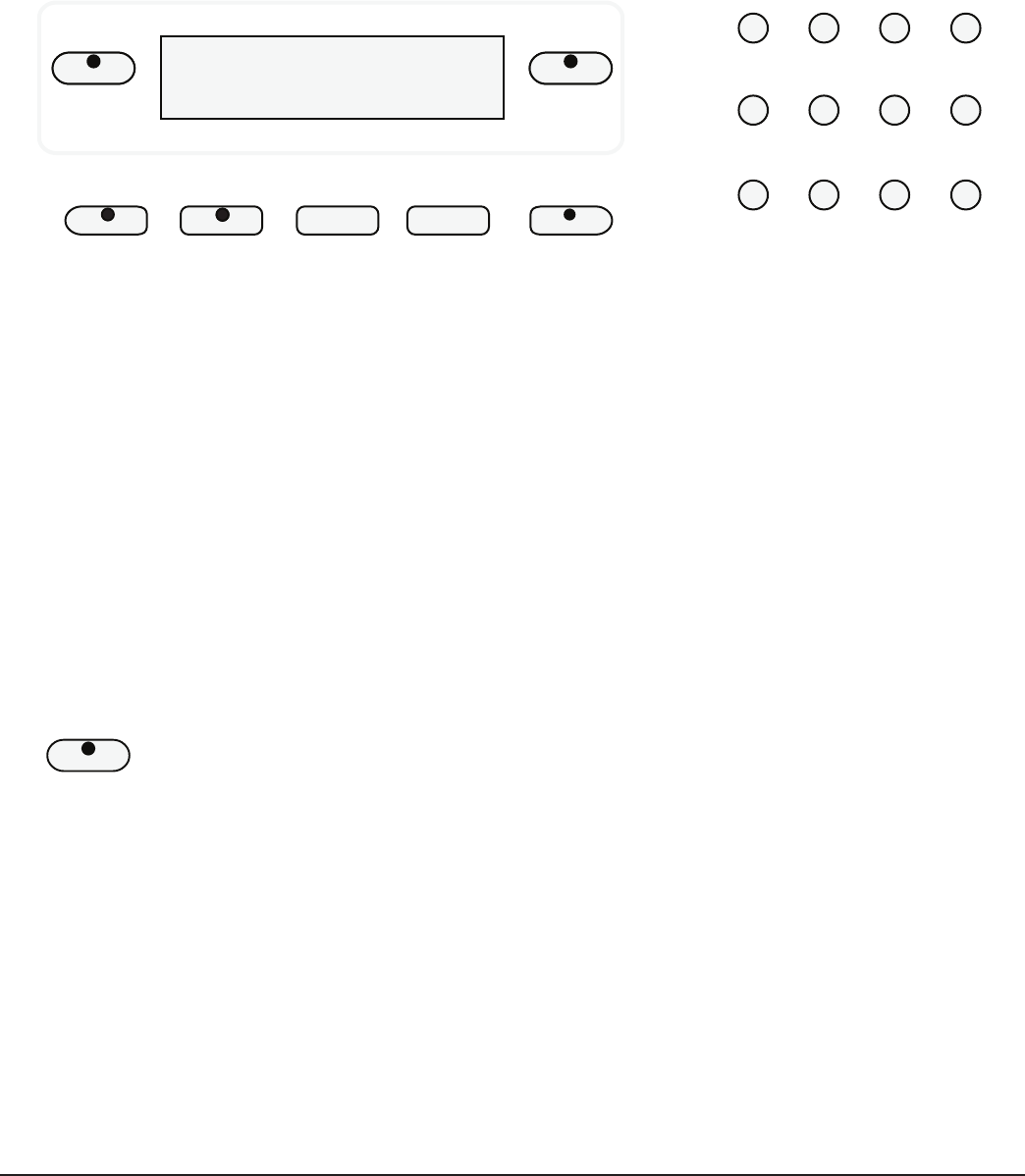
32 OWNER’S MANUAL
Function
The Function mode is used to set up or to adjust various parameters related to the operation of this
keyboard. With the FUNCTION button engaged you may access the menu for the Metronome, Reverb
level, Chorus level, Touch sensitivity, Lower Split point for voice, Split point for auto accompaniment,
tuning, the Drum kit selection, and Harmony type selection.
FUNCTION PAGE qPAGE pUSER REGDEMO/SONG
1
5
9
2
6 0
3
7
+/YES
4
8 –/NO
VOICE STYLE
Metronome
Using The Function Menu
1. Press the FUNCTION button. The rst menu item that can be manipulated will
appear on the display.
2. Press the PAGE p or the PAGE q buttons until the menu you wish to access
appears on the display screen.
3. Press the +/YES button to show the current parameter for your selected function.
4. Use the number pad or the +/YES, –/NO buttons to set a new parameter.
Note: Pressing the +/YES and the –/NO buttons simultaneously will recall the default
setting.
5. Press the FUNCTION button again to exit this mode and conrm your selection.
Reverb Level Setting
Reverb simulates the eect of playing in a big room or hall where the sound
reverberates o the walls and ceiling. The reverb eect is engaged automatically
when the power is turned on. You can switch the reverb feature on and o by
pressing the REVERB button. Select the level of reverb from the Function menu.
1. Press the FUNCTION button.
2. Press the PAGE p or the PAGE q buttons until the “Reverb Level” menu appears.
3. Press the +/YES button and the current reverb level will be shown.
4. Use the +/YES button to increase the reverb level or the –/NO buttons to decrease
the level. The number pad can also be used to directly enter a value ranged from
01-127. Press the +/YES, –/NO buttons simultaneously to recover the default setting.
5. Press the FUNCTION button again to exit the function setting mode.
REVERB
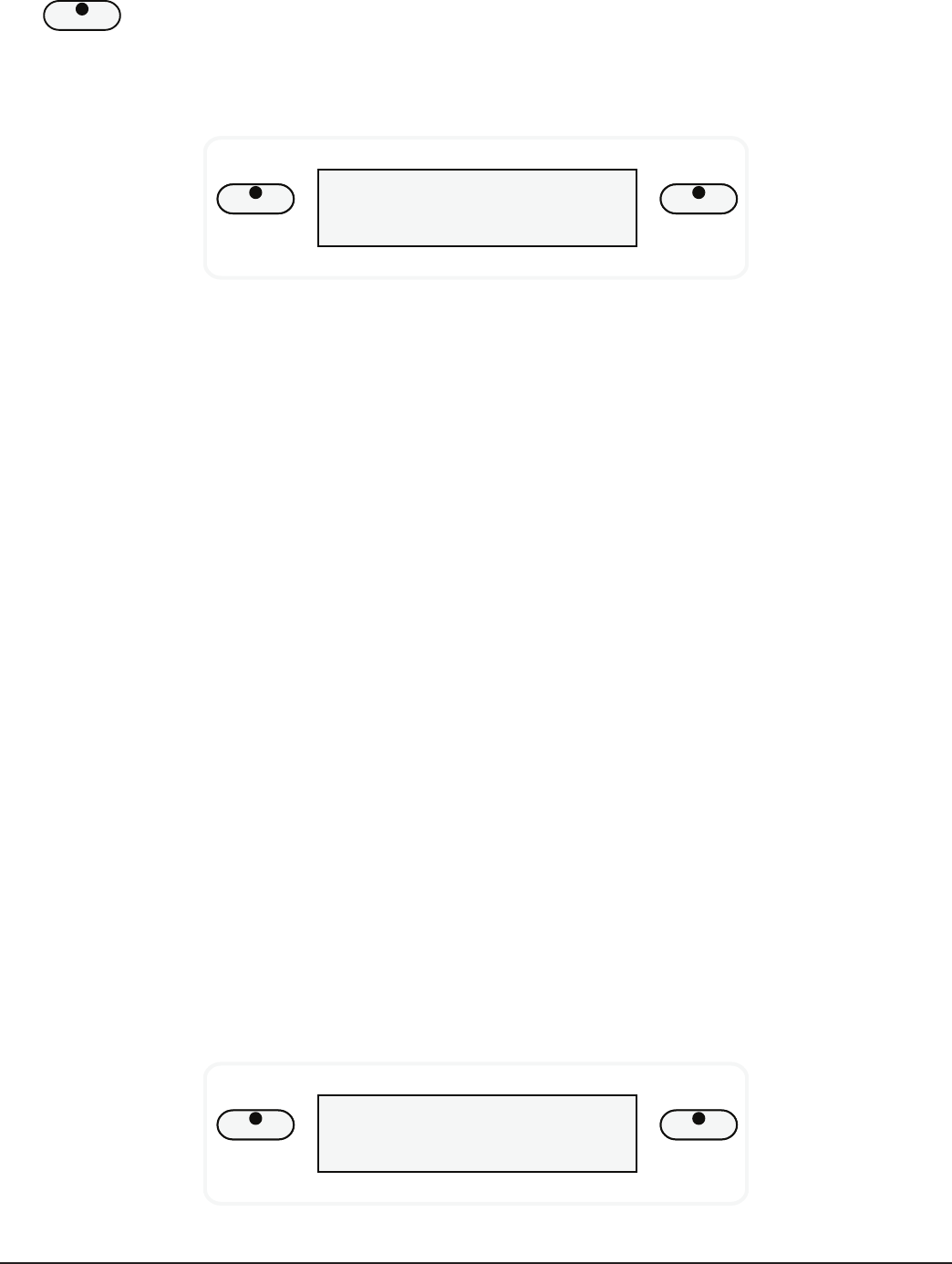
33
MICRO GRANDE DIGITAL PIANO
Chorus Level Setting
The Chorus eect enriches your selected instrument voice by adding depth and
texture.
Press the CHORUS button to engage the chorus eect, the indicator will light up.
Adjust the level of chorus in the Function menu.
VOICE STYLE
Chorus Level
1. Press the FUNCTION button.
2. Press the PAGE p or the PAGE q buttons until the “Chorus Level” menu appears.
3. Press the +/YES button to conrm your selection and the current Chorus level will
be shown.
4. Use the +/YES to increase the chorus level or the –/NO buttons to decrease the level.
The number pad can also be used to directly enter a value ranged from 01-127.
Press the +/YES, –/NO buttons simultaneously to recover the default setting.
5. Press the FUNCTION button again to exit the function setting mode.
Touch
The piano oers four types of keyboard touch sensitivity settings, soft, normal,
hard, and xed. These are also known as velocity settings and are designed to suit
your style of playing.
The normal setting is selected automatically when the piano is turned on. The
touch response can be changed with the function feature.
Soft is the most sensitive keyboard response which permits maximum sound
levels with a light touch.
Normal is an intermediate response suitable for most styles of music. Normal is the
default setting.
Hard is a less sensitive keyboard response which requires a heavier touch to obtain
maximum sound levels.
Fixed does not oer any touch sensitivity. Each key plays at full volume no matter
how hard the piano key is hit. It is commonly used on Harpsichord and Organ
voices.
VOICE STYLE
Touch
CHORUS
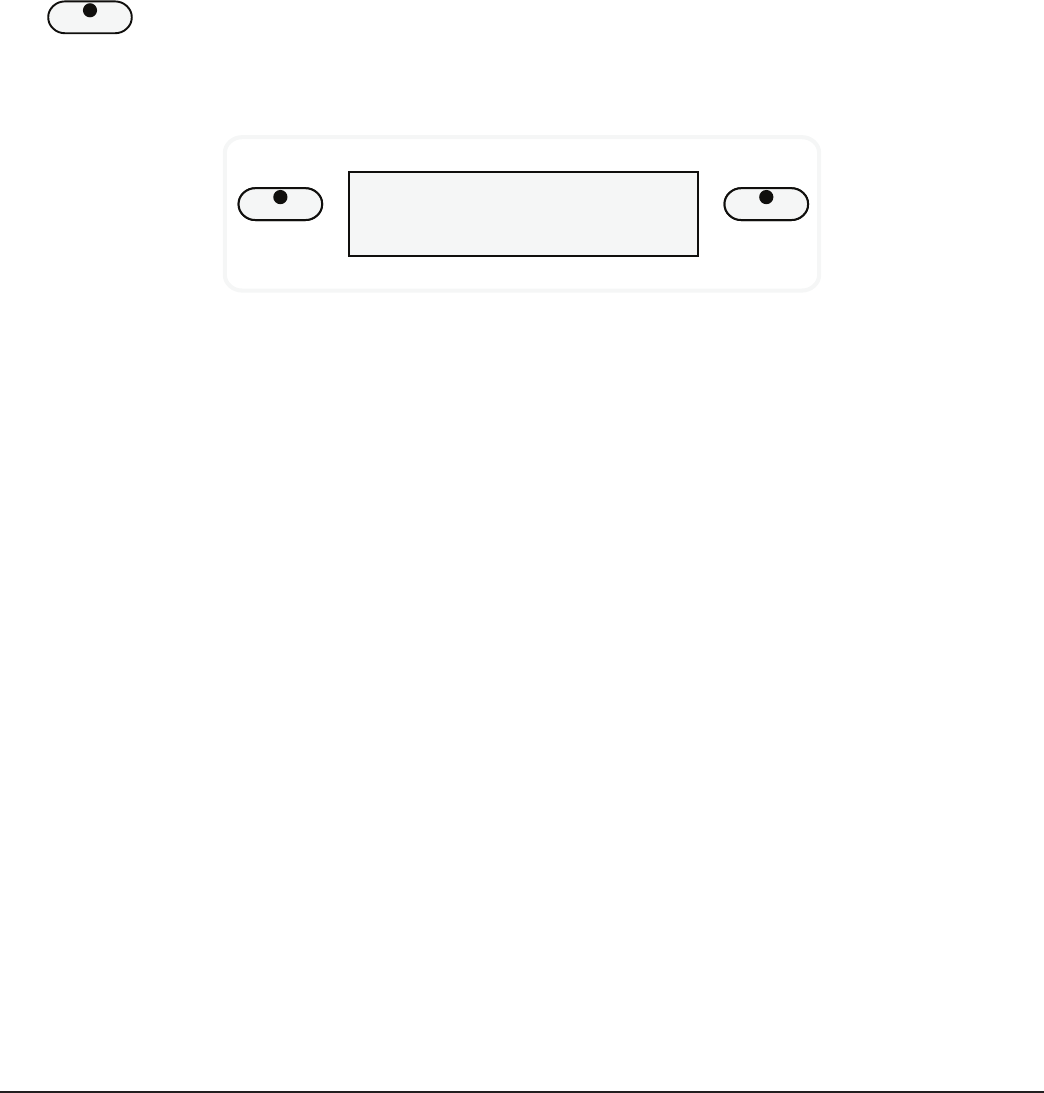
34 OWNER’S MANUAL
1. Press the FUNCTION button.
2. Press the PAGE p or the PAGE q buttons until the “Touch” menu appears.
3. Press the +/YES button to conrm your selection. The current touch response
setting will be shown.
4. Use the +/YES, –/NO buttons to select a touch response.
5. Press the FUNCTION button again to conrm your selection and exit the function
setting mode.
Changing The Split Point For Lower Voice
When the lower mode is engaged the keyboard is divided into two parts at the
split point. In the right hand section the original or Upper voice will sound. In the
left hand section a new instrument voice can be assigned, the lower voice. The split
point for the Lower section can be changed in the Function feature.
VOICE STYLE
Split Point
1. Press the FUNCTION button.
2. Press the PAGE p or the PAGE q buttons until the “Split Point” menu appears.
3. Press the +/YES button to conrm your selection and the current voice split point
will be shown.
4. Use the +/YES button to shift the split point up the keyboard, to the right, and the
–/NO button to shift the split point down the keyboard, to the left. The number
pad can also be used to enter the split point directly (by key number) from C3–C7.
Press the +/YES, –/NO buttons simultaneously to recover the default setting of G2.
5. Press the FUNCTION button again to conrm your selection and exit the function
setting mode.
LOWER
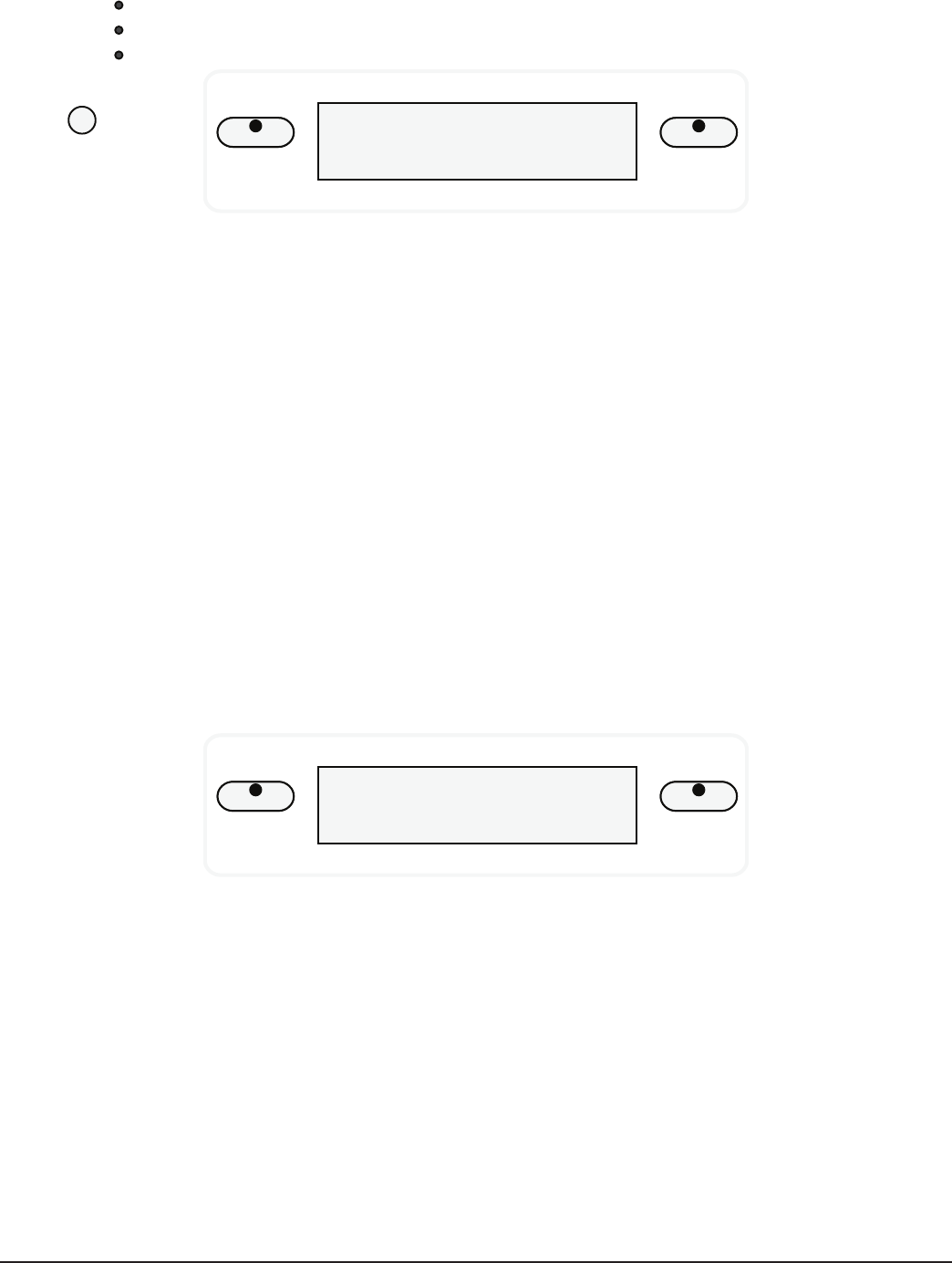
35
MICRO GRANDE DIGITAL PIANO
Changing The Split Point For Auto Accompaniment
The split point that divides the keyboard can also be changed in the function
menu.
VOICE STYLE
Auto A.Split
1. Press the FUNCTION button.
2. Press the PAGE p or the PAGE q buttons until the “Auto A.Split” menu appears.
3. Press the +/YES button to conrm your selection and the current auto
accompaniment split point will be shown.
4. Use the +/YES button to shift the split point up the keyboard, to the right, and the
–/NO button to shift the split point down the keyboard, to the left, from AO–C3.
Press the +/YES, –/NO buttons simultaneously to recover the default setting of G2.
5. Press the FUNCTION button again to conrm your selection and exit the function
setting mode.
Master Tune
The pitch of this piano is very accurate and stable, it is automatically set to standard
A440 pitch when the piano is turned on. The tuning feature makes it possible to
tune the pitch of the instrument in ne intervals. If necessary, you can alter the
piano pitch. Tuning can be accomplished over –50 to +50 semi tone steps, or cents.
VOICE STYLE
Master Tune
1. Press the FUNCTION button.
2. Press the PAGE p or the PAGE q buttons until the “Master Tune” menu appears.
3. Press the +/YES button the tuning value will be shown.
4. Use the +/YES button to increase the value or the –/NO buttons to decrease the
value. Press the +/YES, –/NO buttons simultaneously to recover the default setting
of 00.
5. Press the FUNCTION button again to conrm your selection and exit the function
setting mode.
ACCOMP
SINGLE
FINGERED
PIANO

36 OWNER’S MANUAL
Auto Harmony Type Selecting
When the HARMONY button is engaged, a single note on the right-hand section
of the keyboard will sound with additional auto harmony notes, when the auto
accompaniment is engaged. There are four types of harmony that can be selected.
Duet adds a harmonizing note sounding below the single right hand note that you
supply when the chord accompaniment is playing.
Close harmony adds two harmonizing notes sounding below the single right
hand melody note that you supply, when the chord accompaniment is playing.
Open harmony
Octave add a note one octave below the note you play in the right hand section of
the keyboard when the chord accompaniment is playing.
1. Press the FUNCTION button, then the +/YES button to conrm.
2. Press the PAGE p or the PAGE q buttons until the “Harmony Type” menu appears.
3. Press the +/YES button to conrm your selection. The current harmony type will be
shown.
4. Use the +/YES or –/NO buttons to select a harmony type.
5. Press the FUNCTION button again to exit the function setting mode.
HARMONY
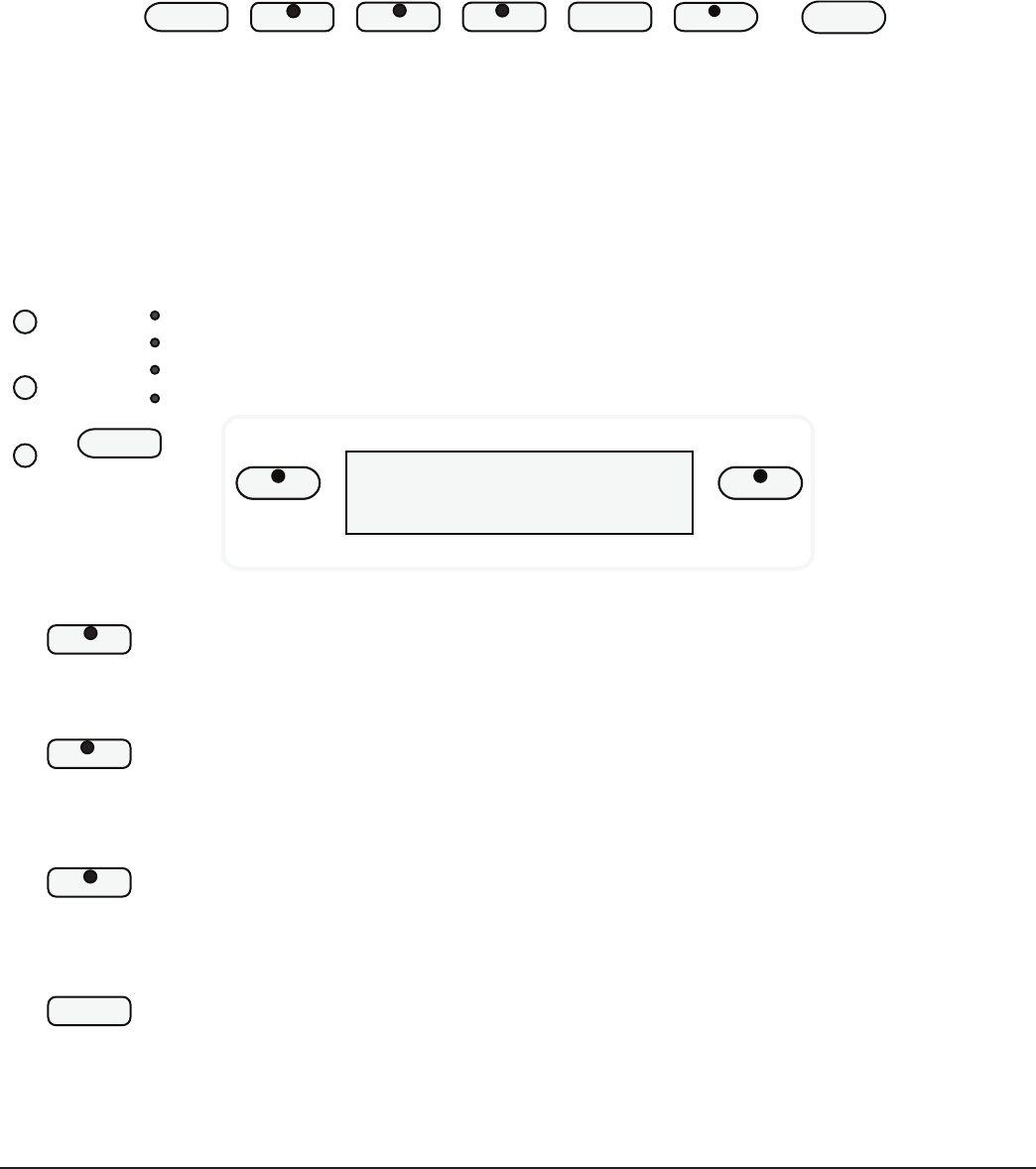
37
MICRO GRANDE DIGITAL PIANO
Record
This piano is equipped with a real time recorder, able to store four songs, each with a 3-track sequencer.
It will record all note events and the accompaniment as they are performed. This recorded information
is nonvolatile and therefore will not be lost when the power is turned o. All the tracks can playback
separately or together as a complete song.
PLAY ALL
ACCOMP
SAVE
MELODY 2
UTILITY
REC
LOAD
MELODY 1
PLAY/STOP
PLAY/STOP
USER SONG CARD
Recording
1. Prepare - Prepare to record by setting the voice, style, tempo and reverb level and
other parameters as desired.
These settings can be stored into a registration memory for easy recall, please see
the registration memory section for more information.
2. Select a Song - Press the USER SONG button, and use the +/YES, –/NO buttons to
select a song, the display will show the song number selected. This is where the
recorded information will be stored.
VOICE STYLE
1: User Song
3. Select a track - Melody will record, all notes.
There are two tracks available for recording the melody, these are assigned by
pressing the MELODY 1 or the MELODY 2 button.
Auto Accompaniment will record all the auto accompaniment events just as they
are played.
The ACCOMP track button will select the accompaniment track.
Press and hold down the REC button, then press the track button that you want to
record in. The corresponding track indicator will blink, and the four dots of the beat
indicator will blink with the current tempo, to show that the recorder is on standby.
If you already have a recorded track(s) in the selected song, that indicator will also
be lit and the recorded music will play, as a reference for you while you record the
new track. If you do not wish for previously recorded tracks to play while you are
recording, press the corresponding track button to turn the indicator light o.
Please Note: be careful not to hold the REC button down while deselecting a track as
that will put that track on standby, and immediately erase the existing recording.
USER SONG
0
+/YES
–/NO
1
2
3
4
UTILITY
REC
PLAY ALL
ACCOMP
SAVE
MELODY 2
LOAD
MELODY 1
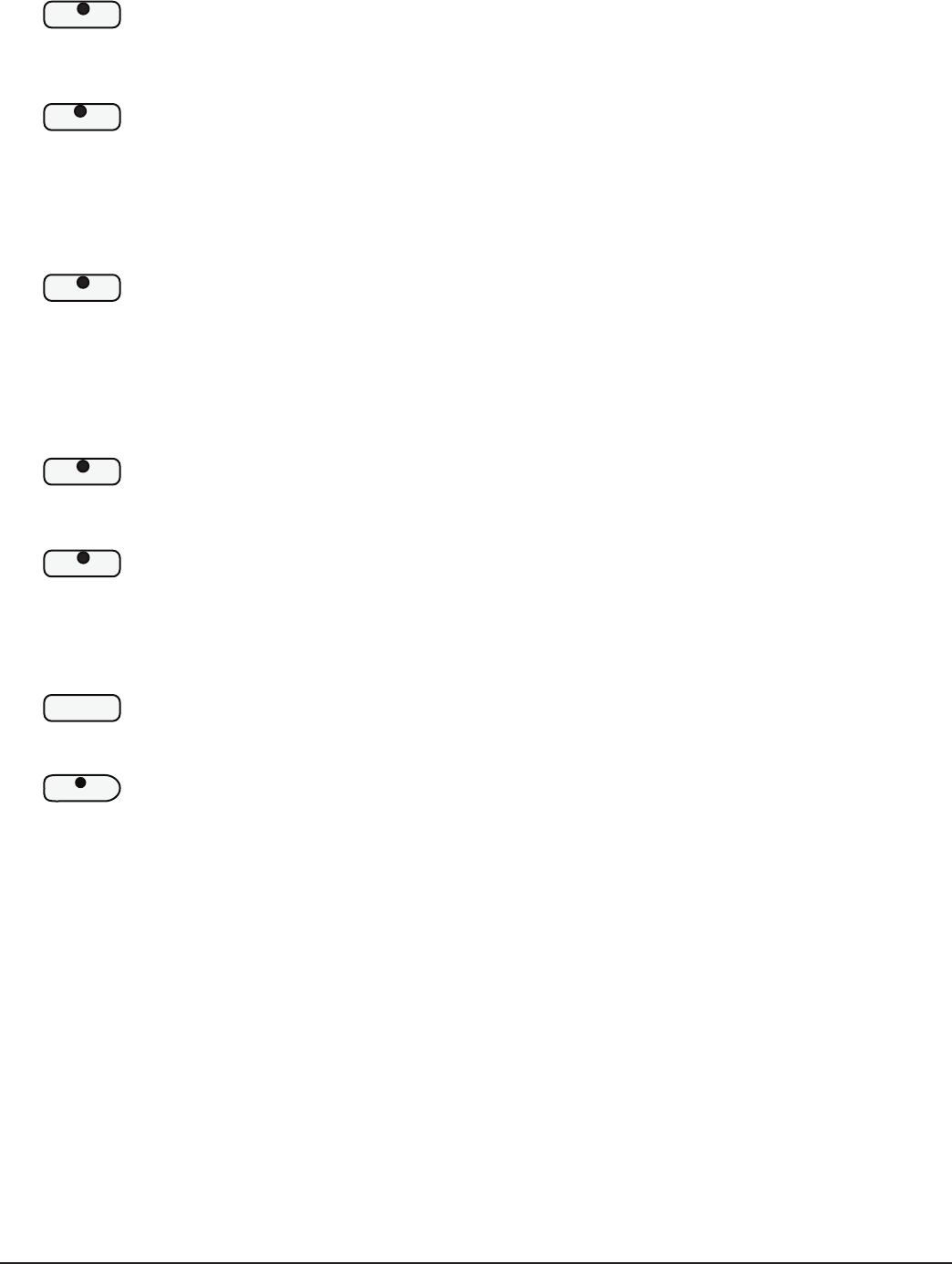
38 OWNER’S MANUAL
4. Record - Your performance can be recorded in the following ways:
Record Melody Track Only
If the MELODY 1 or MELODY 2 buttons are selected the recording will begin as soon
as you play the keyboard.
Please Note: It is suggested to turn o the ngering mode when recording on a
melody track alone. When the ngering mode is set to Fingered or Single, the auto
accompaniment section of the keyboard will not be recorded, although the notes are
sounding.
Record Auto Accompaniment Track Only
With the Auto Accompaniment ACCOMP engaged recording will start as soon as a
chord is played on the auto accompaniment section of the keyboard.
Please Note: notes played on the Melody section of the keyboard will not be
recorded in the auto accompaniment track. If the auto accompaniment is o, only
the percussive rhythm will be recorded in the ACCOMP track. An unrecognized
chord in the ngered mode cannot start the recording.
Record the Auto Accompaniment and a Melody Track
If you want to record a melody and the accompaniment at the same time, Press a
MELODY track button, then the ACCOMP track button and both indicators will blink
in the standby mode.
Recording begins as soon as you start to play on any section of the keyboard.
Please Note: the contents in a track will be erased as soon you start to record on the
selected track. It will be replaced by the new data that the user is recording.
5. Stop Recording - Press the START/STOP button, the PLAY/STOP button or the REC
button to stop recording. Or when the accompaniment track is being recorded,
press the INTRO/ENDING button to stop the recording with an ending pattern in
the accompaniment track.
Please Note: When the record memory is full, recording will stop automatically and
“End” will appear on the display screen.
Also Note: That chorus & reverb can not be recorded dierently from melody track 1 to
melody track 2
SAVE
MELODY 2
LOAD
MELODY 1
PLAY ALL
ACCOMP
LOAD
MELODY 1
PLAY ALL
ACCOMP
PLAY/STOP
PLAY/STOP
UTILITY
REC
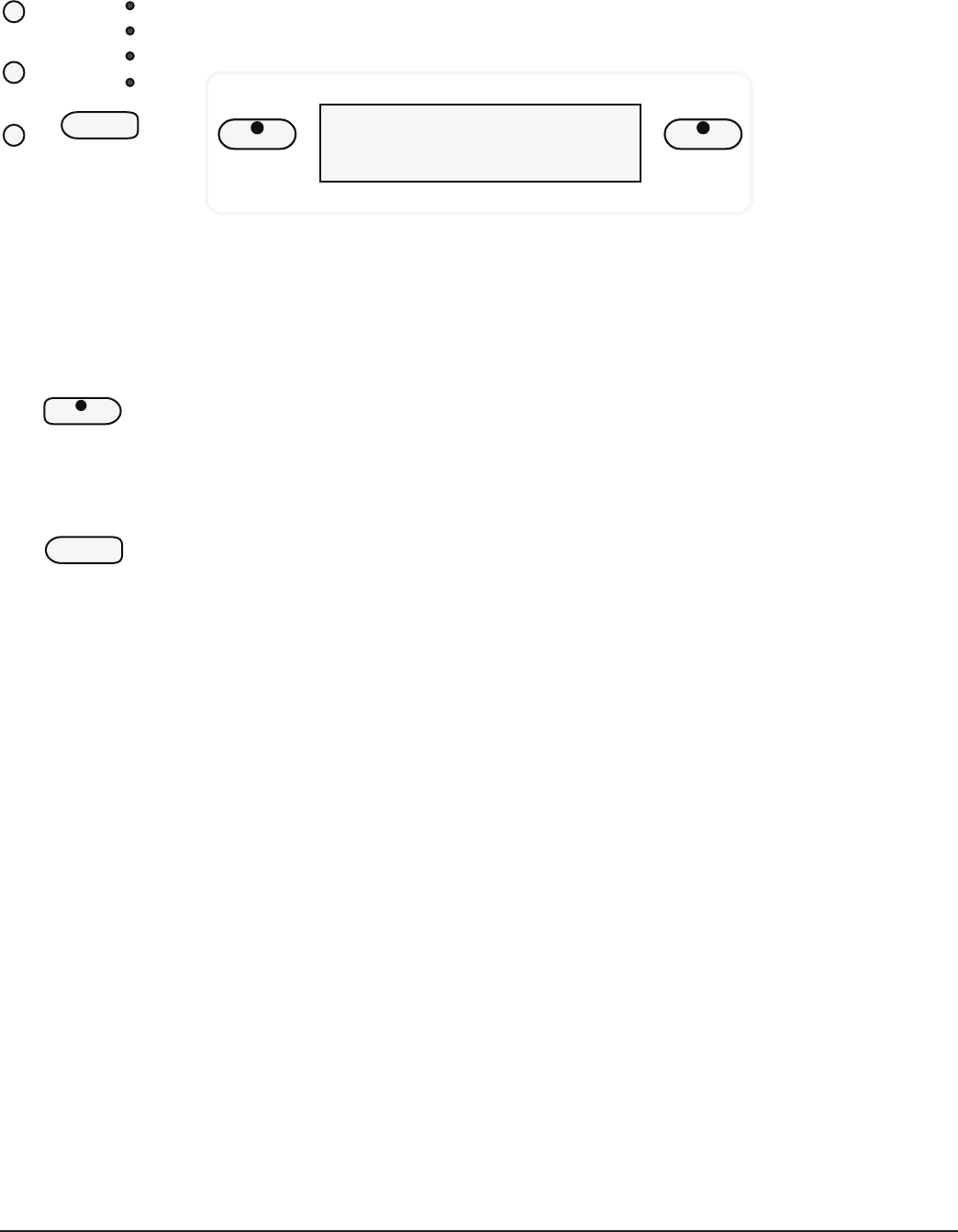
39
MICRO GRANDE DIGITAL PIANO
Playback
To listen to the recorded passage:
1. Press the USER SONG button and select the song you want to play back, using the
+/YES, –/NO buttons. The display will show the song number.
VOICE STYLE
1: User Song
2. After you have selected your desired User Song, the LED indicators of those
recorded channel tracks will be engaged.
If you do not wish to hear a specic track, press the corresponding track button to
turn that track o. Its LED indicator will turn o.
3. Press the PLAY/STOP button to hear the recorded track(s). The dots of the beat
indicator will ash. You can change the tempo by pressing the +TEMPO– buttons.
You may also play on the keyboard while the recording is playing back.
4. Press the PLAY/STOP button again to stop the playback. Playback will stop
automatically when the recording reaches its end.
5. Press the USER SONG button again to exit the Record Mode, the display screen will
revert to the current voice selected.
0
+/YES
–/NO
1
2
3
4
USER SONG
PLAY/STOP
PLAY/STOP
USER SONG
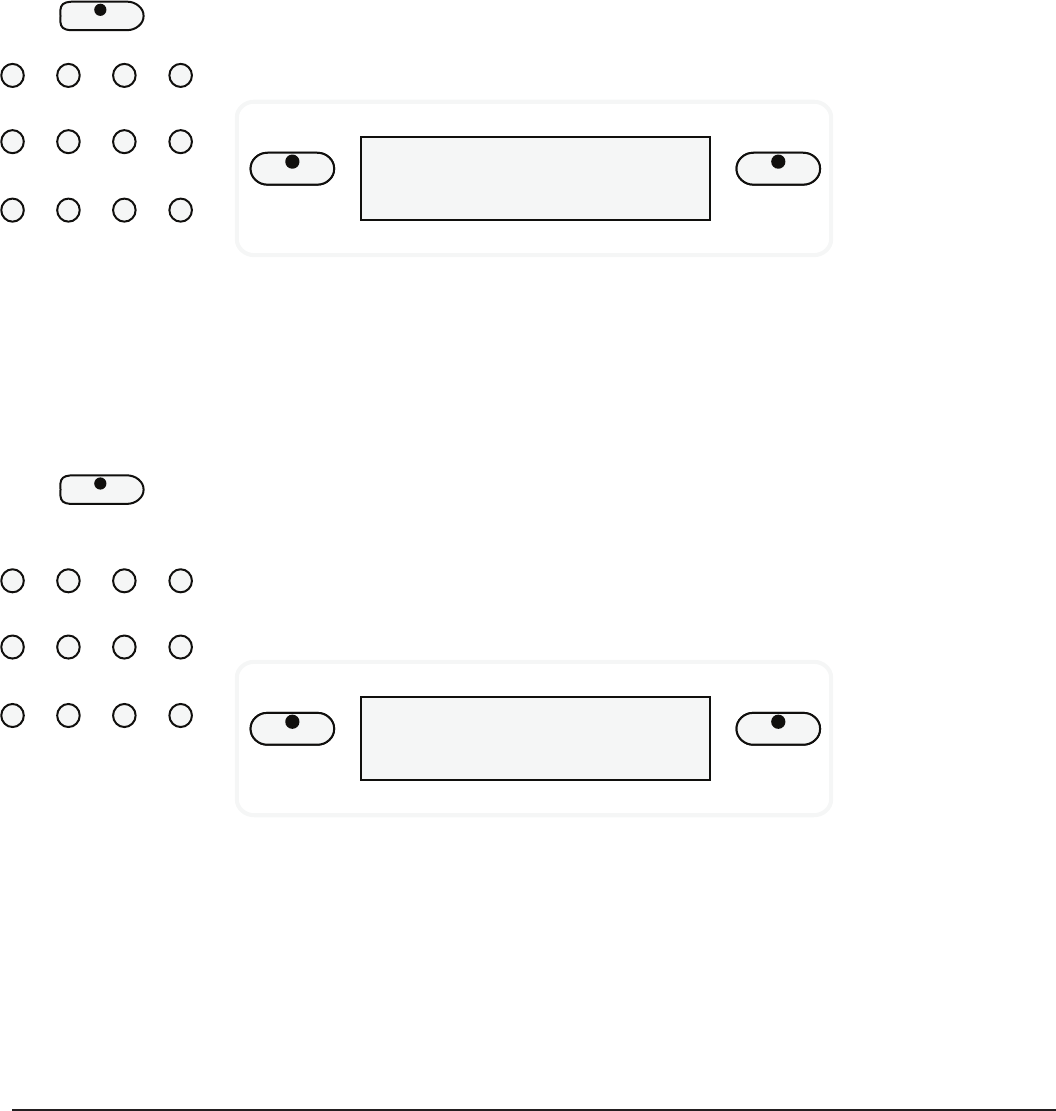
40 OWNER’S MANUAL
Registration Memory
Registration Memory can recall particular settings of style, voice, chord and
other parameters or features you have engaged. This piano has nine registration
memories to hold your favorite settings so that they can be recalled quickly by
pressing a button. The unit is equipped with a backup battery will not be lost when
the power is turned o.
Please Note: The Registration Memory is recalled by using the numeric pad buttons.
Save Your Settings In The Registration Memory
1. Set the voice, rhythm, tempo, accompaniment, reverb eect and any other
parameters that you wish to save.
2. Hold down the REG button.
VOICE STYLE
b-1: Store
3. Press one of the number pads 1-9. The display will show the current registration
memory number with a “b-” prex. Your panel setting will be saved into that
registration memory button instantly.
Recall Contents In The Registration Memory
1. Press and release the DIGITAL/REG button to engage the registration memory
mode, the indicator will light up.
2. Press one of the number pads 1-9 buttons, the stored setting will be recalled
instantly and the display will show the memory number with a “b-” prex. The
relevant parameters will be set and the display will recover to the voice that has
just been recalled.
VOICE STYLE
b-1: RegisterBank
USER REG
1
5
9
2
6 0
3
7
+/YES
4
8 –/NO
USER REG
1
5
9
2
6 0
3
7
+/YES
4
8 –/NO
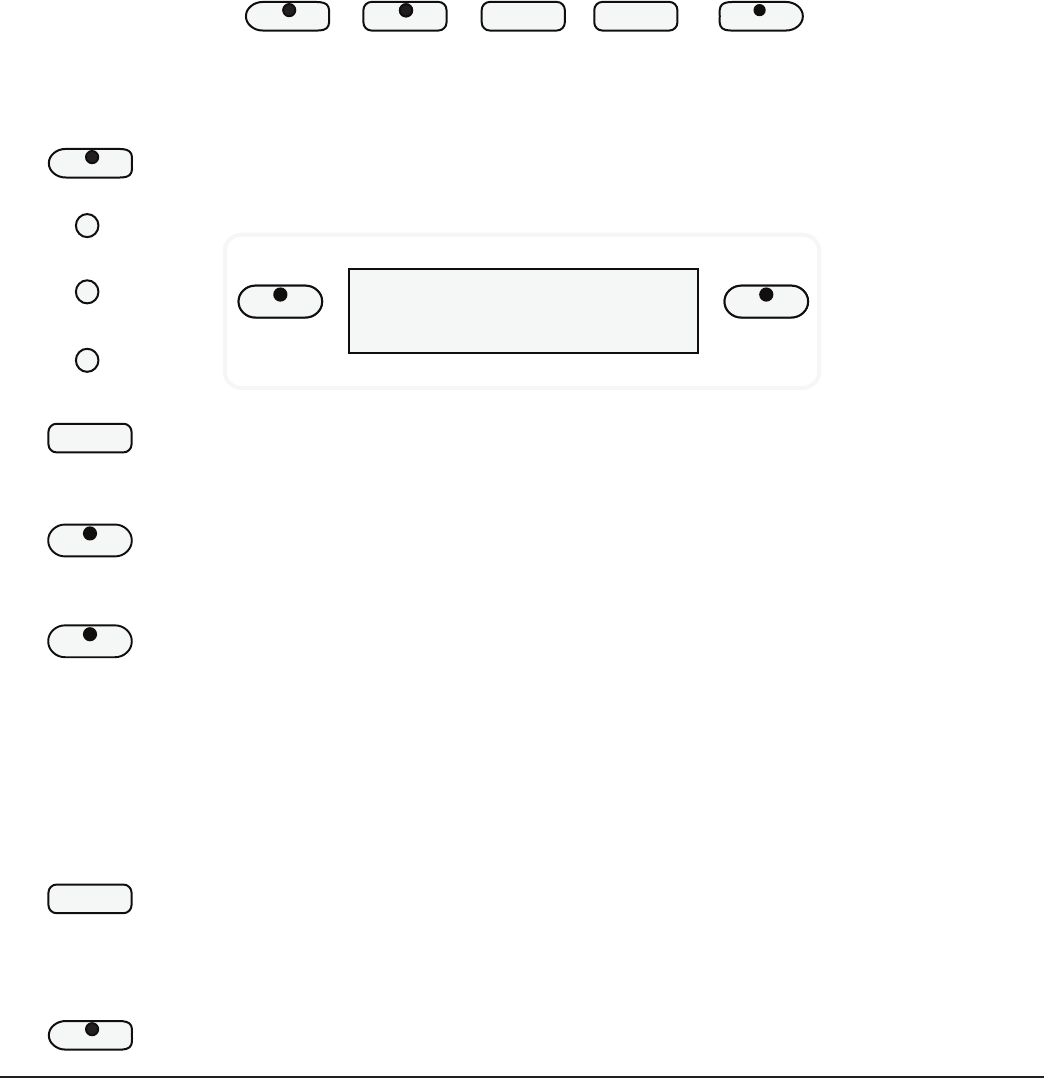
41
MICRO GRANDE DIGITAL PIANO
Play Along Songs
Press the SONG button to access the play along song function.
There are 50 songs built into the piano for your musical enjoyment.
Please Note: If you press the SONG button, hold it down, and then press the DEMO
button, all the training songs will play back.
You can change the song by pressing the +/YES , –/NO buttons or use the number
pads to input a song number directly.
Press the DEMO button again to stop the song demonstration.
FUNCTION PAGE qPAGE pUSER REGDEMO/SONG
Using The Song Feature
1. Engage the Song mode - Press the SONG button. The rst song number will appear
on the display. Use the +/YES, –/NO buttons or the number pads to select a song.
The song number will appear on the display.
VOICE STYLE
001:Teach Song
2. Listen to the demonstration - Press the START/STOP button to listen to the selected
song. The chord playing from the auto accompaniment and the tempo will be
shown on the display.
Right hand play along — Press the RIGHT button. Then press the START/STOP
button, after the metronome sound the auto accompaniment will playback, and
you can play the right hand melody notes with the rhythm accompaniment track.
Left hand play along — Press the LEFT button. Then press the START/STOP
button, after the metronome sound the melody will playback with the rhythm and/
or accompaniment track, you can play the left hand accompaniment pattern to
match this melody.
Right and Left hand play along — Press the RIGHT and LEFT buttons
simultaneously, then press the START/STOP button, after the metronome sound,
you can play the entire section with both hands with the percussive rhythm or
metronome track.
3. Check you progress - You will hear a vocal grading as soon as you nish the
performance. The grades are “Try Again”, “Good”, “Very good” and “Excellent”.
The same song passage will continue until you press the START/STOP button.
4. Stop the Song Function - Press the SONG button again to exit the Play Along Song
Mode.
DEMO/SONG
0
+/YES
–/NO
START/
STOP
RIGHT
LEFT
START/
STOP
DEMO/SONG

42 OWNER’S MANUAL
iPod Dock Instruction
The iPod docking station is located on the right hand side the piano underneath the keys.
1. Pull out the iPod docking station from under the keyboard.
2. Turn the Piano’s Master Volume to mid level to ensure that the initial iPod volume
will not damage the Piano’s Sound Delivery System.
3. Place your iPod onto the docking station carefully. The bottom of the iPod needs to
interface with already compatible connector on the docking station.
iPod Volume
The Volume Control to the right of the iPod Docking Cradle can be used to easily
adjust the iPod’s volume to match your Playing volume level. Or you may just use
the Master Volume control for its overall volume.
The Piano’s EQ Controls will not eect the iPod’s sound output. Therefore please
use the iPod’s EQ controls to optimize the iPod’s sound and tone.
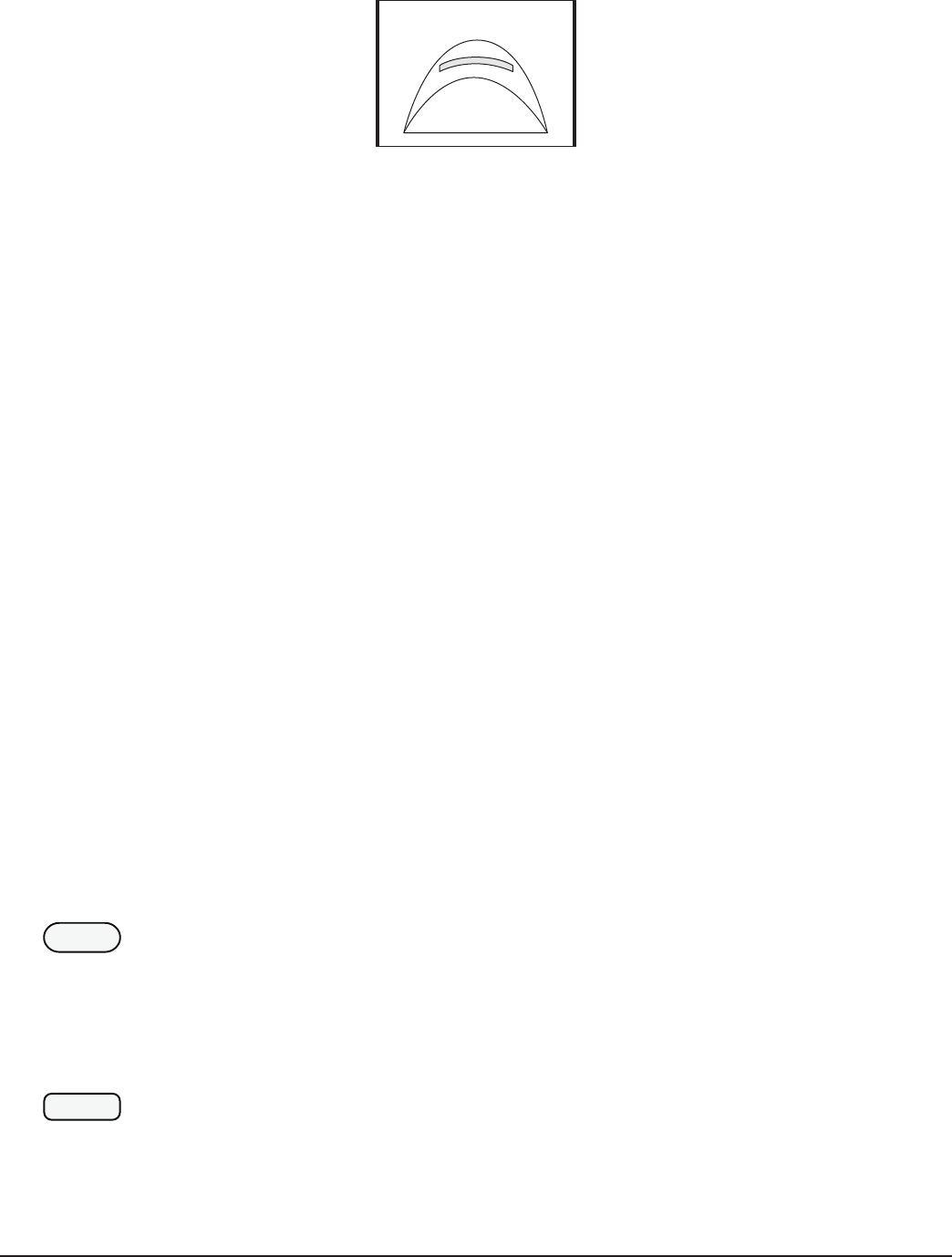
43
MICRO GRANDE DIGITAL PIANO
SD Card
Card Features
The card features allows you to Load Songs, Save Songs, Delete Song Files and
Rename your song les.
Insert The Card
Insert the SD Memory Card in to Memory Card Slot with the label side up and the
metal teeth leading into the slot. Slide the SD Memory Card into the slot and push
it with your index nger until it clicks into place. The SD Memory Card should be
approximately ush with the Memory Card Plastic Molding when you have heard
or felt the click, meaning that it is engaged.
Remove The Card
To remove the SD Memory Card press the SD Memory Card and it will pop back out
of the Memory Card Slot and allow you to grab it to remove it from the piano.
Note: Do not remove the Memory Card or turn o the power when to Memory card is
engaged in anyway to avoid memory loss or damage to the SD Memory Card or the
Memory Card Reader
Play All
The Play All card function lets you play all SMF MIDI Song Files that are on the card.
1. Insert a SD card into the card reader. Make sure that there are some of your
previous musical performances are on it or songs in the MIDI (SMF–Standard MIDI
File) Format les are on the card.
2. Press the CARD Button and select the Play Card menu.
3. The music sequencer will automatically load the rst MIDI File Song that is on the
card and it will begin to play.
4. The music sequencer will load the second MIDI File Song after the rst one has
nished and it will begin to play.
5. The music sequencer will continue to play all songs in sequence. It will continue
this function until the START/STOP Button is pressed.
CARD
START/
STOP
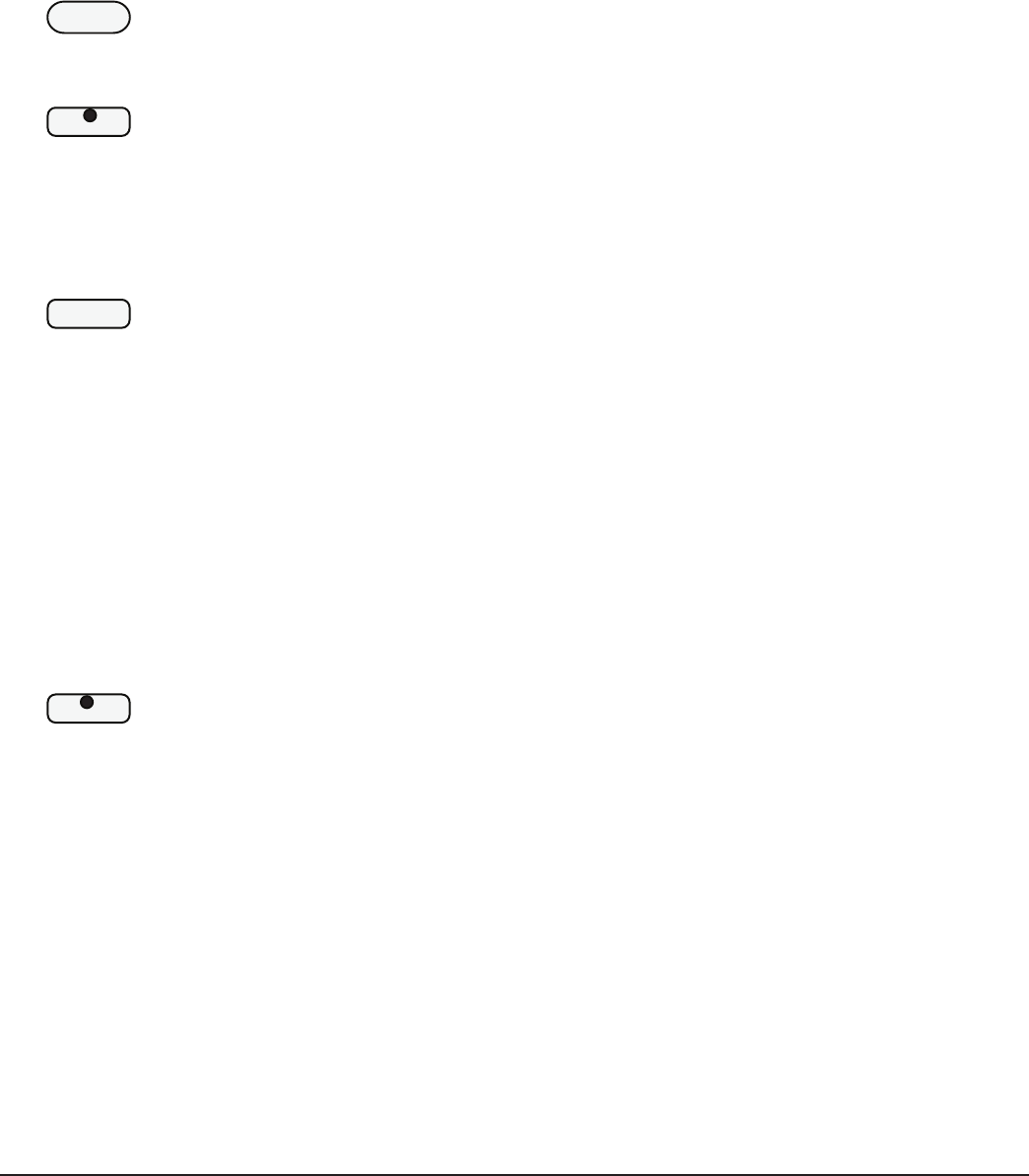
44 OWNER’S MANUAL
Load Song
If you would like to listen to a specic song from the SD Card then you must rst
load it into the music sequencer.
Load Song retrieves one of your previously stored Music Performances or MIDI File
songs from the SD Card.
1. Place a card into the card reader. Make sure that there are some of your previous
musical performances on it or MIDI (SMF–Standard MIDI File) Format les on the
card.
2. Press the CARD Button and select the Load Song menu.
3. Press the LOAD SONG Button.
4. Use the +YES or the –NO buttons to cycle through the Load song options available
to select.
5. Press the LOAD SONG Button when your desired song is shown on the LCD Screen.
This will conrm you selection and load this song into the Music Sequencer. “OK!”
Will appear on the LCD Screen after your song is loaded. Press the next function
button that you like to engage such Play or the Play/Stop Button.
6. Press the START/STOP or the PLAY/PAUSE button. The song you have just loaded
into the sequencer (music recorder) will begin to play.
Save Song
The Save song function lets you save your musical performance data that you
recorded in the 3 track music recorder (sequencer) and save it onto a SD Card so
that it can be accessed later.
1. Make sure the card that you have selected has room to store song data les on it.
2. Make sure that you have one of your musical performances recorded into one of
the User Songs.
3. Press the SAVE button on the control panel.
The User Song LED that has a recorded song in it will turn on. LCD will ask “Save it
to Card?”
4. Use the +YES or the –NO buttons to select the User Song you would like to save to
the SD Card. The SAVE Button LED will turn o when there are no more selections
are available to save.
CARD
LOAD
MELODY 1
START/
STOP
SAVE
MELODY 2

45
MICRO GRANDE DIGITAL PIANO
Utility
Selecting the UTILITY Button on the control panel will access the following
Options:
Solo Channel
The Solo Channel Screen allows you to select certain individual track of your MIDI
File Song to Solo on (play along with). Therefore depending on your Standard MIDI
File Formatted Song you would be able to Solo on one of the sixteen Channels or
Tracks that you have selected.
Use the +YES or the –NO button to access the SOLO Channel that you would like to
select.
Press the UTILITY Button will that channel is shown on the LCD Screen.
Now Press the Play Button and you will hear only the channel that you have
selected.
You may play along with this channel as desired.
Mute Channel
The Mute Channel allows you to select a certain individual track of your MIDI File
Song to Mute. Therefore depending on your Standard MIDI File Formatted Song
you would be able to Mute a certain channel such as the Bass or Melody Line of the
Song.
Use the +YES or the –NO button to access the Channel that you would like to
MUTE.
Press the UTILITY Button when that channel is shown on the LCD Screen.
Now Press the Play Button and you will hear your selected song play without the
channel that you have chosen to Mute.
Delete
Delete is used to remove unwanted les from the SD card.
1. Insert the card into the card reader. Make sure that the card you have selected has
the song data le you want to delete from the SD card.
2. Use the +YES or the –NO button to access the song that you would like to DELETE.
3. Press the UTILITY Button when the Song that you would like to DELETE is shown on
the LCD Screen. The song you have selected will then be Deleted.
UTILITY
REC

46 OWNER’S MANUAL
Play/Stop
Selecting the PLAY/STOP Button on the control panel will Start or Stop the song
that is loaded in the Music Sequencer.
Buy Or Download Songs To Playback On Your Piano
You can purchase prerecorded SMF (Standard MIDI File) MIDI File disks of your
favorite music and performing artists. One of the many places you can order
these disks is from the Suzuki Corporation by visiting us on the web at www.
suzukipianos.com/. However there are also many web sites that oer SMF Music
les that can be downloaded from the Internet.
Using your computer you may can download various types of songs (called MIDI
Files) from the Internet for free and save them to your SD Memory Card. The MIDI
les you download should be in Standard MIDI File format for proper playback. You
can search the web by visiting Google.com and entering SMF MIDI FILES into their
search engine.
If you have any further questions call Suzuki Support toll free at 800-854-1594.
Microphone
If you would like to sing along with the music from the piano.
Plug in the microphone in to the Mic Input Jack located on the connector panel on
the bottom left hand side of the piano.
PLAY/STOP
PLAY/STOP
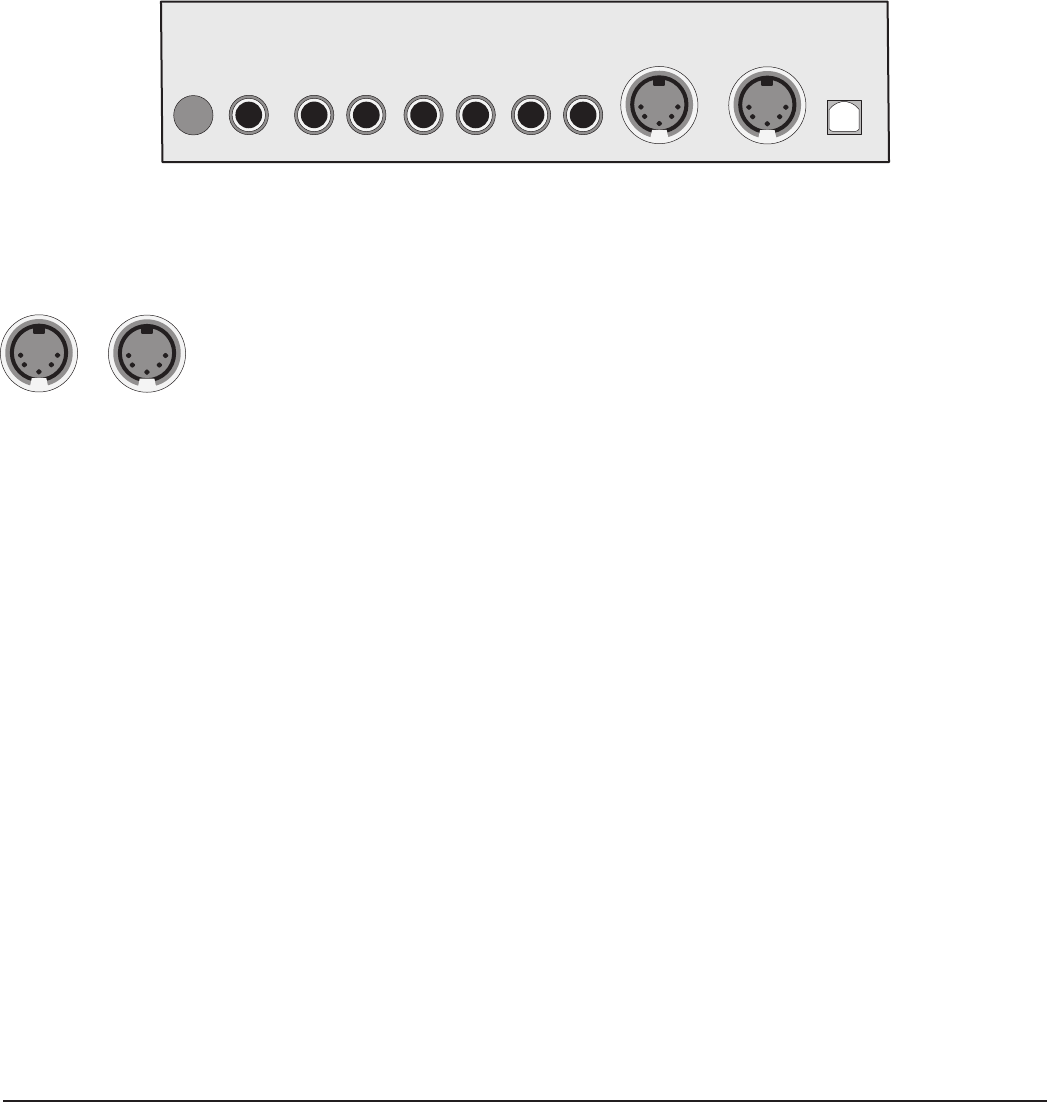
47
MICRO GRANDE DIGITAL PIANO
MIDI
MIDI stands for Musical Instrument Digital Interface. This is a world wide standard communication
interface that enables electronic musical instruments and computers (of all brands) to communicate with
each other so that instructions and other data can pass between them. This exchange of information
makes it possible to create a system of MIDI instruments and devices that oers far greater versatility and
control than is available with isolated instruments. Whether you interface with computers, sequencers,
expanders or other keyboards your musical horizons will be greatly enhanced. For further information on
MIDI and MIDI equipment that is available, please contact your local Suzuki music store.
USB
MIC PHONES IN OUT
MIDI
IN
AUDIO
OUT
L R L R
MIDI Connection — The MIDI terminals are located on the left side panel of the
piano.
1. MIDI In: This terminal receives MIDI data from an external MIDI device.
2. MIDI Out: This terminal transmits data from this instrument to other MIDI devices.
The transmitted data includes the note and touch velocity produced while playing
on the keyboard, as well as voice changes, and recorded playback for the melody
tracks. Demo songs and auto accompaniment are not transmitted.
For more information regarding transmitted MIDI data please see the next page
and or the MIDI implementation chart.
MIDI Channels — The MIDI system in this unit has 16 channels numbered from
1-16. Each of the channels is responsible for a voice. When the instrument receives
from an external device, the active channel is determined by the control message.
The transmission channels on this keyboard are xed as follows:
Channel 1: Master voice
Channel 2: Layer voice
Channel 3: Split voice
Channel 4: Bass in manual bass chord mode
Channel 7: Chord in manual bass chord mode
Channel 10: Percussion sound
Please see the MIDI Implementation Chart for more detail.
For further MIDI setup options please see your local Suzuki Music Store.
IN OUT
MIDI
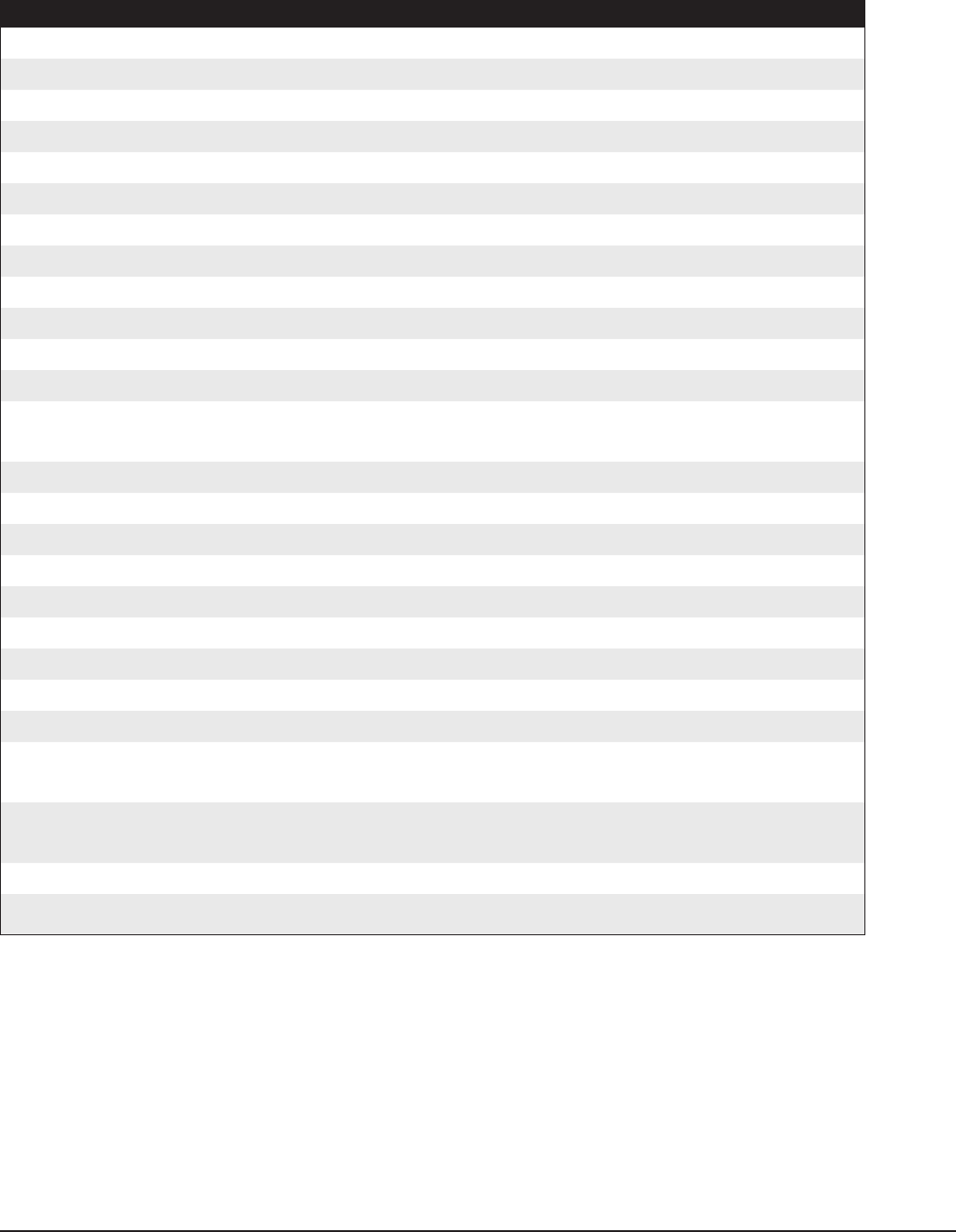
48 OWNER’S MANUAL
MIDI Implementation Chart
FUNCTION TRANSMITTED RECOGNIZED REMARK
Basic Channel 1 CH 1-16 CH
Channel changed 1-16 CH 1-16 CH
Default Mode 3 3
Note Number 9-120 0-127
Velocity: Note On • •
Velocity: Note O X •
Pitch Bender • •
Control Change: 0 •X Variation page
1 X X Modulation
5 X X Portamento value
7, 10 • • Volume, Pan
11 X •Expression
64, 66, 67 • • Sustain. Sostenuto, Soft
Pedal
65 X X Portamento yes/no
80, 81 • • Reverb, Chorus program
91 • • Reverb, Chorus send level
98, 99 X X NRPNL, NRPHH
100 ,101 X X RPNL, RPNH
121 • • Reset all controllers
123 • • All notes o
Program Change 0-127 0-127
System Exclusive X X
Sys. Common: Song
Select
X X
Sys. Common: Song
Position
X X
System: Clock X X
Real Time: Commands X X
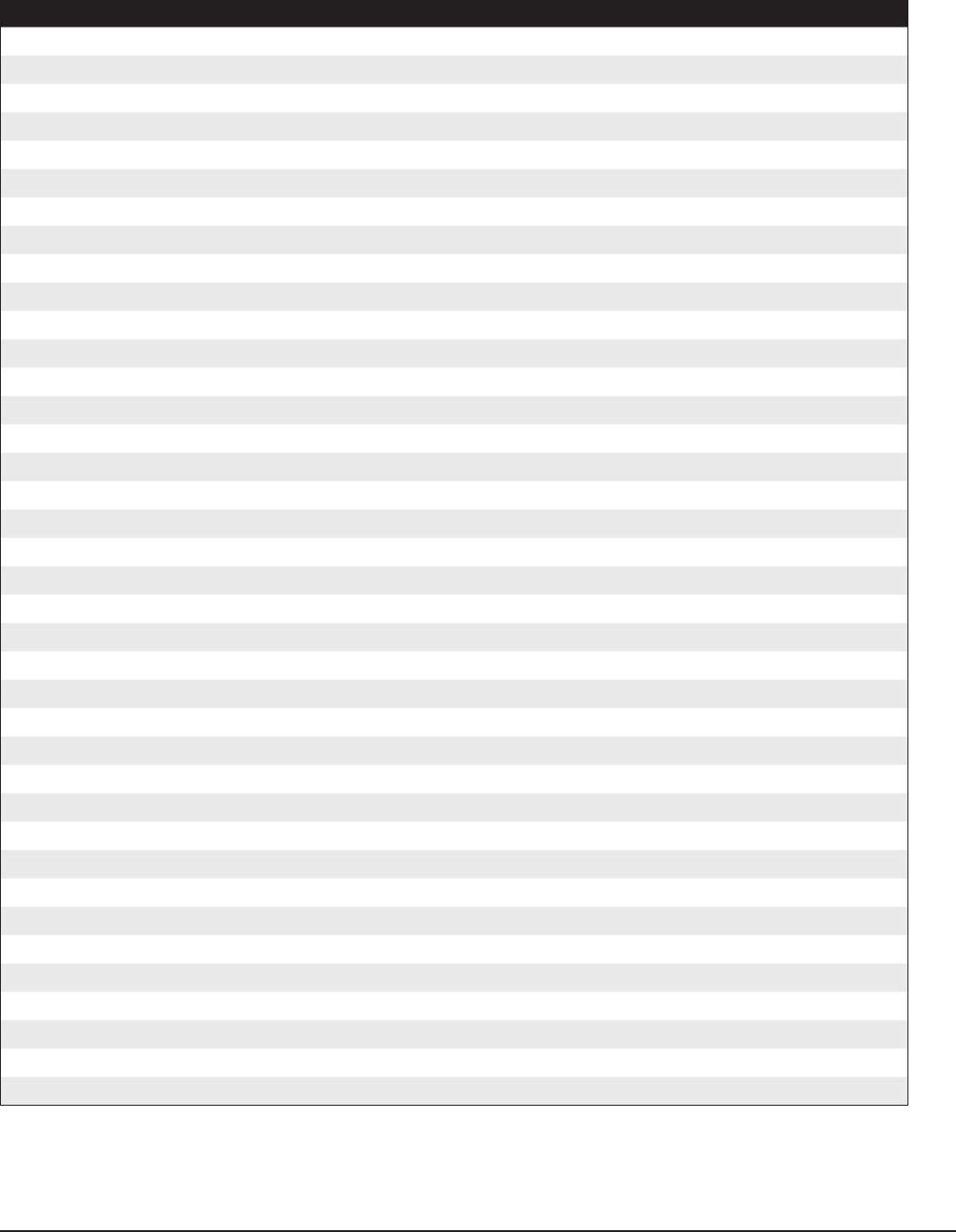
49
MICRO GRANDE DIGITAL PIANO
Voice List
NO. NAME DISPLAY NO. NAME DISPLAY
PIANO 34 Electric Bass (nger) Finger Bass
1 Acoustic Grand Piano Grand Piano 35 Electric Bass (pick) Pick Bass
2 Bright Acoustic Piano Bright Piano 36 Fretless Bass FretlessBass
3 Electric Grand Piano El.G.Piano 37 Slap Bass 1 SlapBass1
4 Honky-Tonk Piano Honky-Tonk 38 Slap Bass 2 SlapBass2
5 Electric Piano 1 Elec.Piano1 39 Synth Bass 1 Synth Bass1
6 Electric Piano 2 Elec.Piano2 40 Synth Bass 2 Synth Bass2
7 Harpsichord Harpsichord STRINGS
8 Clavichord Clavichord 41 Violin Violin
CHROMATIC PERCUSSION 42 Viola Viola
9 Celesta Celesta 43 Cello Cello
10 Glockenspiel Glockenspiel 44 Contrabass ContraBass
11 Music box Music Box 45 Tremolo Strings TremStrings
12 Vibraphone Vibraphone 46 Pizzicato Strings PizzStrings
13 Marimba Marimba 47 Orchestral Harp OrchHarp
14 Xylophone Xylophone 48 Timpani Timpani
15 Tubular Bells TubularBells ENSEMBLE
16 Dulcimer Dulcimer 49 String Ensemble 1 StringEnsbl1
ORGAN 50 String Ensemble 2 StringEnsbl2
17 Drawbar Organ Draw Organ 51 Synth Strings 1 SynthString1
18 Percussive Organ Percus Organ 52 Synth Strings 2 SynthString2
19 Rock Organ Rock Organ 53 Choir Aahs ChoirAahs
20 Church Organ ChurchOrgan 54 Voice Oohs VoiceOohs
21 Reed Organ Reed Organ 55 Synth Voice Synth Voice
22 Accordion Accordion 56 Orchestra Hit OrchHit
23 Harmonica Harmonica BRASS
24 Tango Accordion Tango Accordn 57 Trumpet Trumpet
GUITAR 58 Trombone Trombone
25 Acoustic Nylon Guitar Nylon Guitar 59 Tuba Tuba
26 Acoustic Steel Guitar Steel Guitar 60 Muted Trumpet MutedTrumpet
27 Electric Jazz Guitar Jazz Guitar 61 French Horn FrenchHorn
28 Electric Clean Guitar Clean Guitar 62 Brass Section BrassSection
29 Electic Muted Guitar Mute Guitar 63 Synth Brass 1 SynthBrass1
30 Overdriven Guitar Overdrive 64 Synth Brass 2 SynthBrass2
31 Distortion Guitar Dist Guitar REED
32 Guitar Harmonics GtrHarmonics 65 Soprano Sax SopranoSax
BASS 66 Alto Sax Alto Sax
33 Acoustic Bass AcousticBass 67 Tenor Sax Tenor Sax
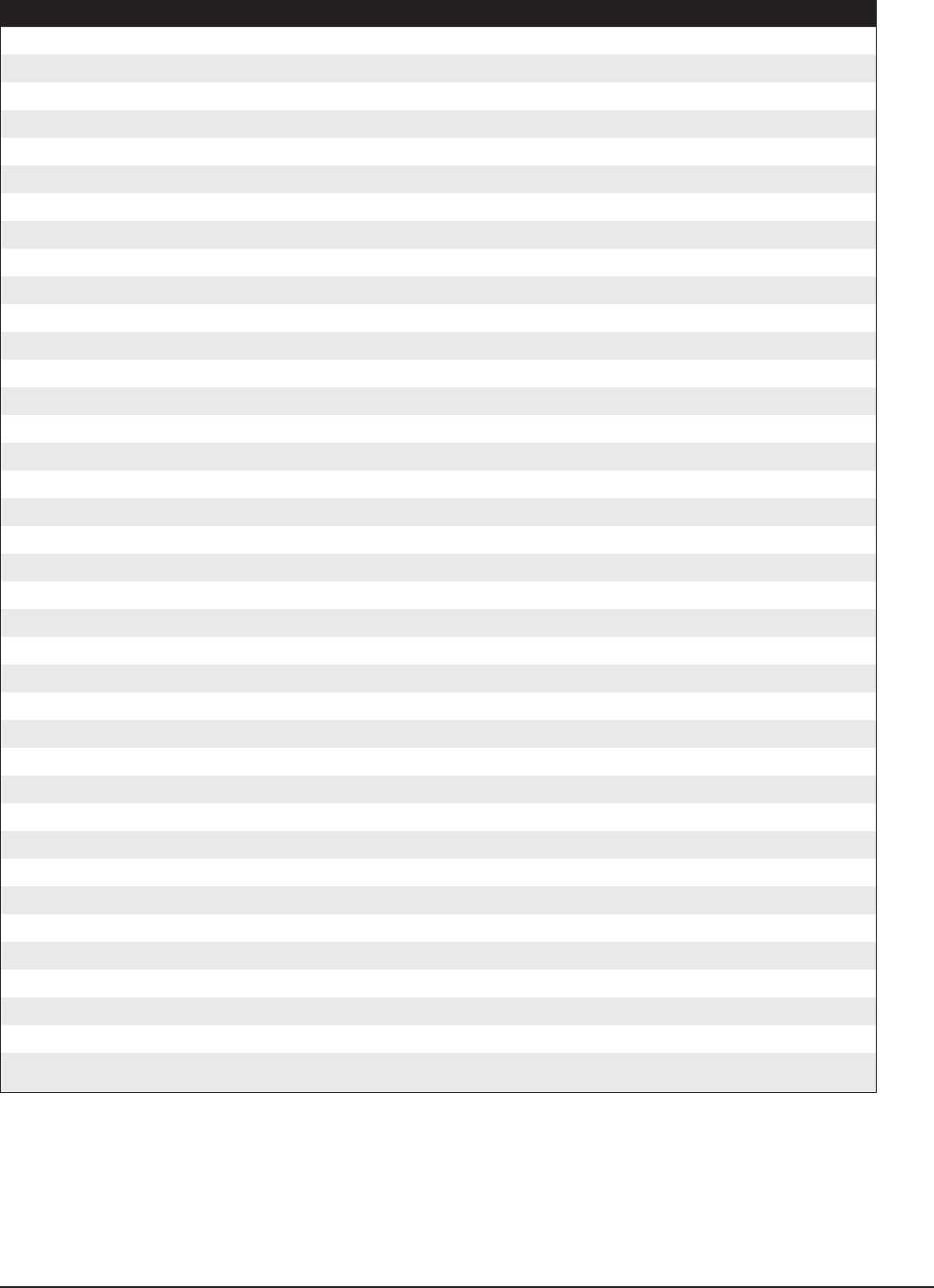
50 OWNER’S MANUAL
NO. NAME DISPLAY NO. NAME DISPLAY
68 Baritone Sax Baritone Sax 102 FX 6 (goblins) Goblins
69 Oboe Oboe 103 FX 7 (echoes) Echoes
70 English Horn English Horn 104 FX 8 (sci-) Sci-Fi
71 Bassoon Bassoon ETHNIC
72 Clarinet Clarinet 105 Sitar Sitar
PIPE 106 Banjo Banjo
73 Piccolo Piccolo 107 Shamisen Shamisen
74 Flute Flute 108 Koto Koto
75 Recorder Recorder 109 Kalimba Kalimba
76 Pan Flute Pan Flute 110 Bagpipe Bagpipe
77 Bottle Blow Bottle 111 Fiddle Fiddle
78 Shakuhachi Shakuhachi 112 Shanai Shanai
79 Whistle Whistle PERCUSSIVE
80 Ocarina Ocarina 113 Tinkle Bell Tinkle Bell
SYNTH LEAD 114 Agogo Agogo
81 Lead 1 (square) Square Lead 115 Steel Drums Steel Drums
82 Lead 2 (sawtooth) SawtoothLead 116 Woodblock WoodBlock
83 Lead 3 (caliope lead) CaliopeLead 117 Taiko Drum Taiko Drum
84 Lead 4 (chi lead) Chi Lead 118 Melodic Tom MelodicTom
85 Lead 5 (charang) Charang Lead 119 Synth Drum Synth Drum
86 Lead 6 (voice) Voice Lead 120 Reverse Cymbal ReversCymbal
87 Lead 7 (fths) Fifth Lead SOUND EFFECT
88 Lead 8 (bass + lead) Bass +Lead 121 Guitar Fret Noise Fret Noise
SYNTH PAD 122 Breath Noise Breath Noise
89 Pad 1 (new age) New Age Pad 123 Seashore Seashore
90 Pad 2 (warm) Warm Pad 124 Bird Tweet Bird Tweet
91 Pad 3 (polysynth) PolySynthPad 125 Telephone Ring Telephone
92 Pad 4 (choir) Choir Pad 126 Helicopter Helicopter
93 Pad 5 (bowed) Bowed Pad 127 Applause Applause
94 Pad 6 (metallic) Metallic Pad 128 Gunshot Gunshot
95 Pad 7 (halo) Halo Pad
96 Pad 8 (sweep) Sweep Pad
SYNTH EFFECT
97 FX 1 (rain) Rain
98 FX 2 (soundtrack) Sound Track
99 FX 3 (crystal) Crystal
100 FX 4 (atmosphere) Atmosphere
101 FX 5 (brightness) Brightness
Please Note: For voices from 001 - 128 in the table, the “No.” is the displayed voice number. The MIDI program
number for any voice listed is one less than the display number. For example voice 001 Acoustic Grand Piano
MIDI program number is 000, voice 002 Bright Acoustic Piano MIDI program number is 001, and so forth.
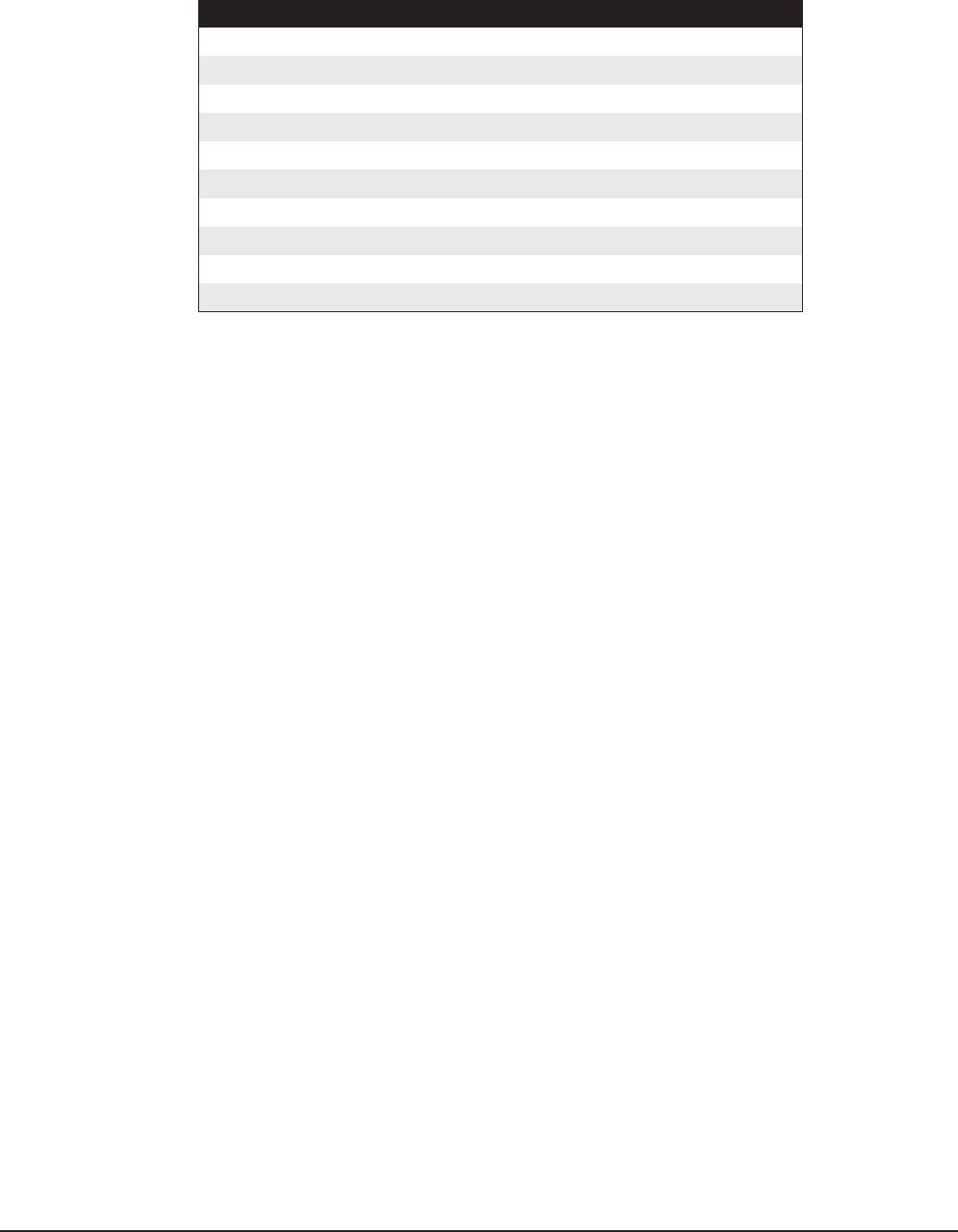
51
MICRO GRANDE DIGITAL PIANO
Asian Folk Instruments
NO. NAME DISPLAY PROG. CHANGE BANK
129 Yangquin Yangqin 15 1
130 Sanxian Pipa 106 1
131 Zheng Zheng 107 1
132 Erhu Erhuvib 110 1
133 Banhu Banhu 0 1
134 Suona Suona 1 1
135 Sheng Sheng 2 1
136 Dizi Dizi 3 1
137 Erhu + Yangqin ErhuYangqin2 7 1
138 Dizi + Zheng DiziZheng2 11 1
Please Note: When the touch sensitivity is in the “Soft,” “Normal,” or “Hard,” mode,
voice No. 137 will sound as Erhu when a key is struck softly, and as Yangqin when the
key is struck hard.
If the touch response is xed, voice No. 137 will always sound as Yangqin.
When the touch sensitivity is in the “Soft,” “Normal,” or “Hard,” mode, voice No. 138 will
sound as Zheng when a key is struck softly, and as Dizi when the key is struck hard.
If the touch response is xed, voice No. 138 will always sound as Dizi. More ethnic Asian
Instruments have been added to the voice list as shown below.
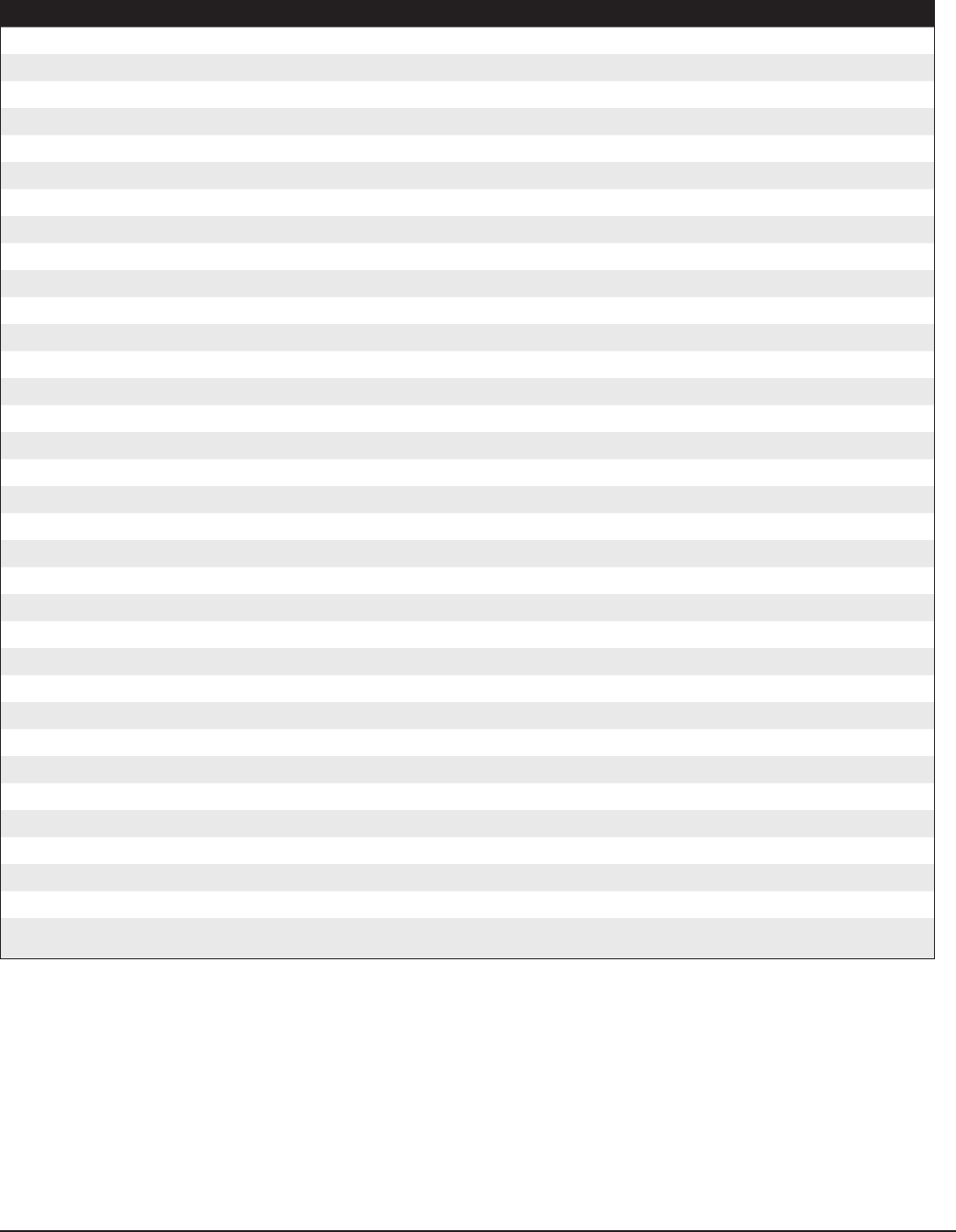
52 OWNER’S MANUAL
Style List
NO. NAME DISPLAY NO. NAME DISPLAY NO. NAME DISPLAY
0Swing Organ Swing Organ 34 Disco Disco 67 Hawaiin Hawaiin
1Swing Trio Swing Trio 35 Disco Dance 1 Disco Dance 1 68 Hula Hula
2Swing Swing 36 Disco Dance 2 Disco Dance 2 69 Boogie Boogie
3Slow Swing Slow Swing 37 Disco Shue Disco Shue 70 Trot Trot
4Dixie Dixie 38 Disco Grove Disco Grove 71 Ragtime Ragtime
5Jazz Jazz 39 House House 72 Waltz 1 Waltz 1
6Lounge Lounge 40 Dance 1 Dance 1 73 Waltz 2 Waltz 2
7Shue Blues Shue Blues 41 Dance Pop 1 Dance Pop 1 74 Classical 1 Classical 1
8Blues Blues 42 Dance Pop 2 Dance Pop 2 75 Classical 2 Classical 2
9Gospel 1 Gospel 1 43 80’s Dance 80’s Dance 76 Ballad Ballad
10 Gospel 2 Gospel 2 44 Dance 2 Dance 2 77 50’s Ballad 50’s Ballad
11 Reggae 1 Reggae 1 45 Techno Techno 78 Power Ballad Power Ballad
12 Reggae 2 Reggae 2 46 Rap Rap 79 Jazz Ballad Jazz Ballad
13 Motown Motown 47 Rock 1 Rock 1 80 Bolero Bolero
14 Shue Shue 48 Rock 2 Rock 2 81 Slow 16 Slow 16
15 R&B 1 R&B 1 49 Rock 3 Rock 3 82 Kids 1 Kids 1
16 R&B 2 R&B 2 50 Rock n Roll 1 Rock n Roll 1 83 Kids 2 Kids 2
17 R&B Shue R&B Shuf 51 Rock n Roll 2 Rock n Roll 2 84 March 1 March 1
18 Pop 1 Pop 1 52 Soft Rock Soft Rock 85 March 2 March 2
19 Pop 2 Pop 2 53 Jerry Jerry 86 March 3 March 3
20 Pop 3 Pop 3 54 Bossa Nova 1 Bossa Nova 1 87 Polka 1 Polka 1
21 Beat Pop 1 Beat Pop 1 55 Bossa Nova 2 Bossa Nova 2 88 Polka 2 Polka 2
22 Beat Pop 2 Beat Pop 2 56 Pop Bossa 1 Pop Bossa 1 89 Mex Polka Mex Polka
23 Beat Pop 3 Beat Pop 3 57 Pop Bossa 2 Pop Bossa 2 90 New Age New Age
24 Pop 16 Pop 16 58 Salsa Salsa 91 Country Country
25 Pop Acoustic Pop Acoustic 59 Tango Tango 92 Country Twain Country Twain
26 Easy Pop Easy Pop 60 Merenque Merenque 93 Bluegrass Bluegrass
27 Funky Pop Funky Pop 61 Ramba Ramba 94 Slow Blues Slow Blues
28 Disco Pop Disco Pop 62 Bequine Bequine 95 Latin Big Band Latin Big Band
29 Slow Groove Slow Groove 63 Samba Samba 96 Broadway 1 Broadway 1
30 Florida Florida 64 Cha Cha Cha Cha 97 Broadway 2 Broadway 2
31 Folk 1 Folk 1 65 Latin 1 Latin 1 98 Big Band Big Band
32 Folk 2 Folk 2 66 Latin 2 Latin 2 99 Mambo Band Mambo Band
33 Fancy Fancy
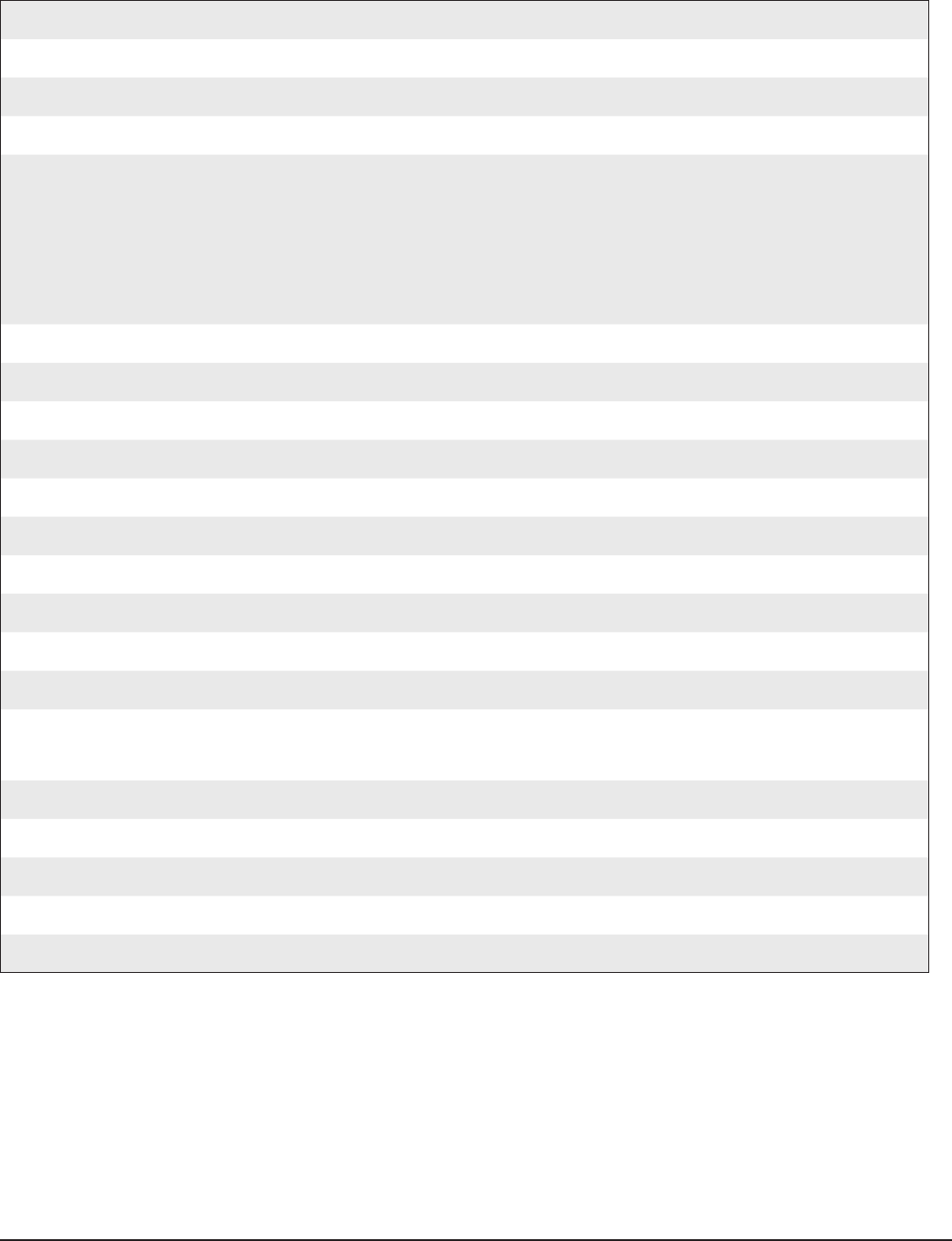
53
MICRO GRANDE DIGITAL PIANO
Specications
Keyboard 88 Key, Advanced Balanced Graded Hammer Action, Velocity Sensitive
Sound Source 3D and Stereo Deluxe Instrument Samples
Polyphony 64 Note Polyphony
Preset Tones 128 GM (General MIDI Voices)
Function Tune, Transpose, MIDI Functions, Demo, Chorus (8 types), Reverb (8 types), Song
(Left Hand and Right Hand), Layer, Split, Upper, Lower, Arpeggio, One Touch, Auto
Bass Chord (Fingered Single, Fingered, Piano Mode), Harmony (Duet, Arpeggio,
Repeat), Synchro, Fill In 1, Fill in 2, Intro/Ending, Touch Control, 36 Registration
Memories (6 banks of 6 registration keys), Local
Rhythm Styles 100 Styles with Variations, Tempo Range 40 to 240
Controls Mic Volume, Master Volume, Accompaniment Volume, Tempo (+,-)
Touch Control Soft, Normal, Hard, Fixed
Master Tuning +/– 50 Cents
Digital Effects Digital Reverb (Various Types)
Metronome Tempo Range 40 to 240
Power Output 60W x 2
Recorder 3 Track, Direct Save/Load to SD (Secure Digital) Card with SMF Format, Delete Track
Pedals Soft, Sustain, Function Programmable
Speakers 6 Speaker, Stereo Sound Delivery System
Connections Mic Input, Headphone Jack, Audio In, Audio Out, A/C In, MIDI In/Out, USB Port,
iPod Docking Station
Display Dot Matrix LCD, Access and Menu Screens, Cursor, Value (+,-) and Escape
Finish High Gloss Black
Dimensions 55 W x 30 D x 35.5 H (inches)
Weight 165 lbs.
Included Hardware Matching Bench, Power Cable, Owner’s Manual, Demo Disk Card
SPECIFICATIONS SUBJECT TO CHANGE WITHOUT NOTICE

54 OWNER’S MANUAL

55
MICRO GRANDE DIGITAL PIANO
